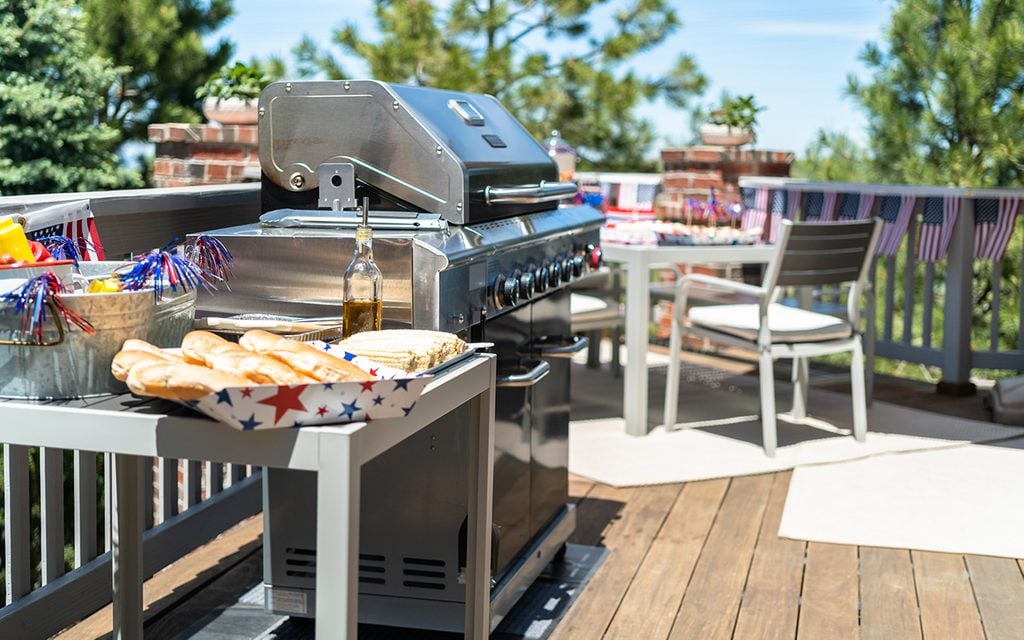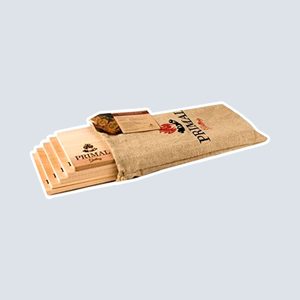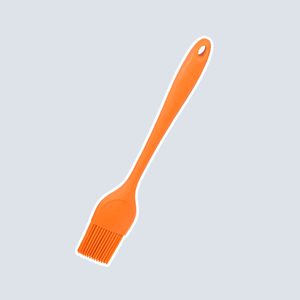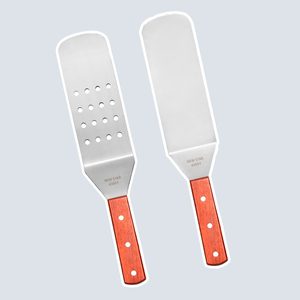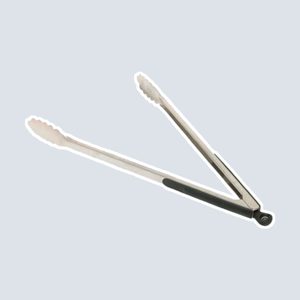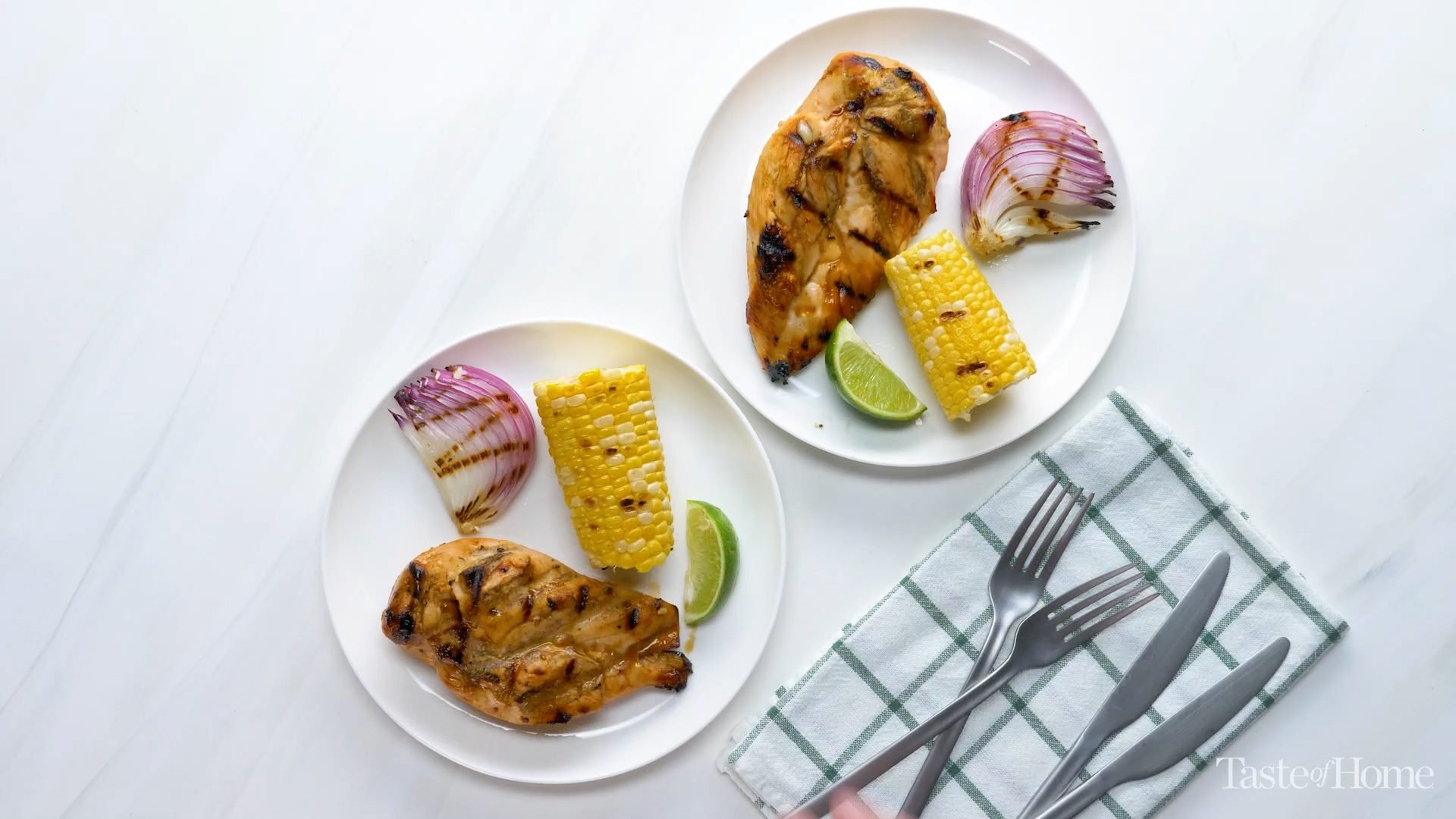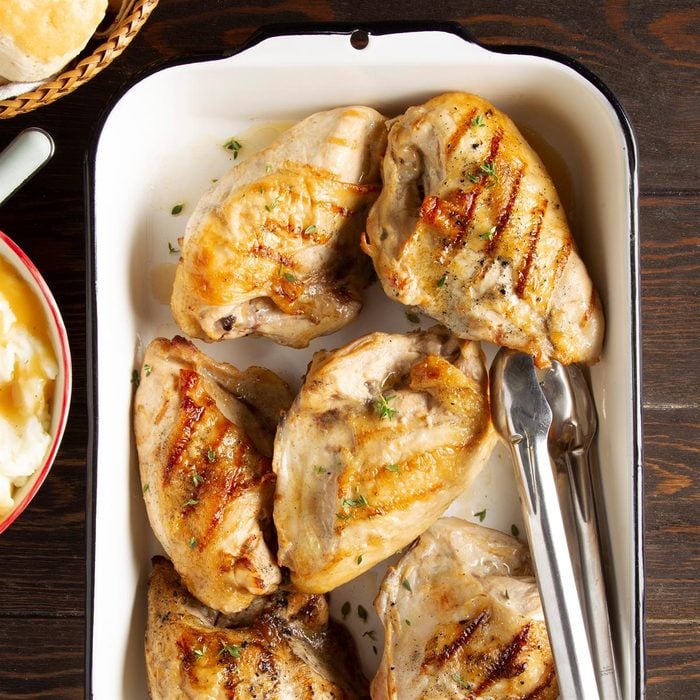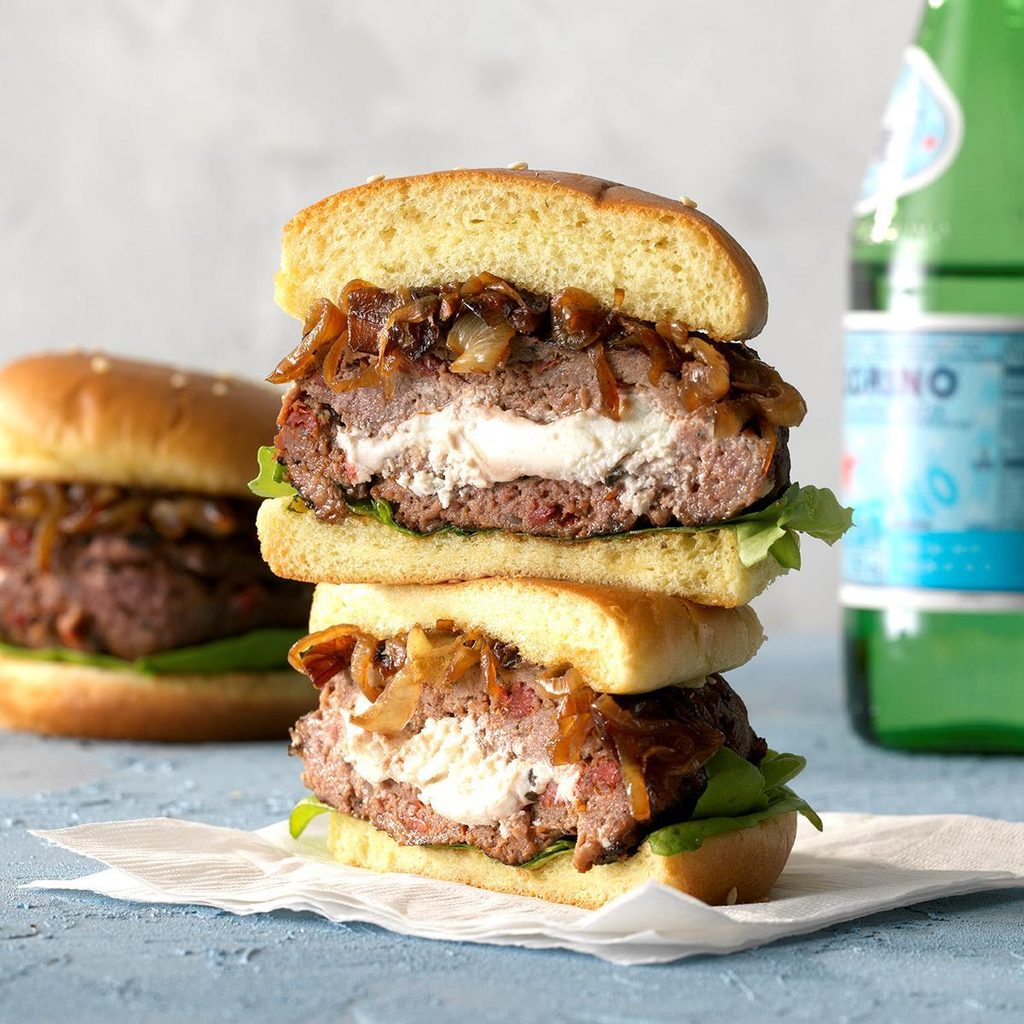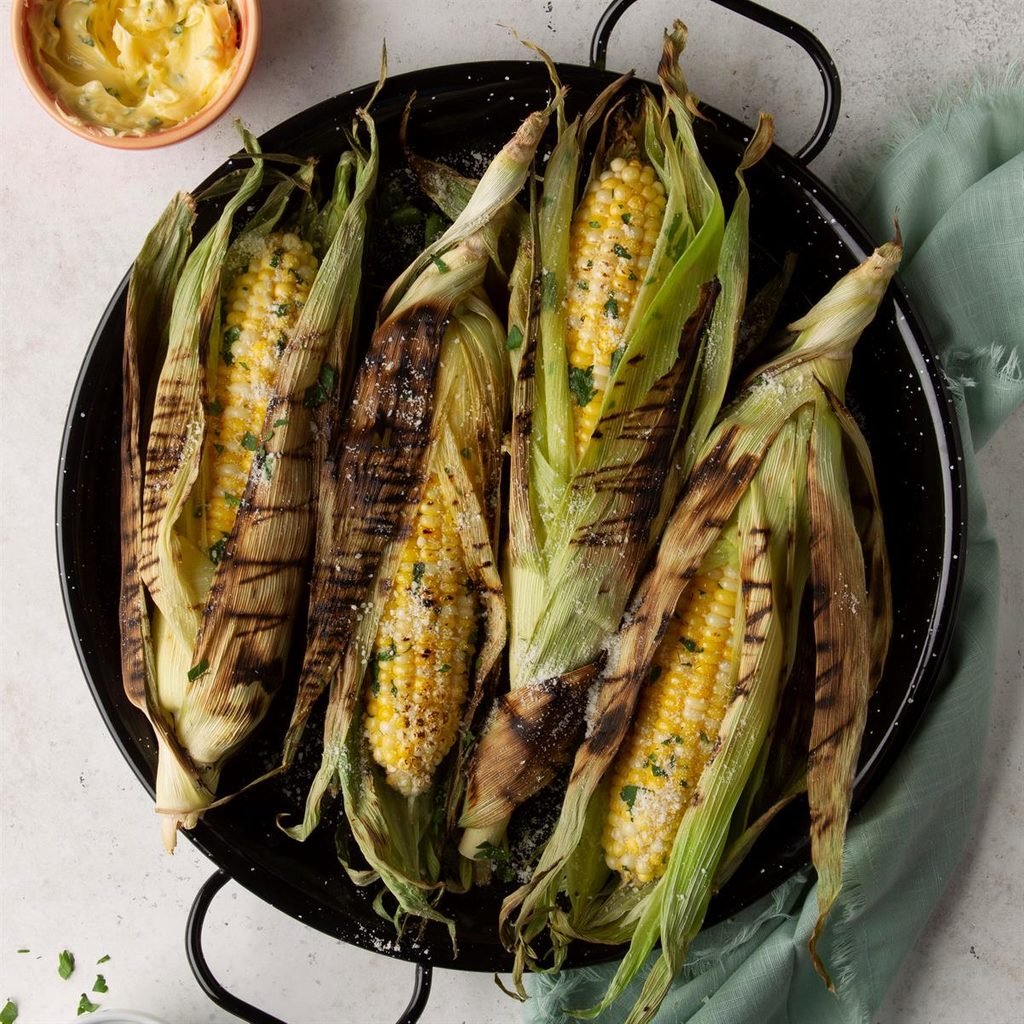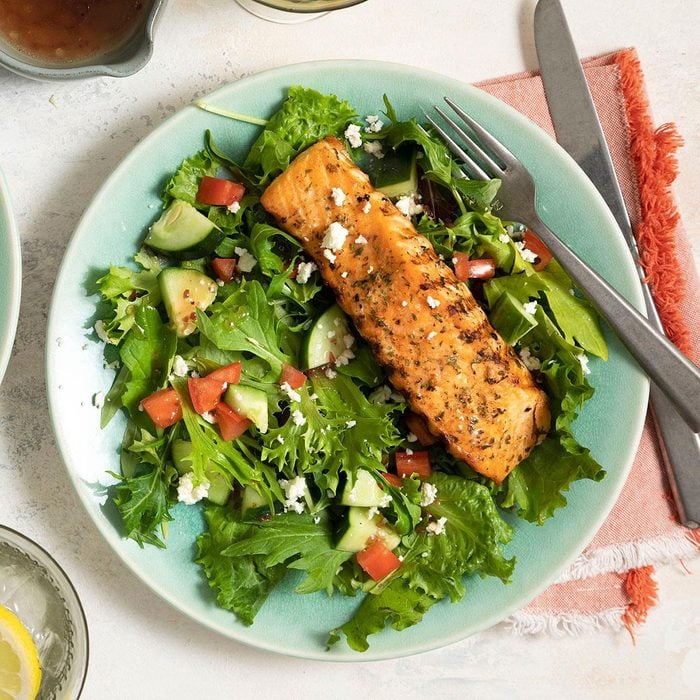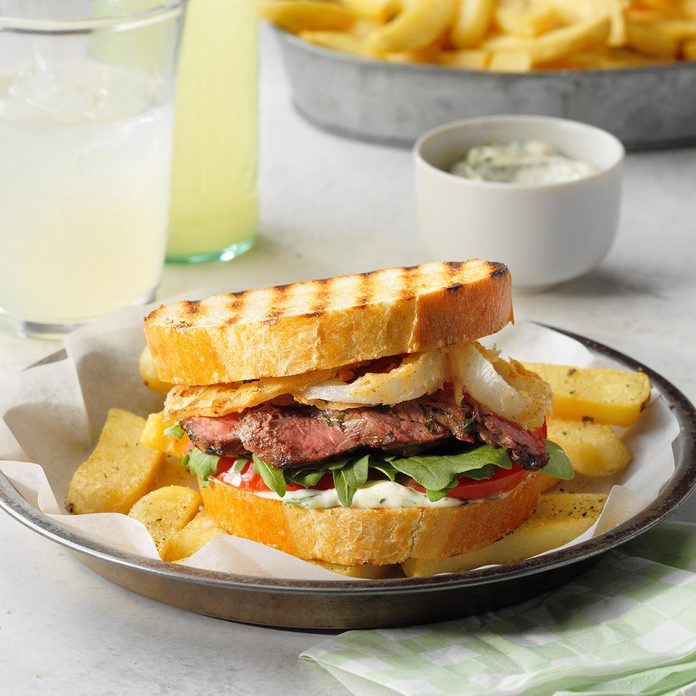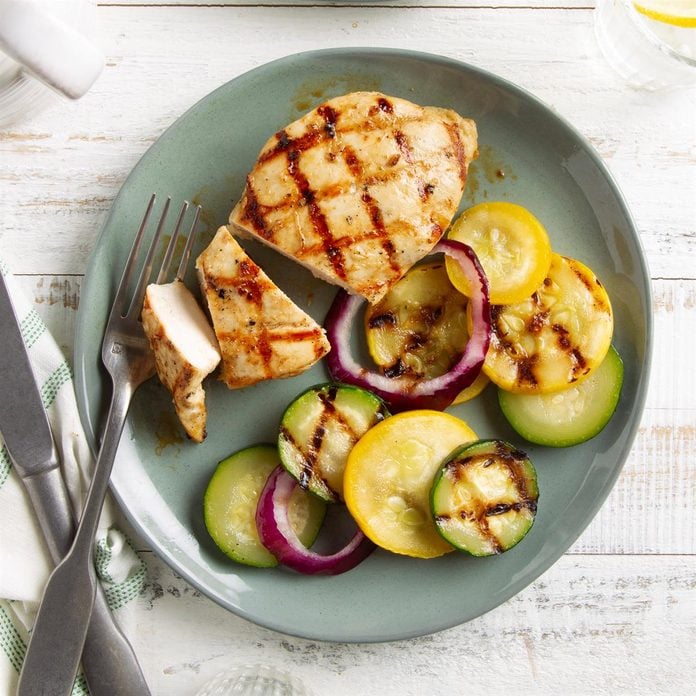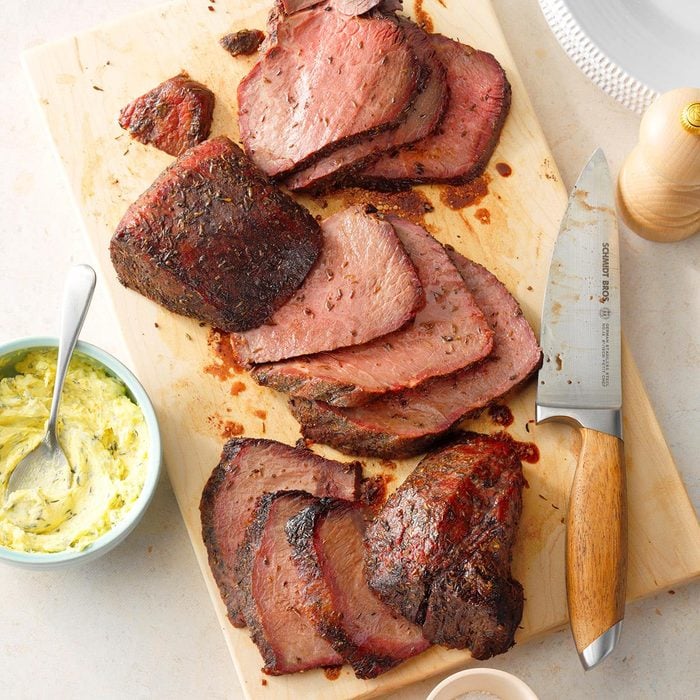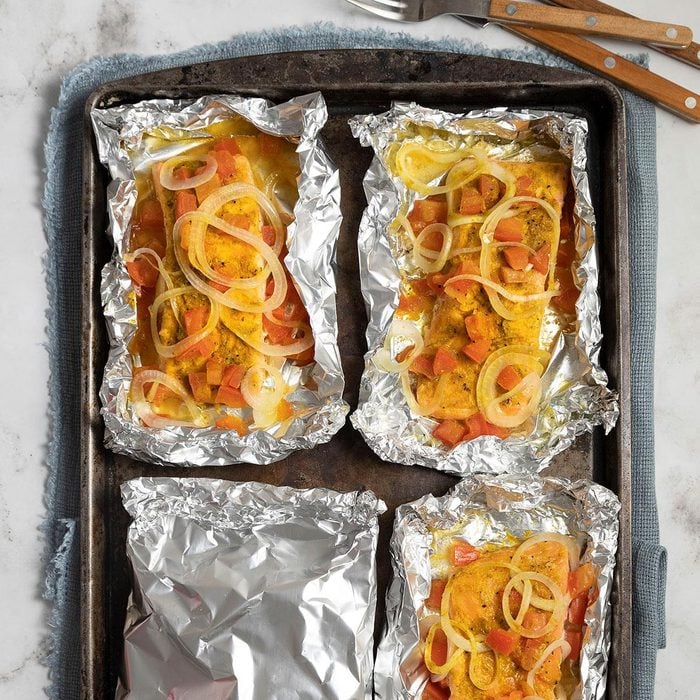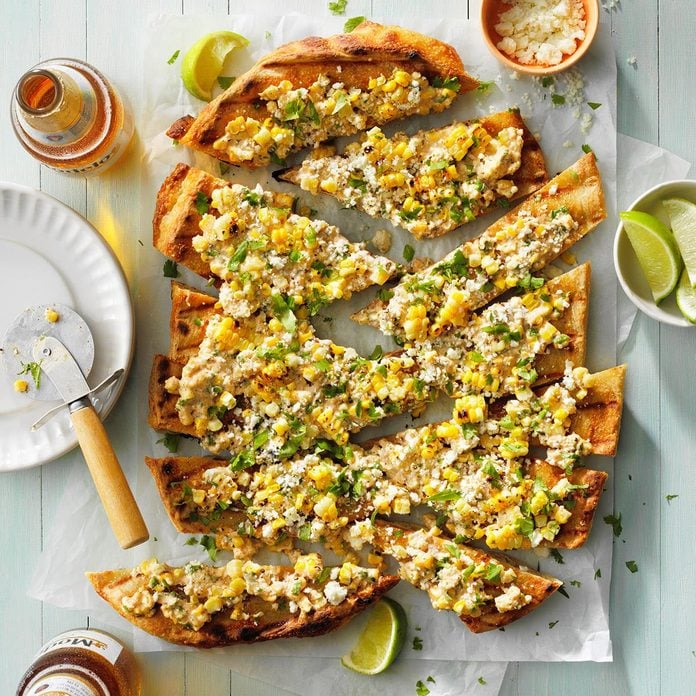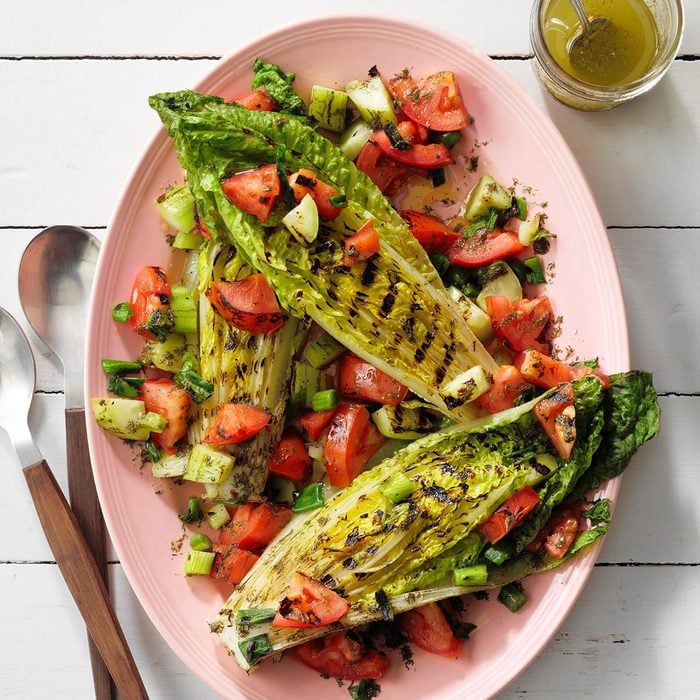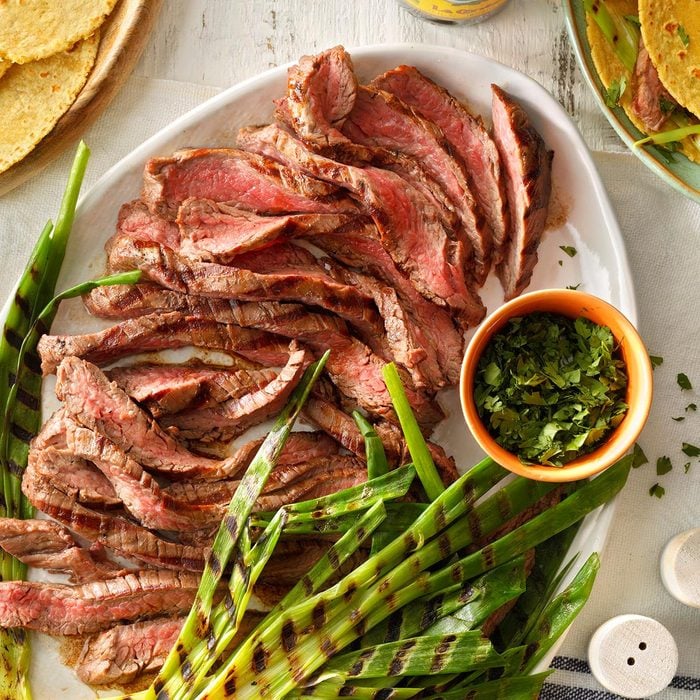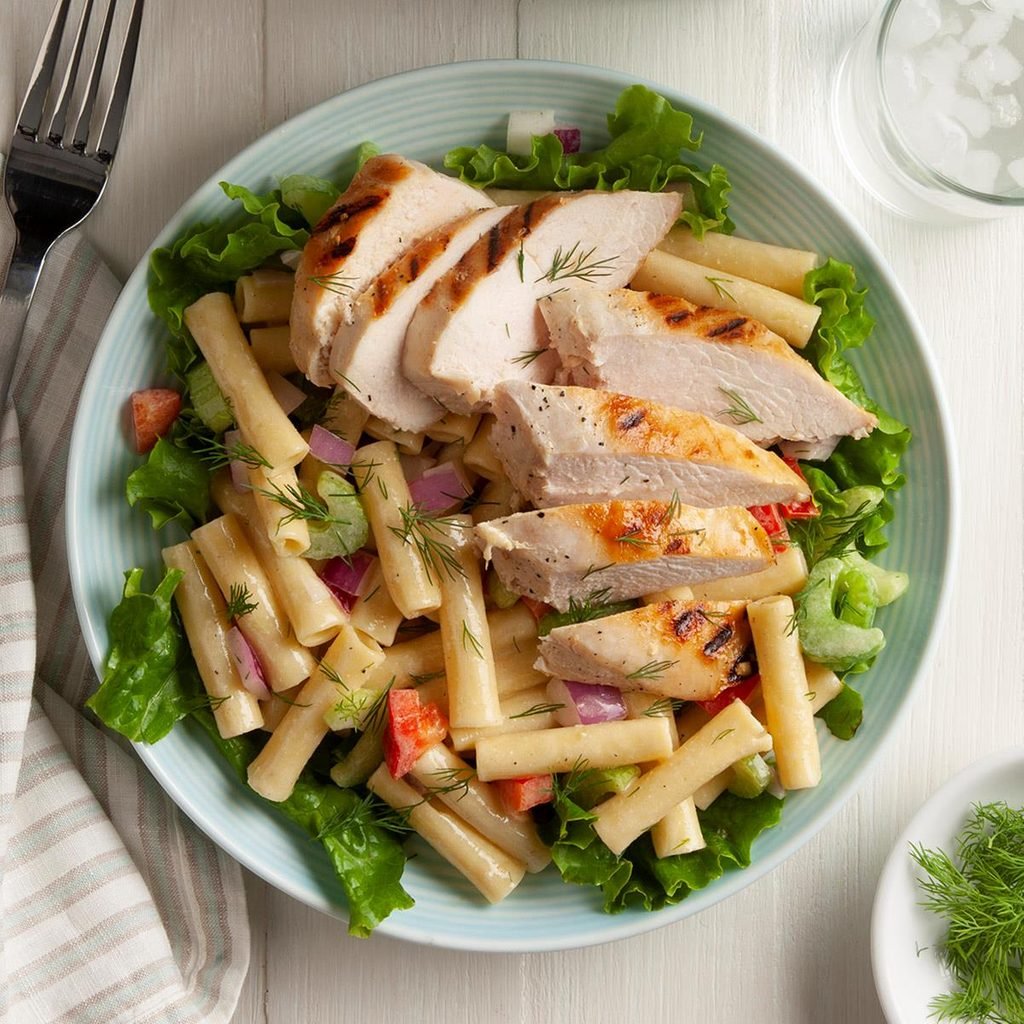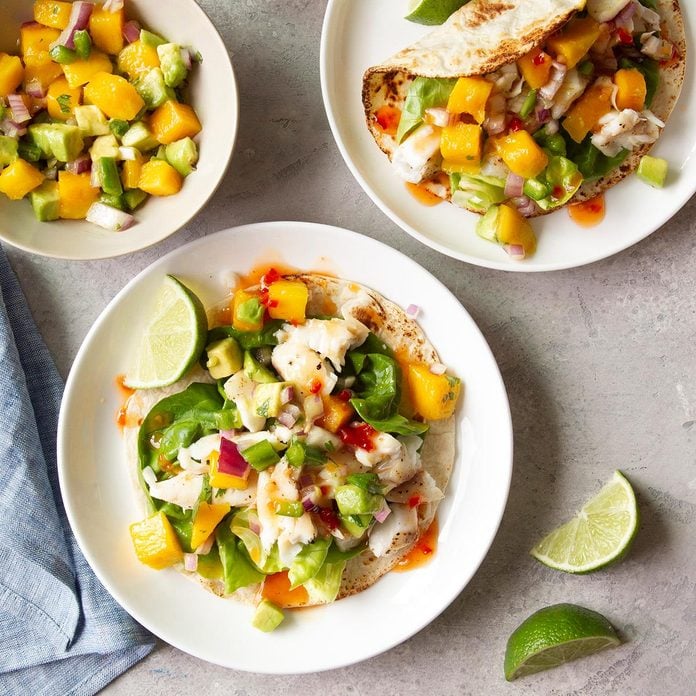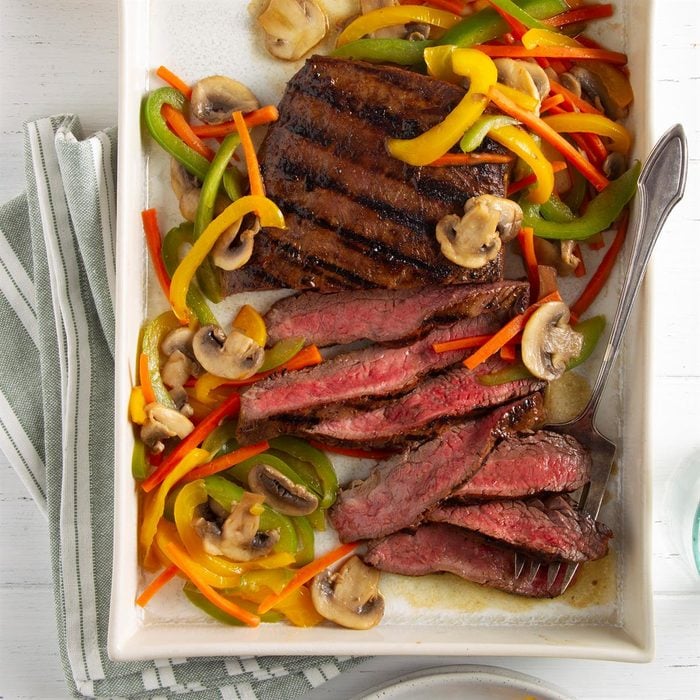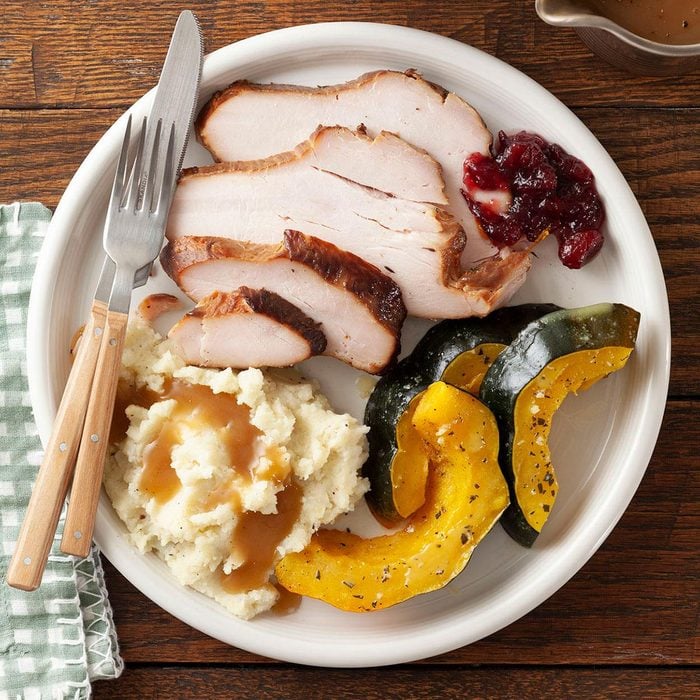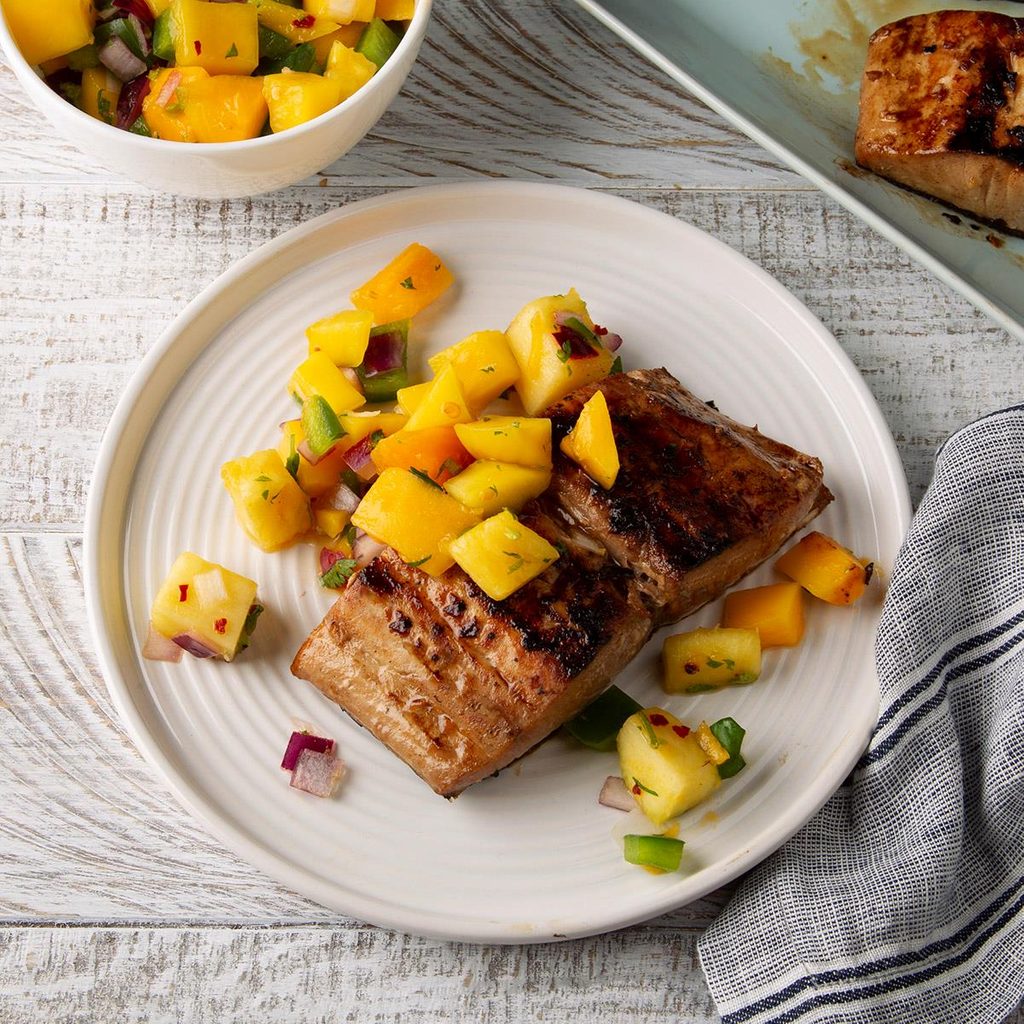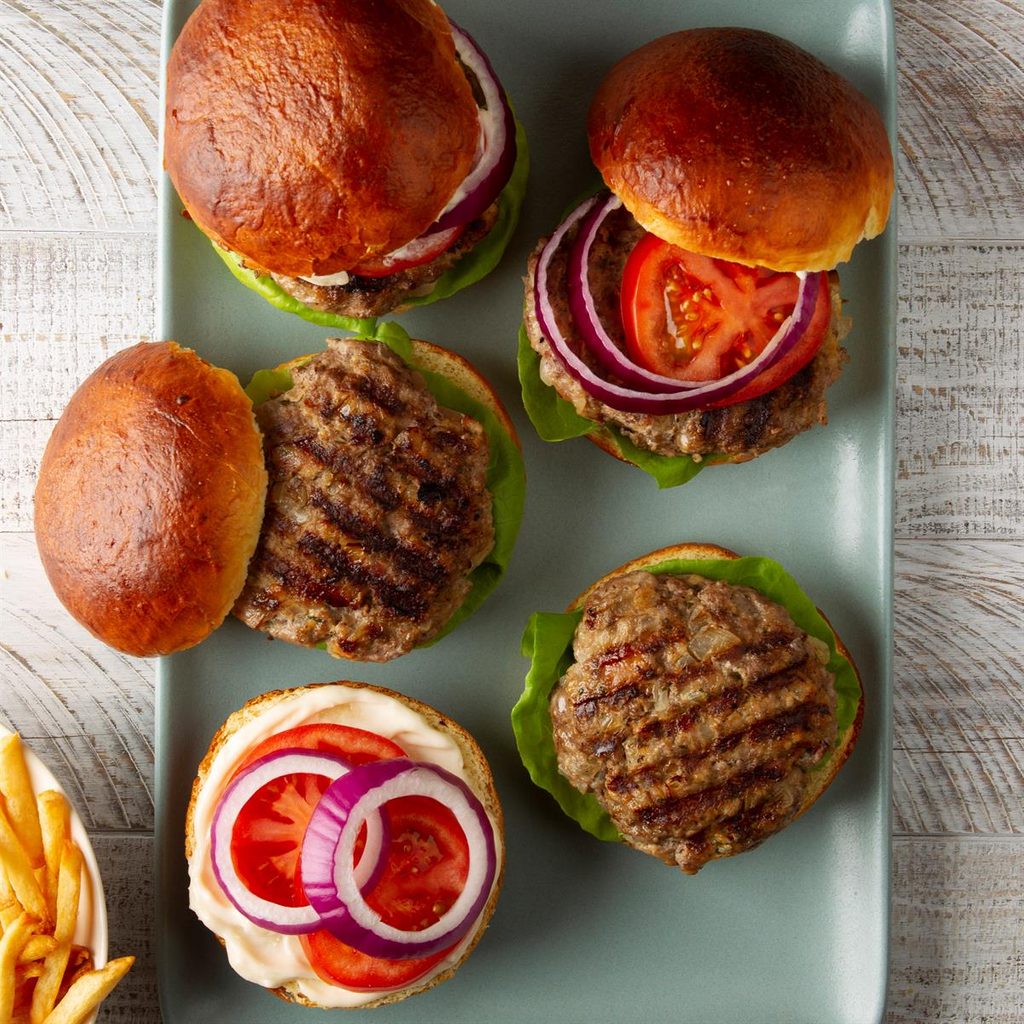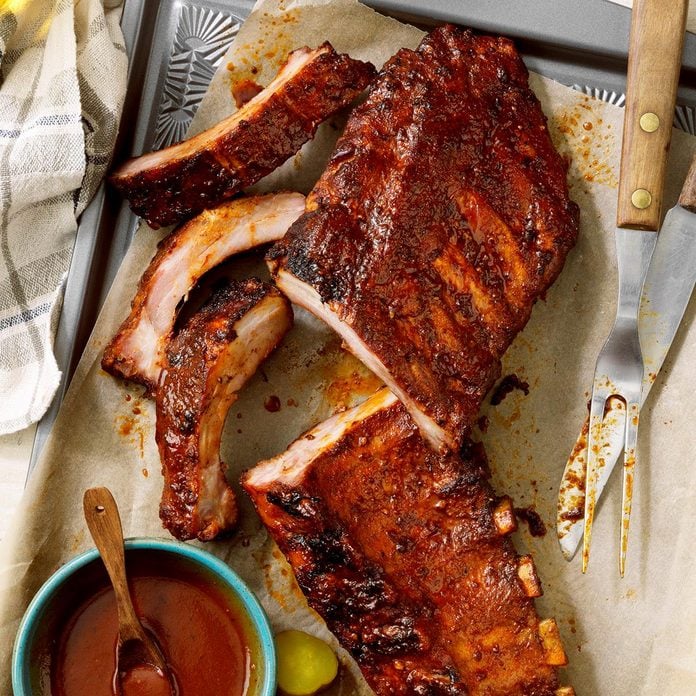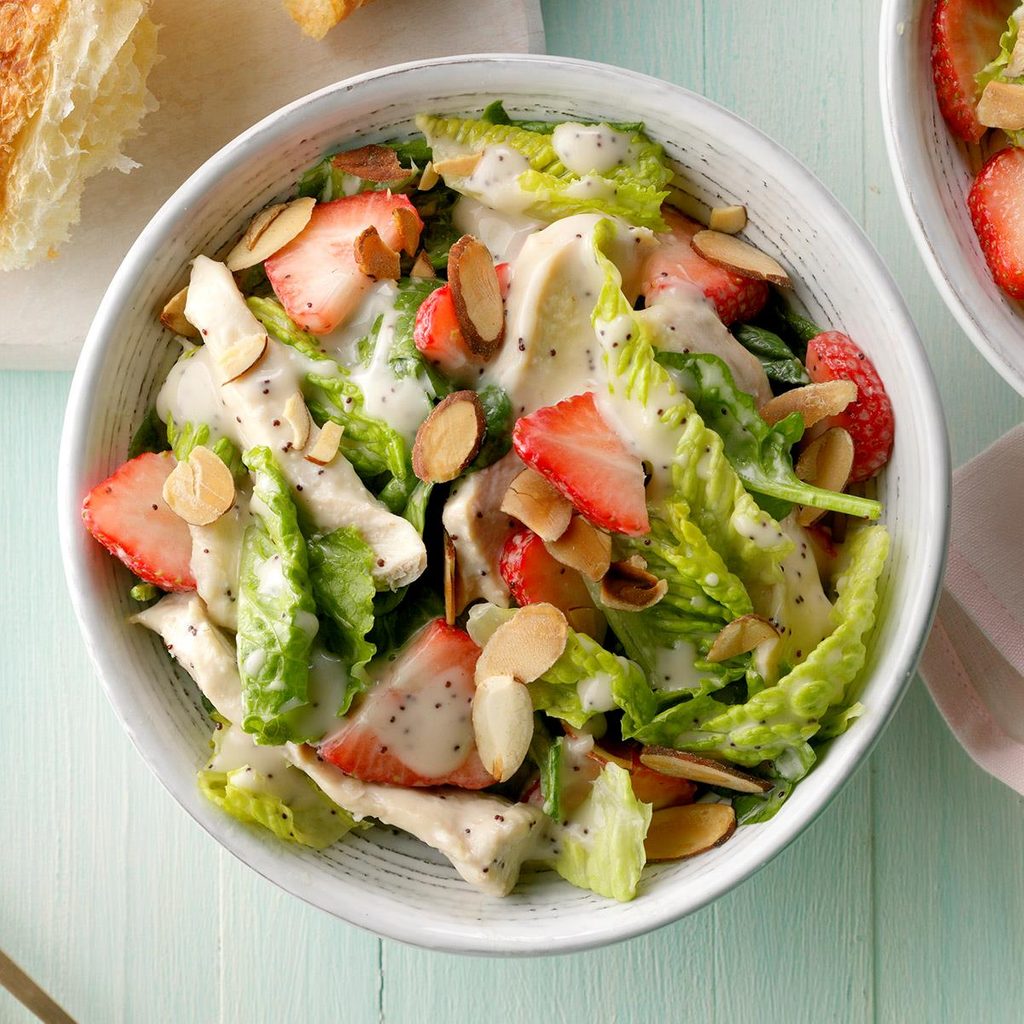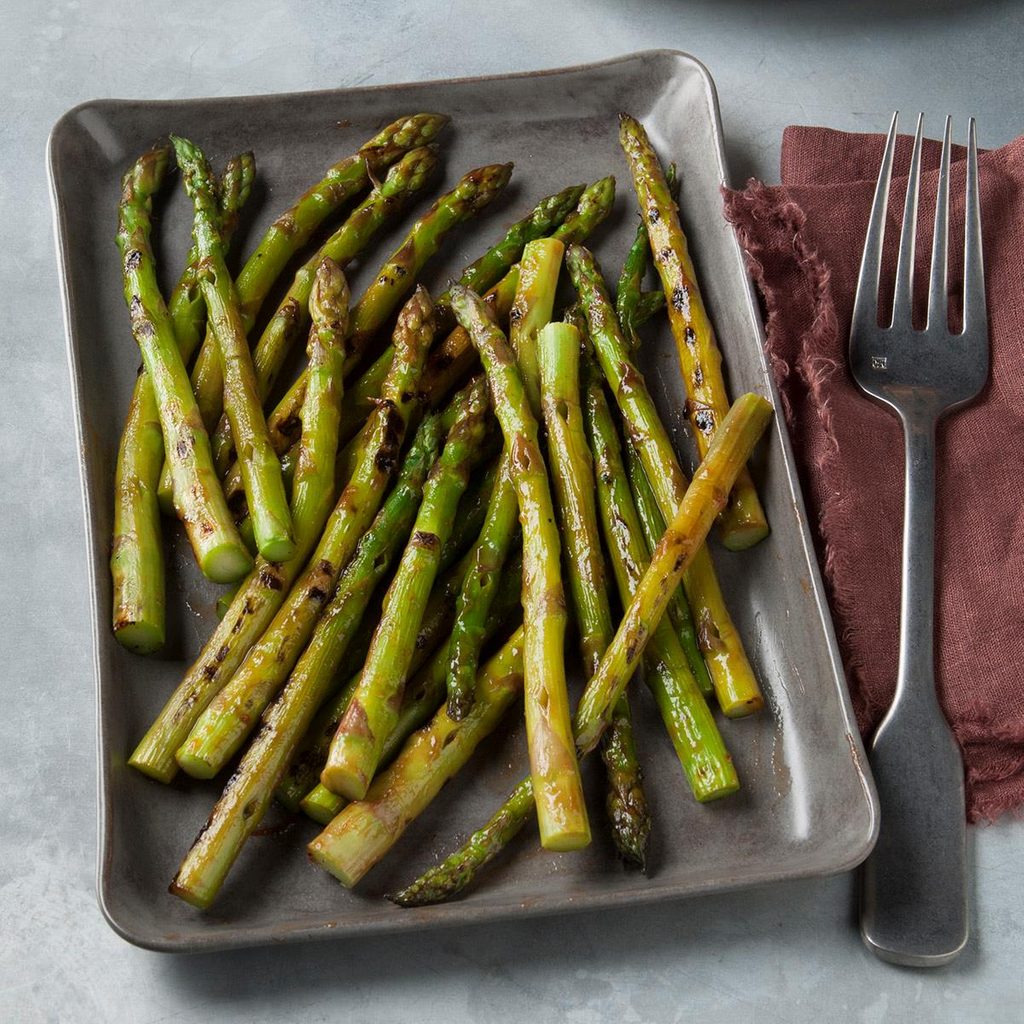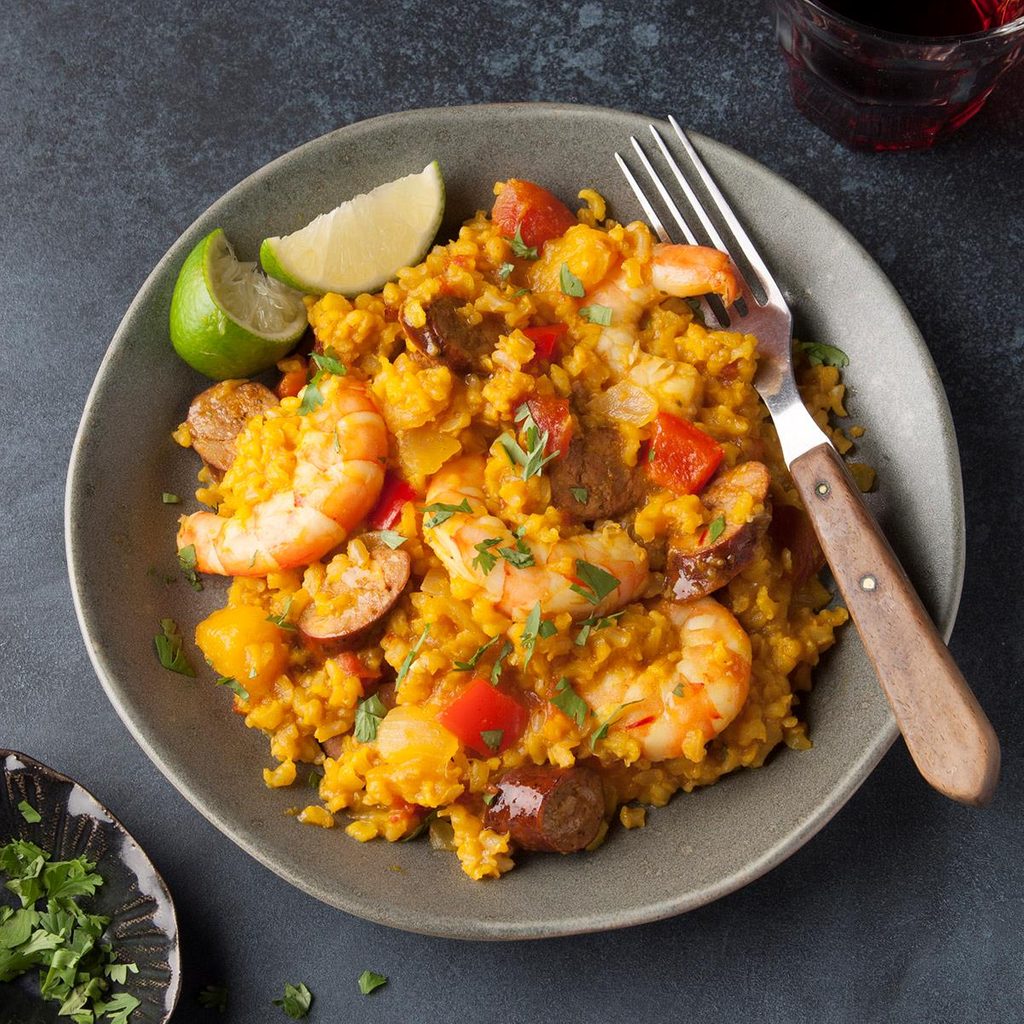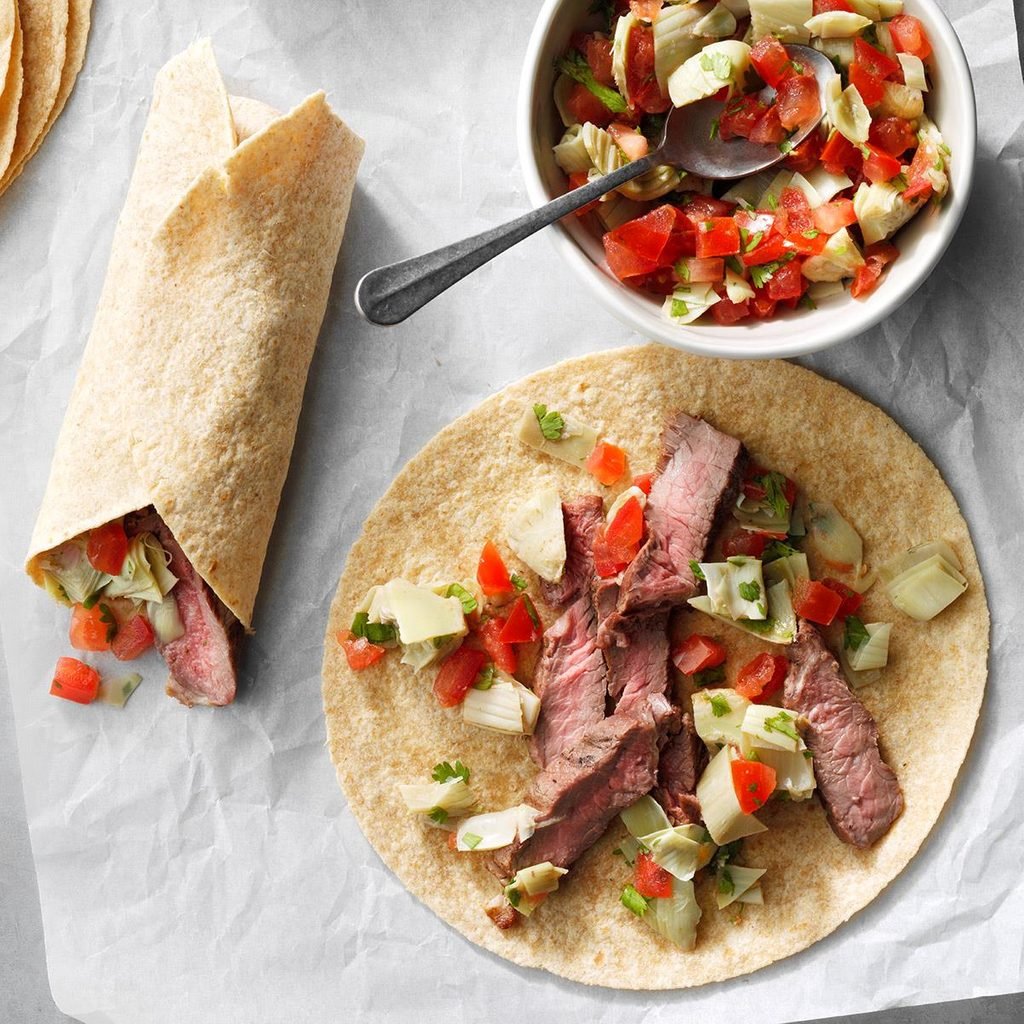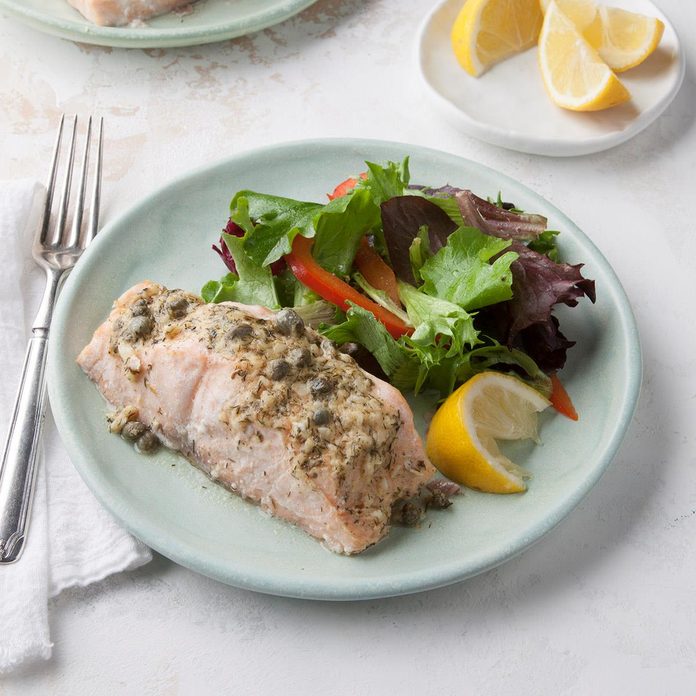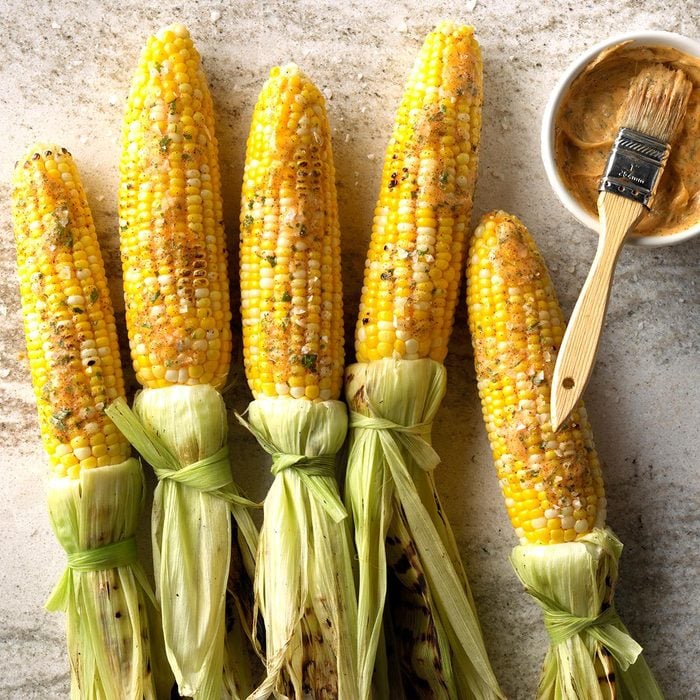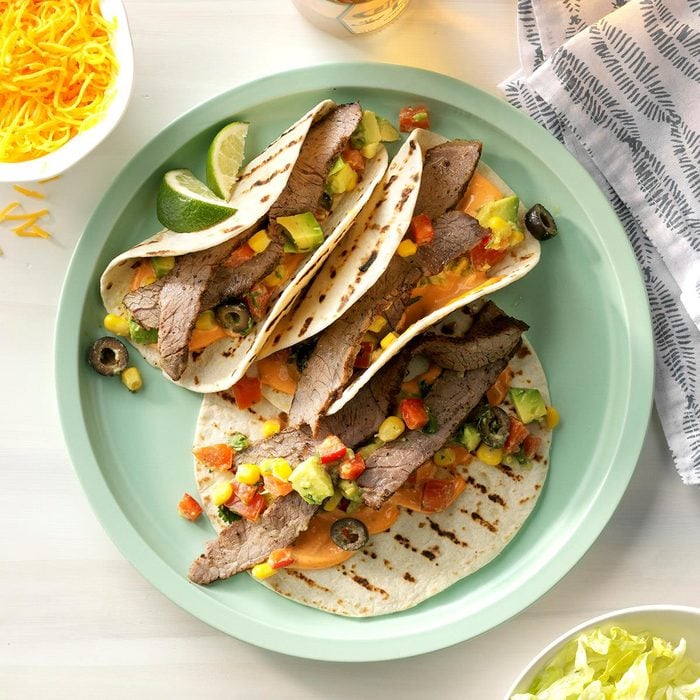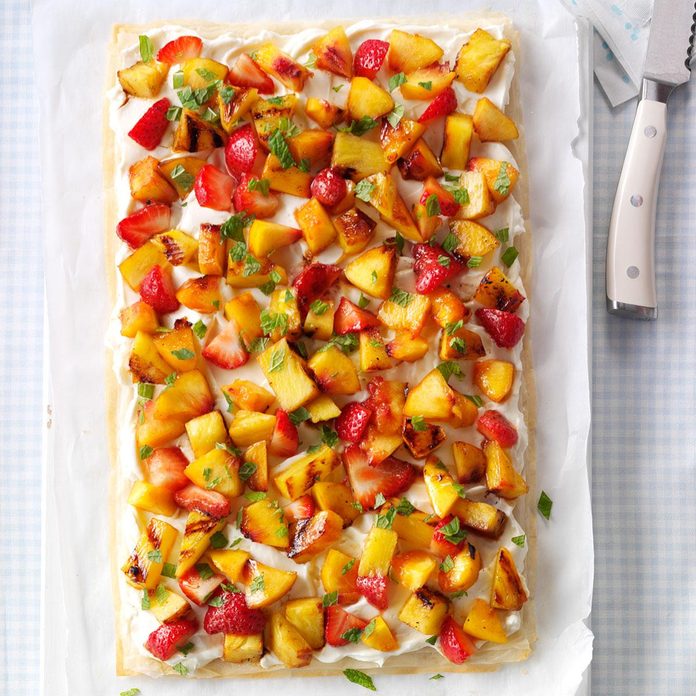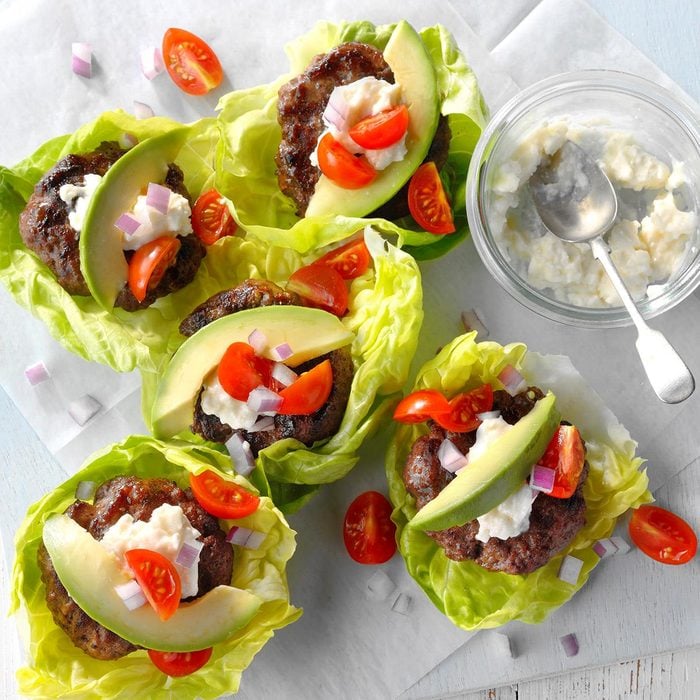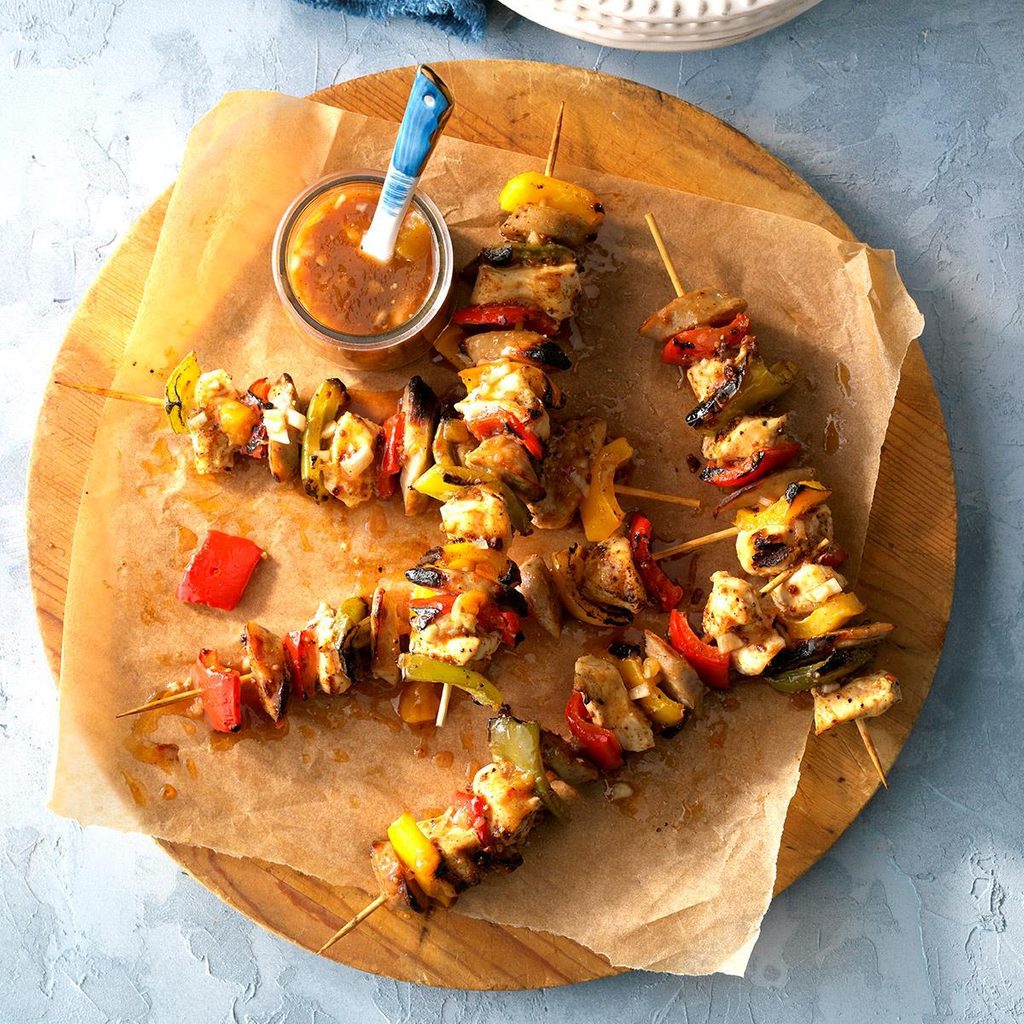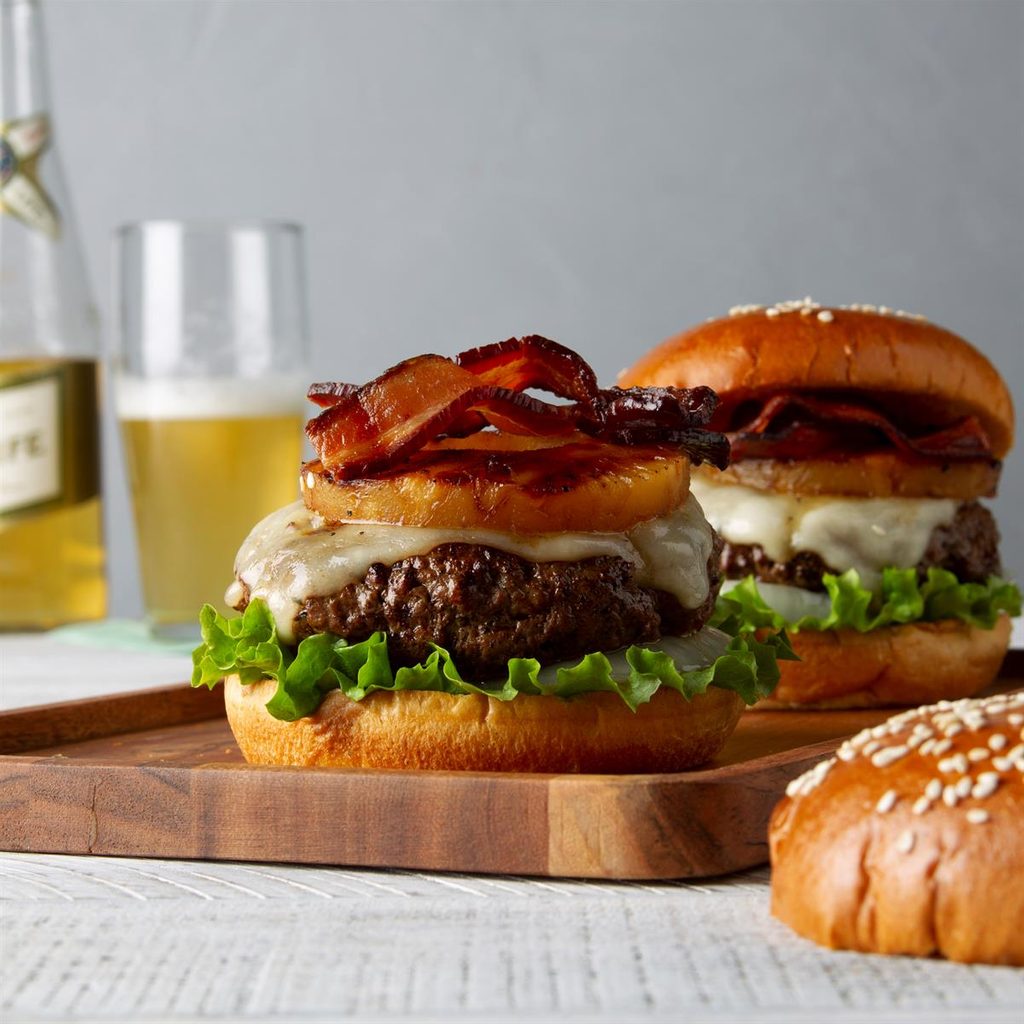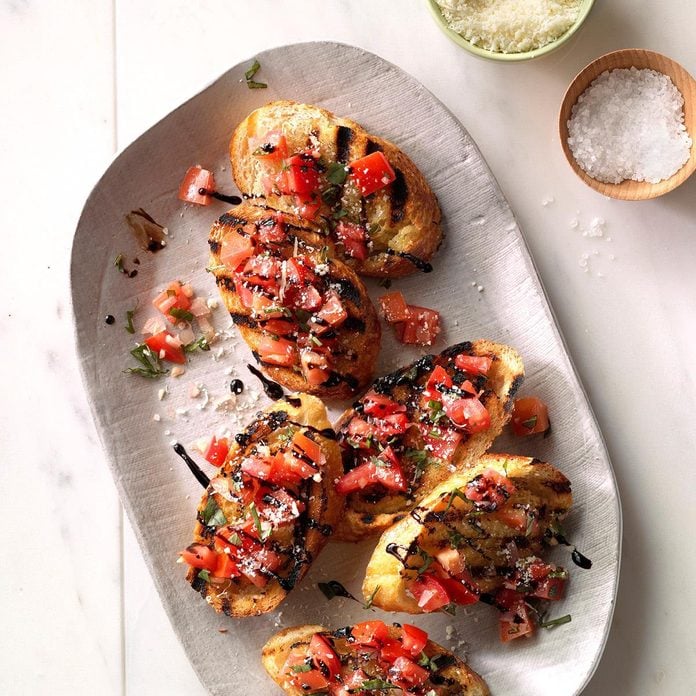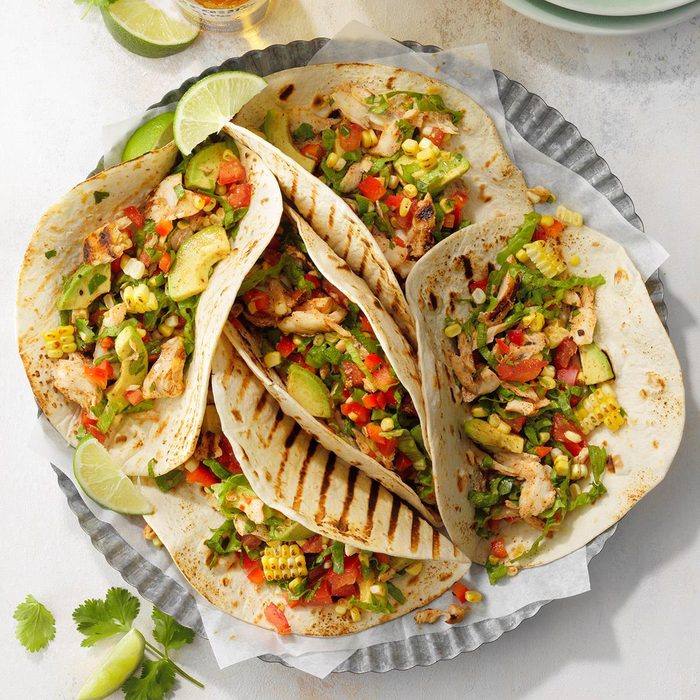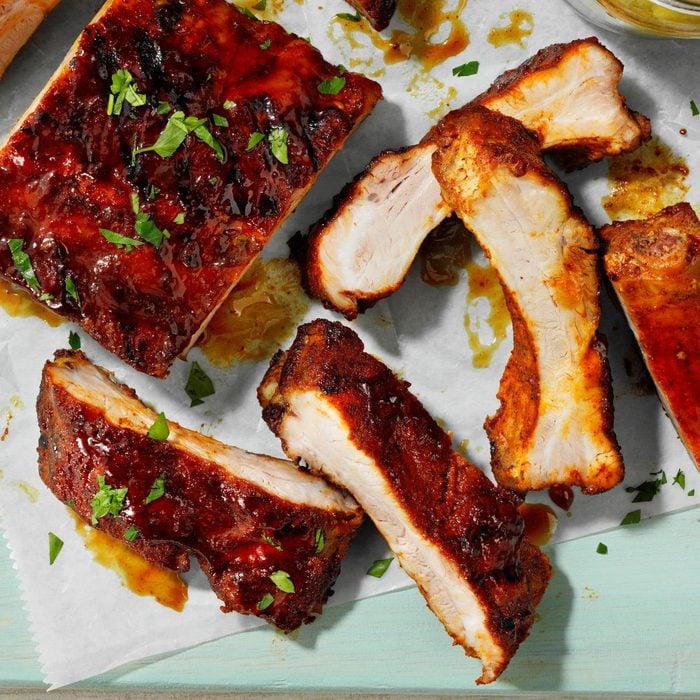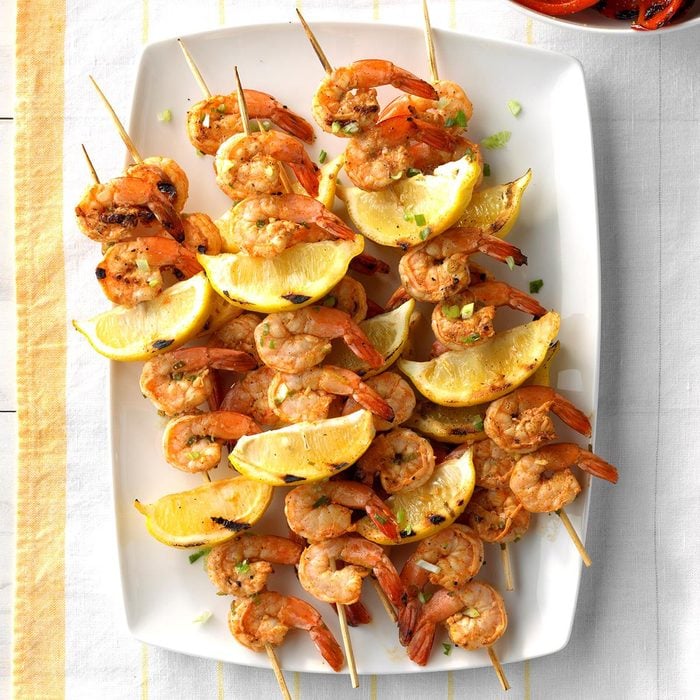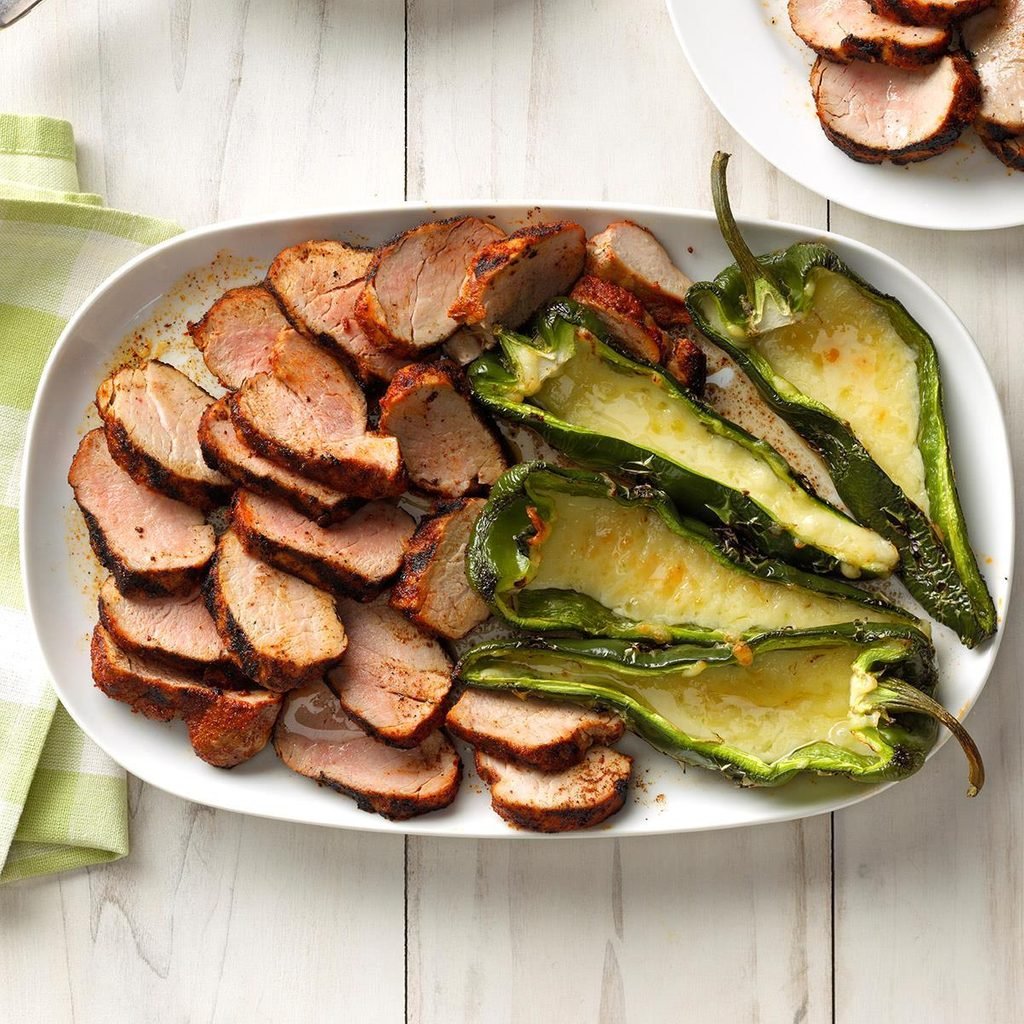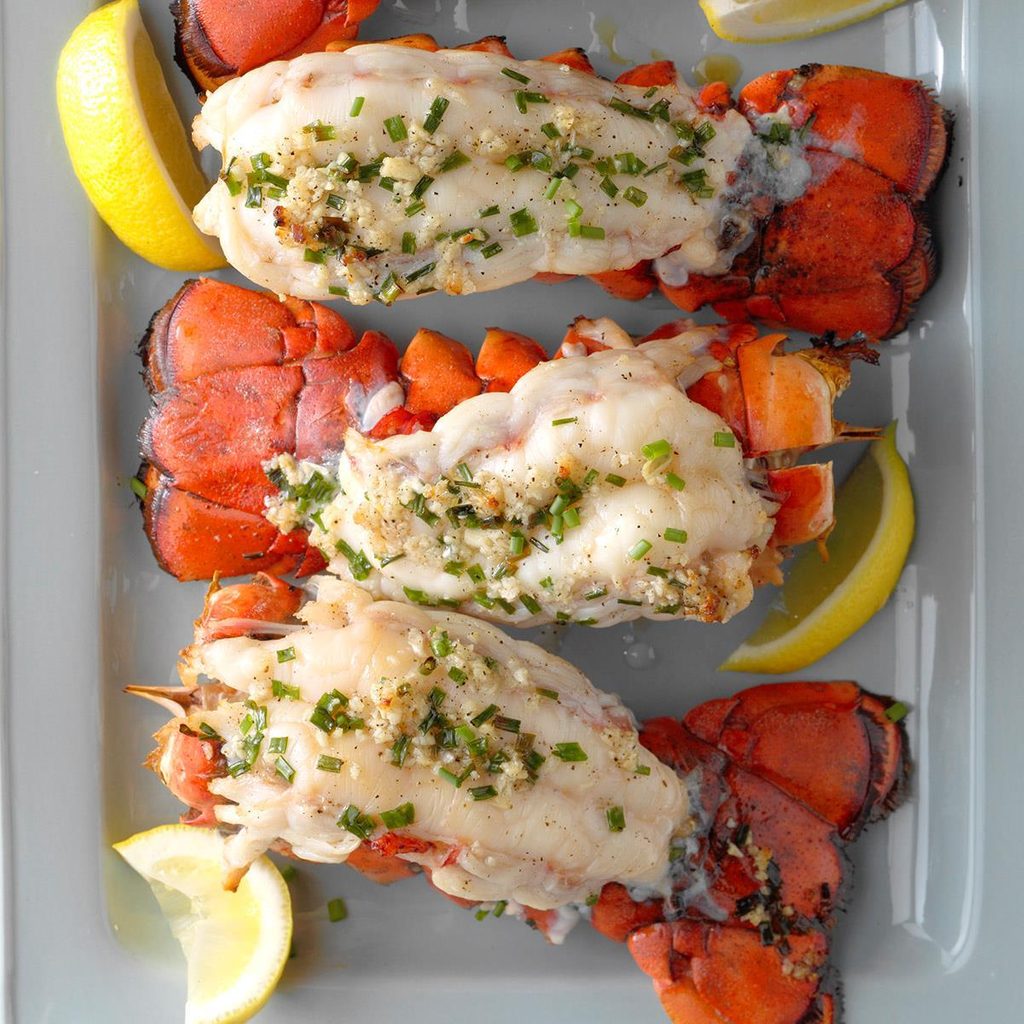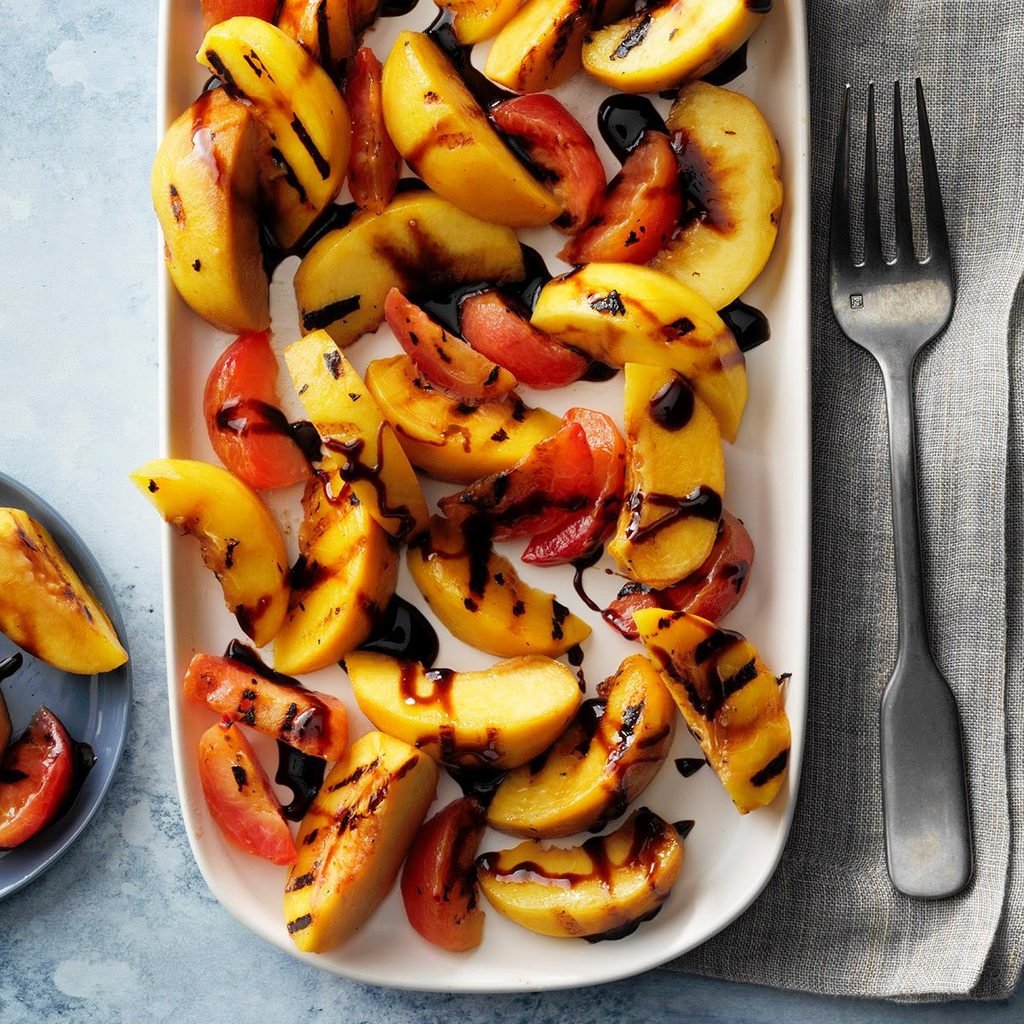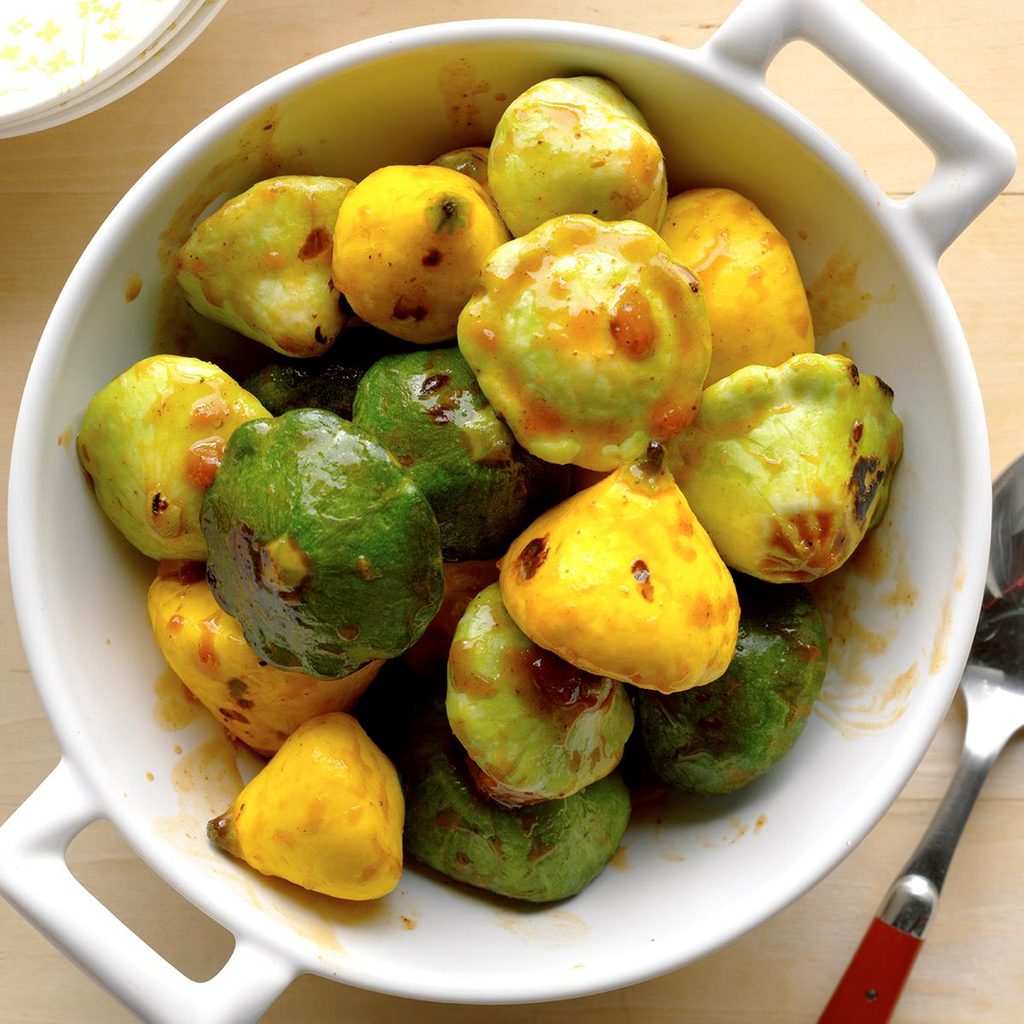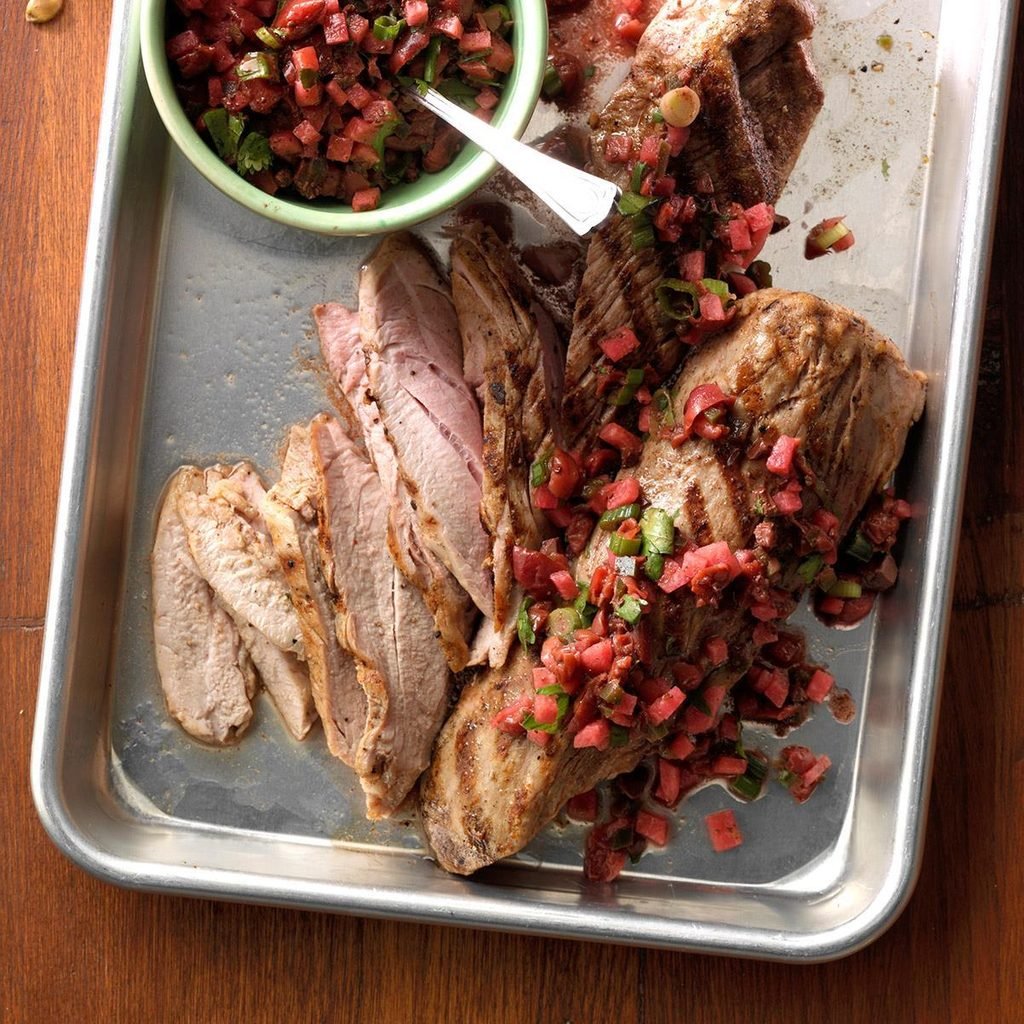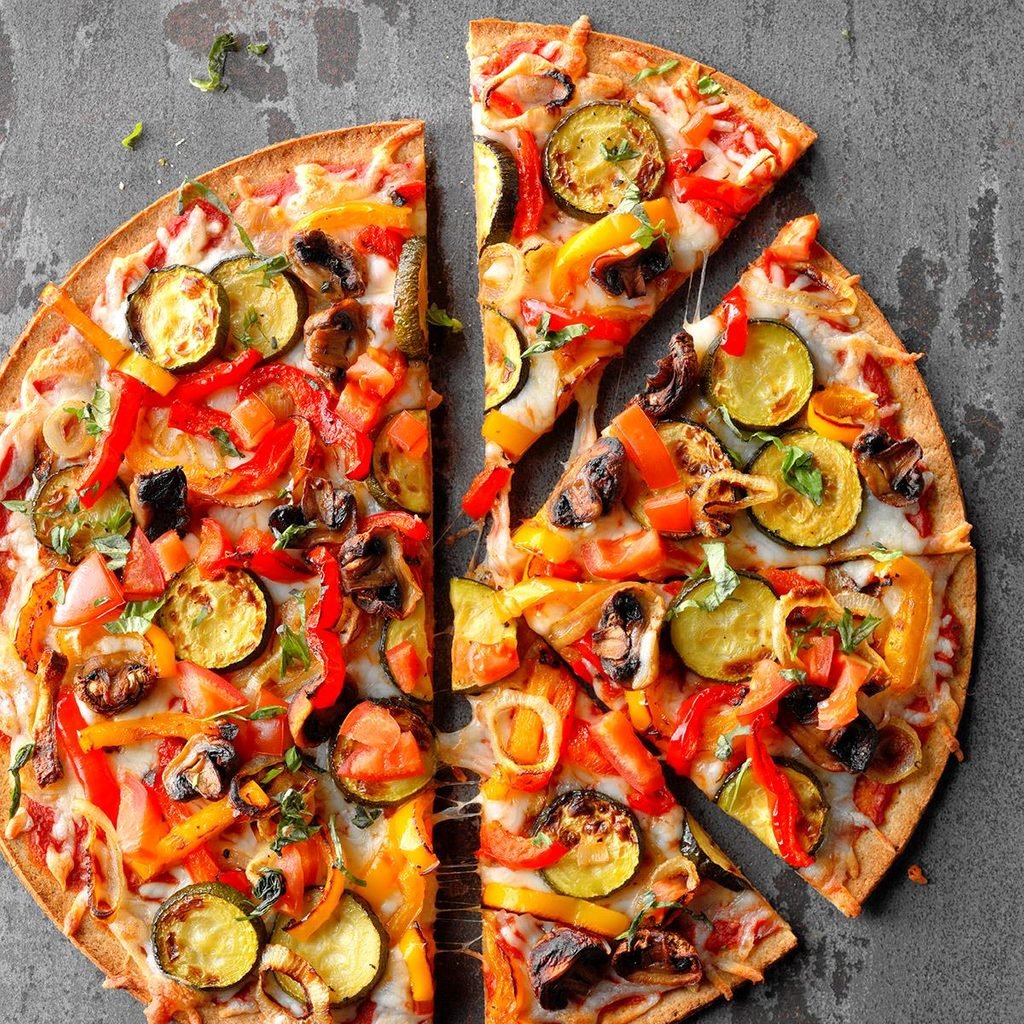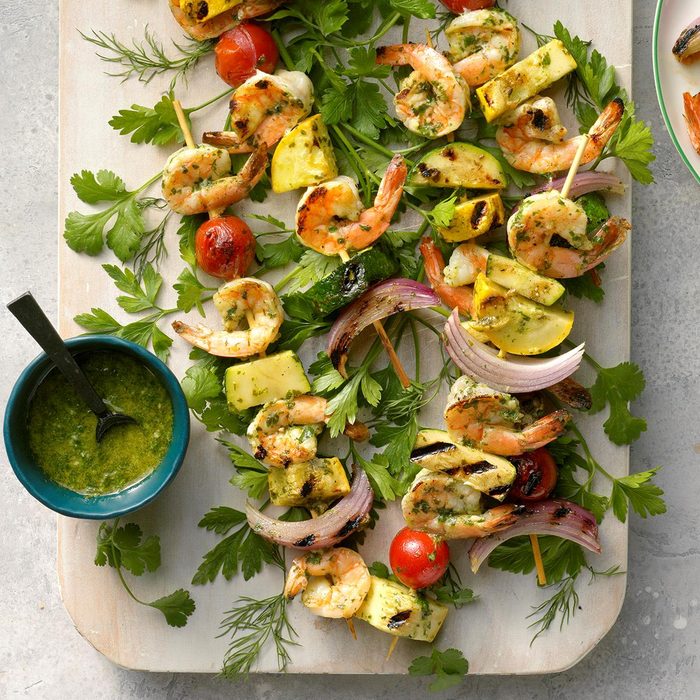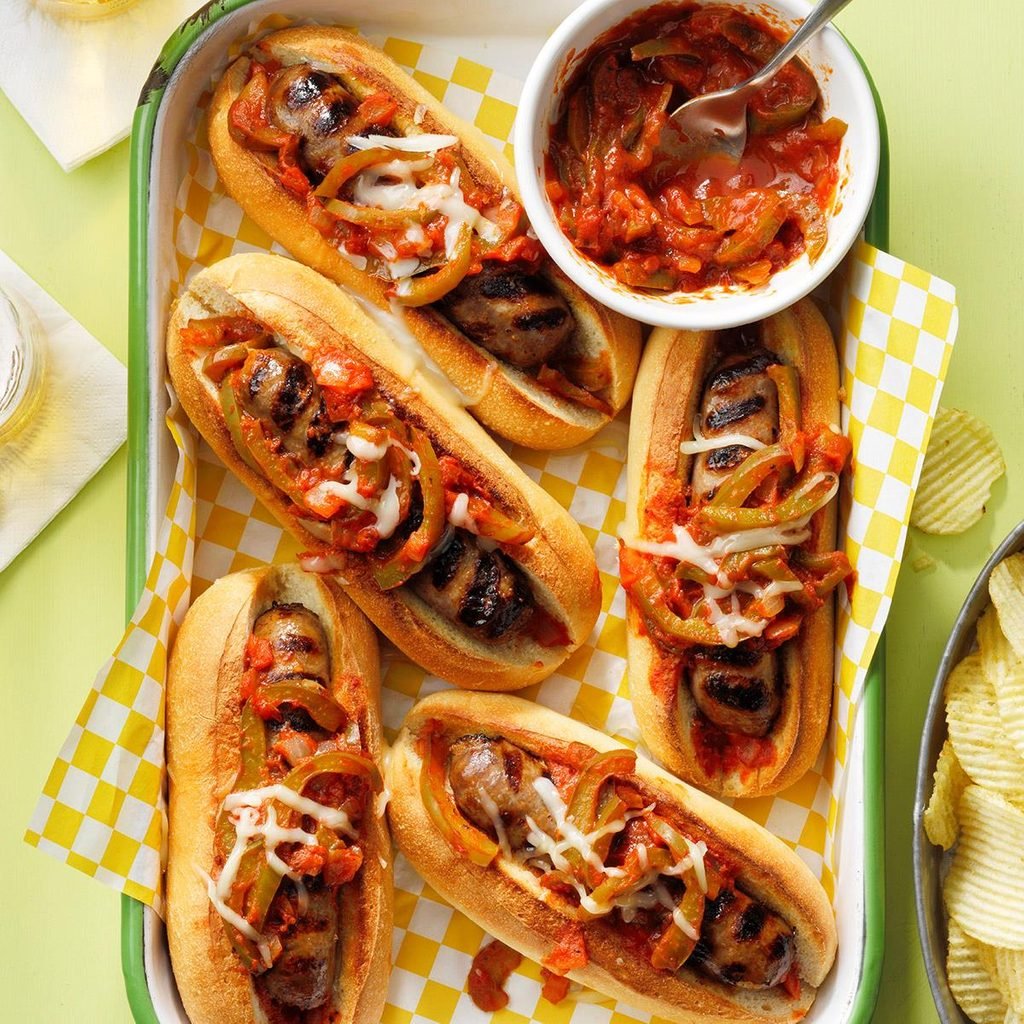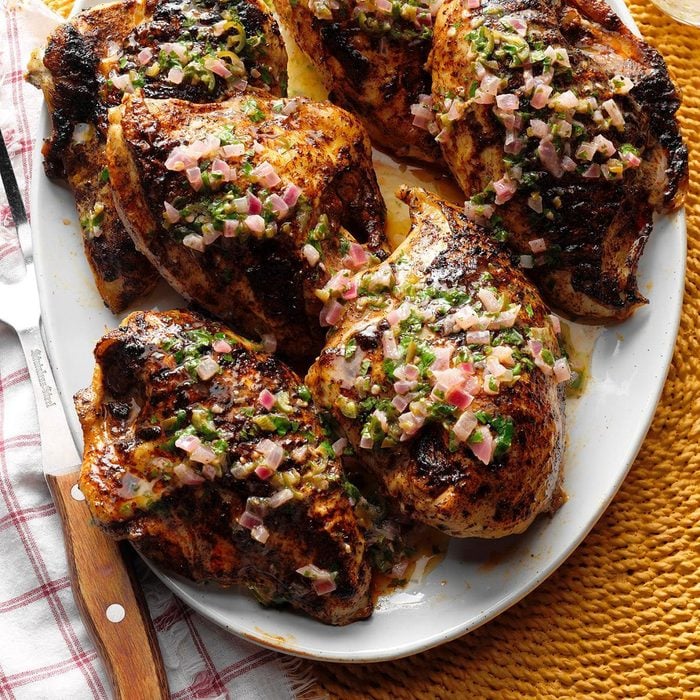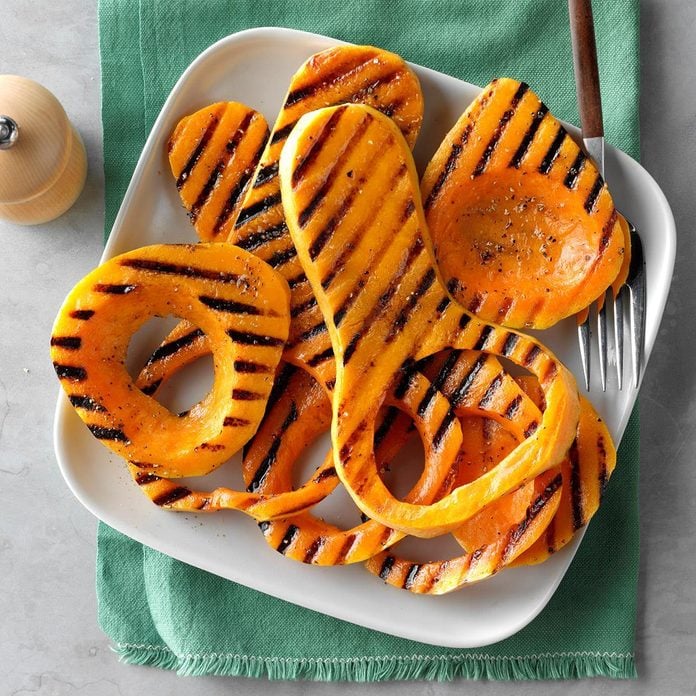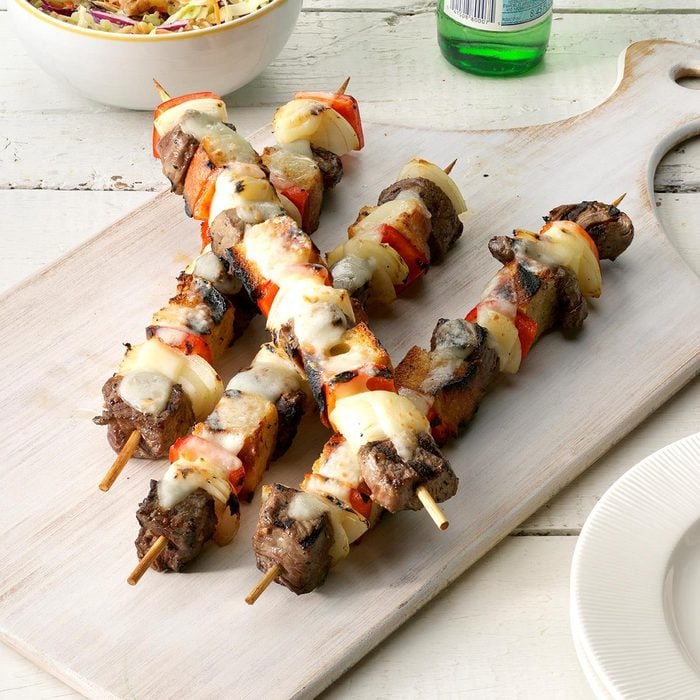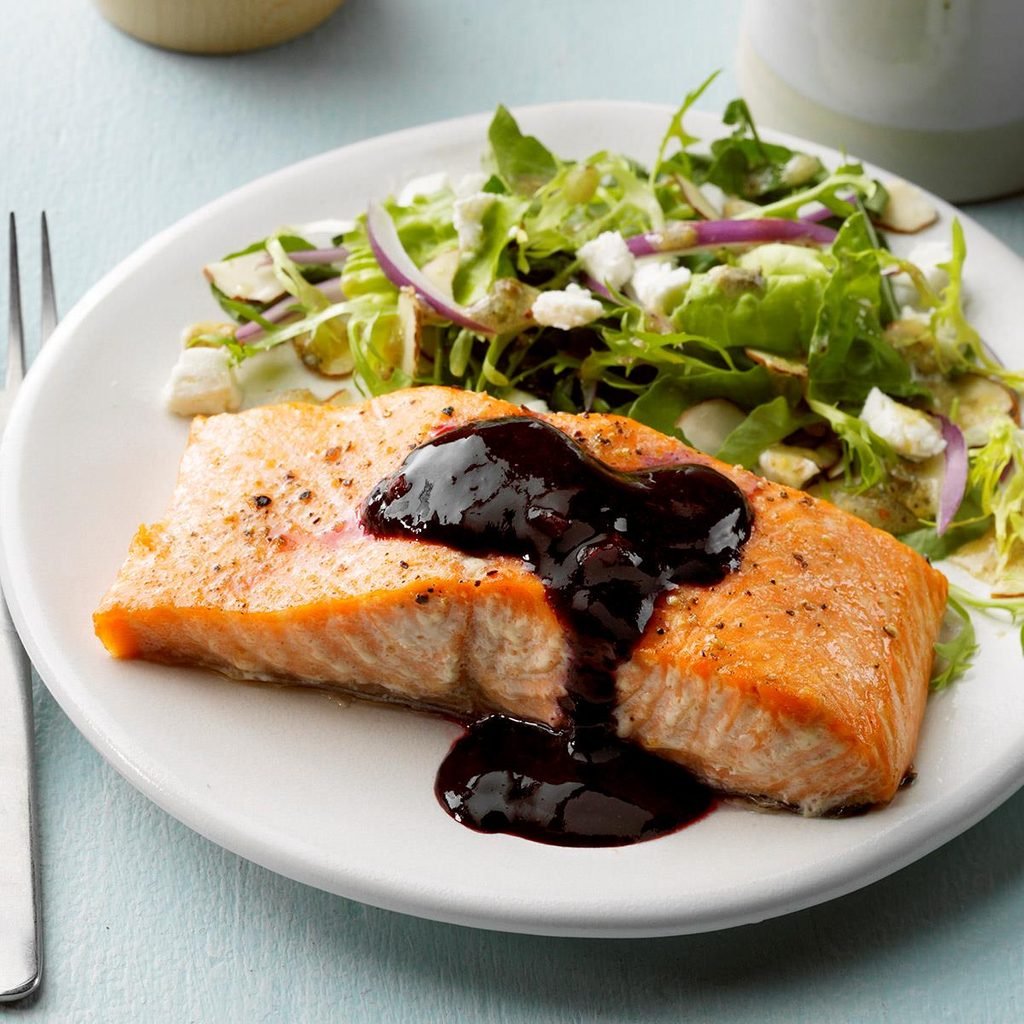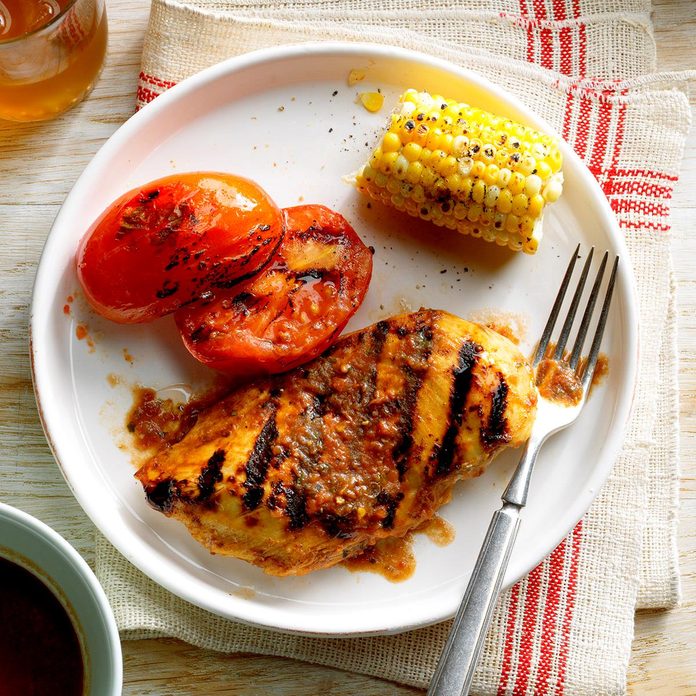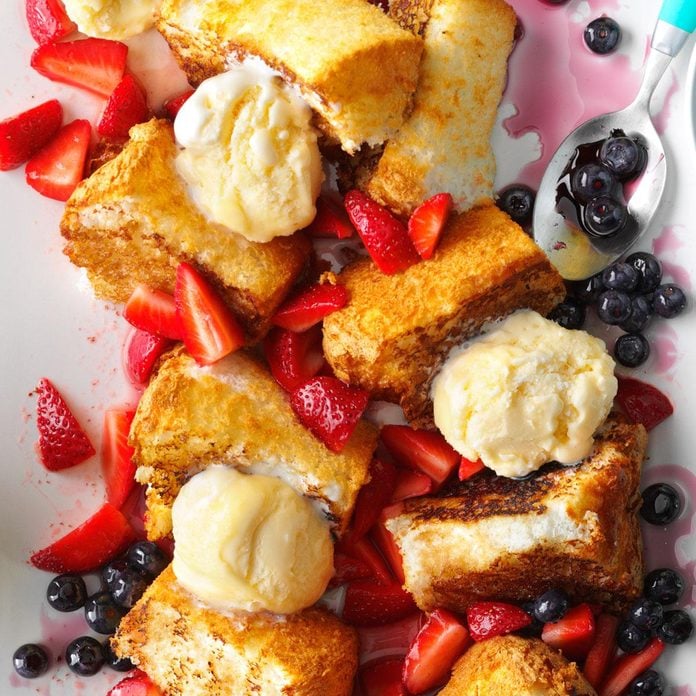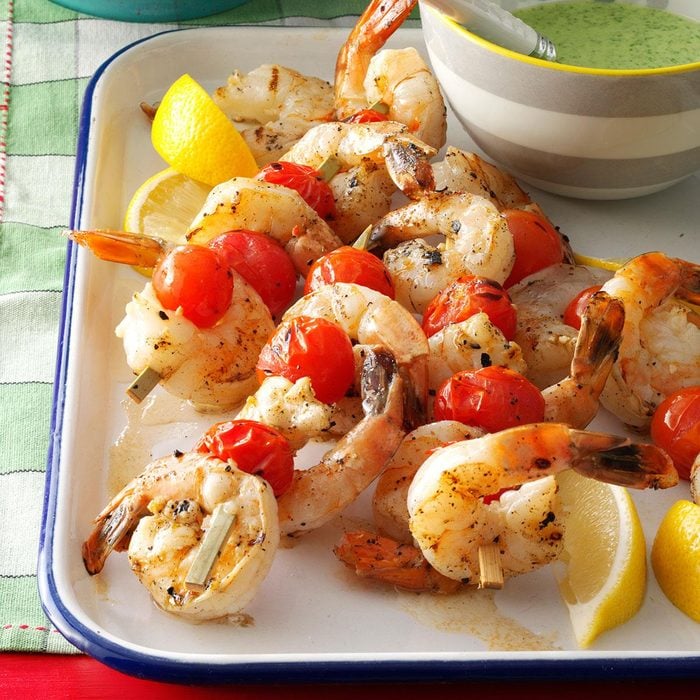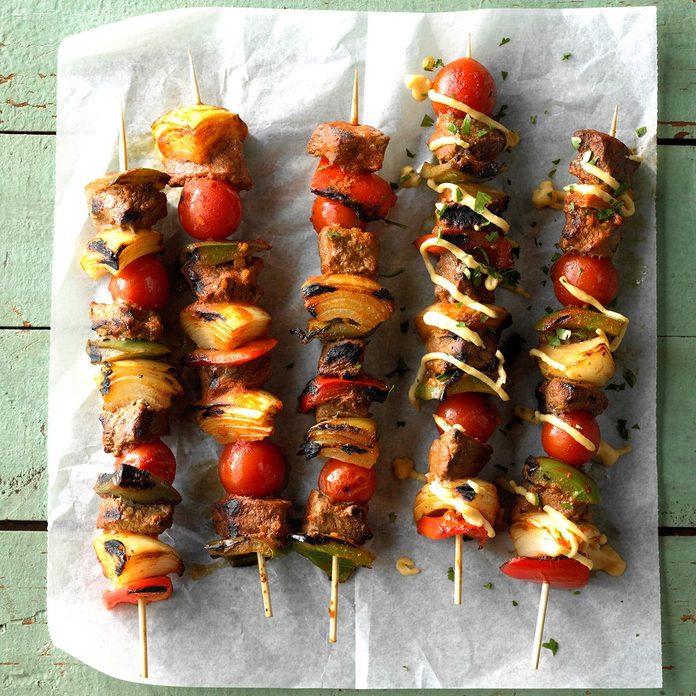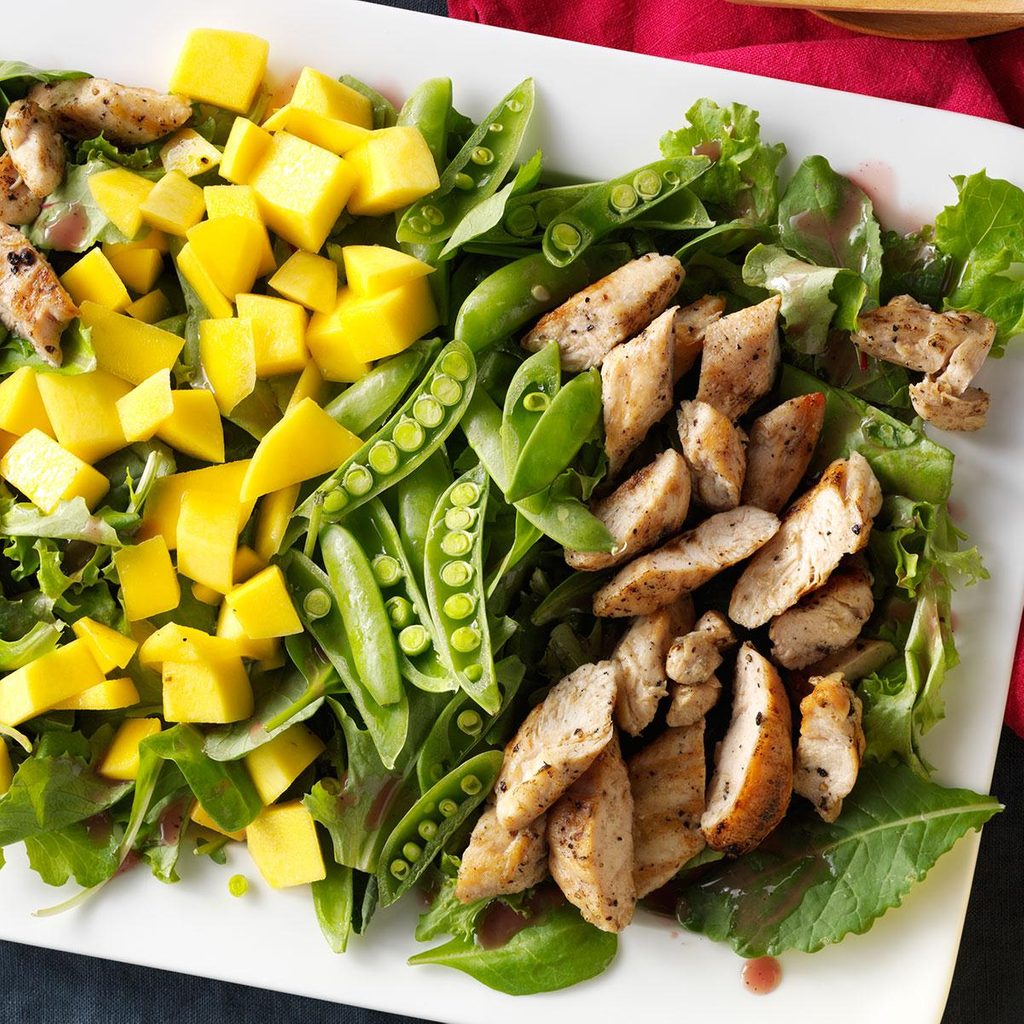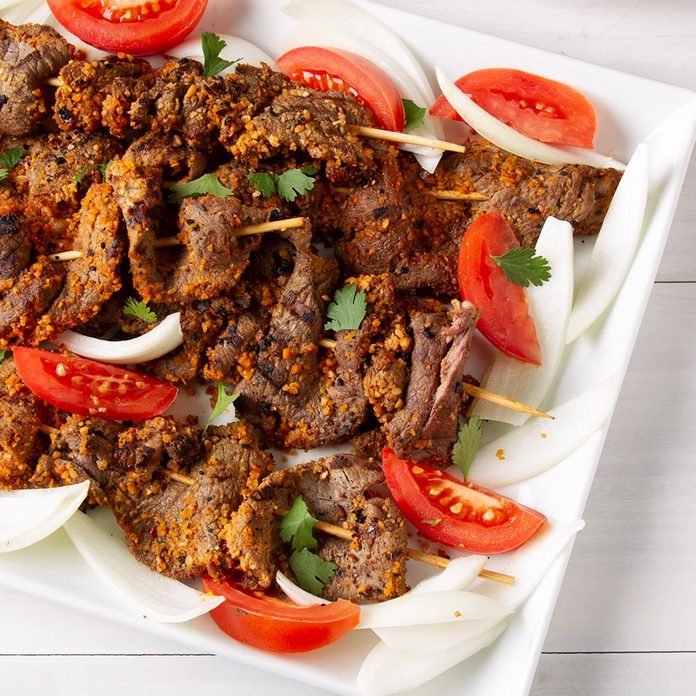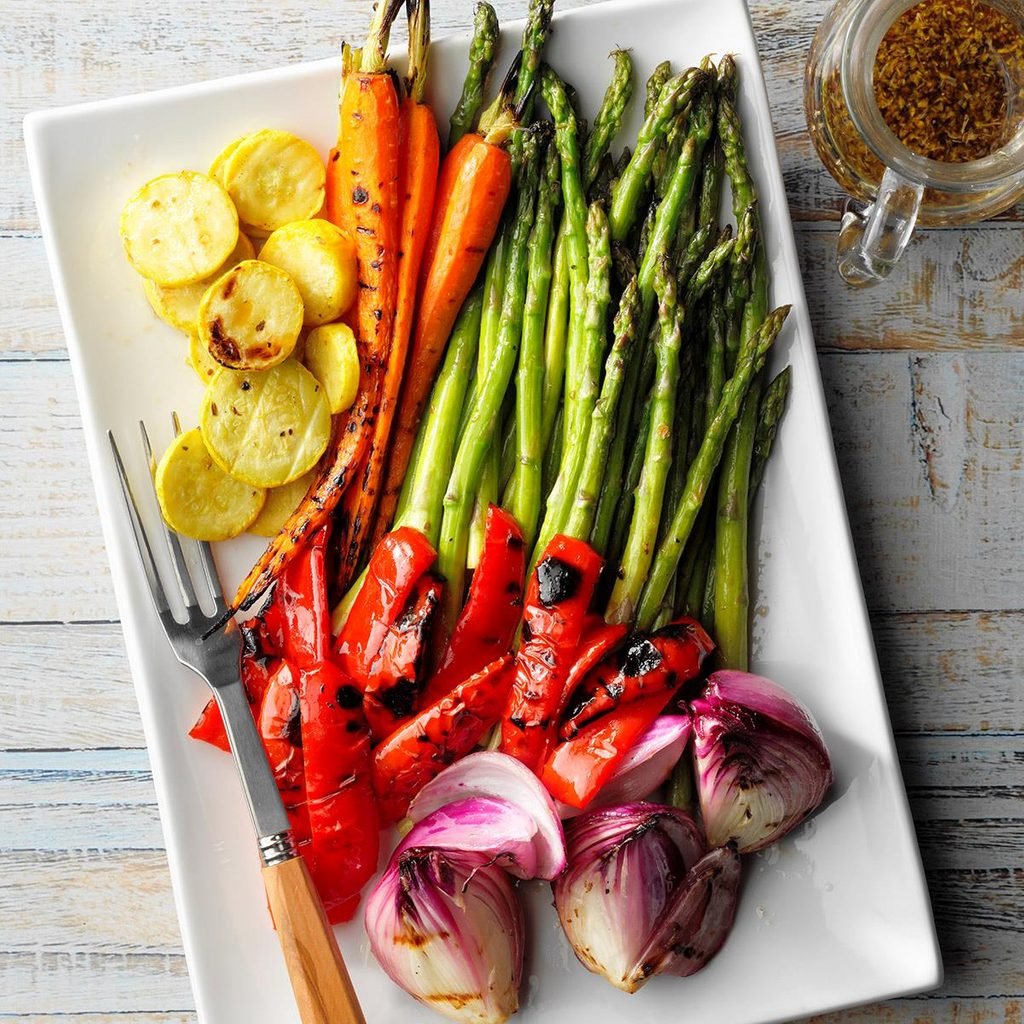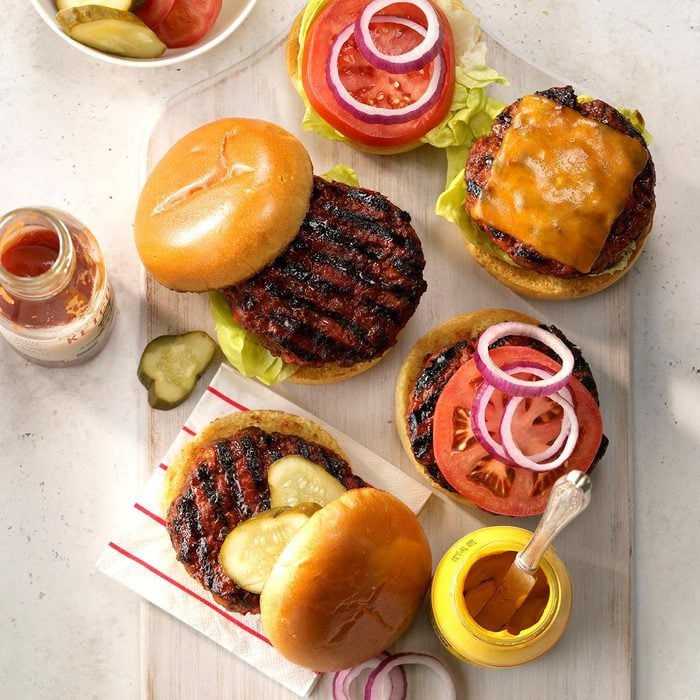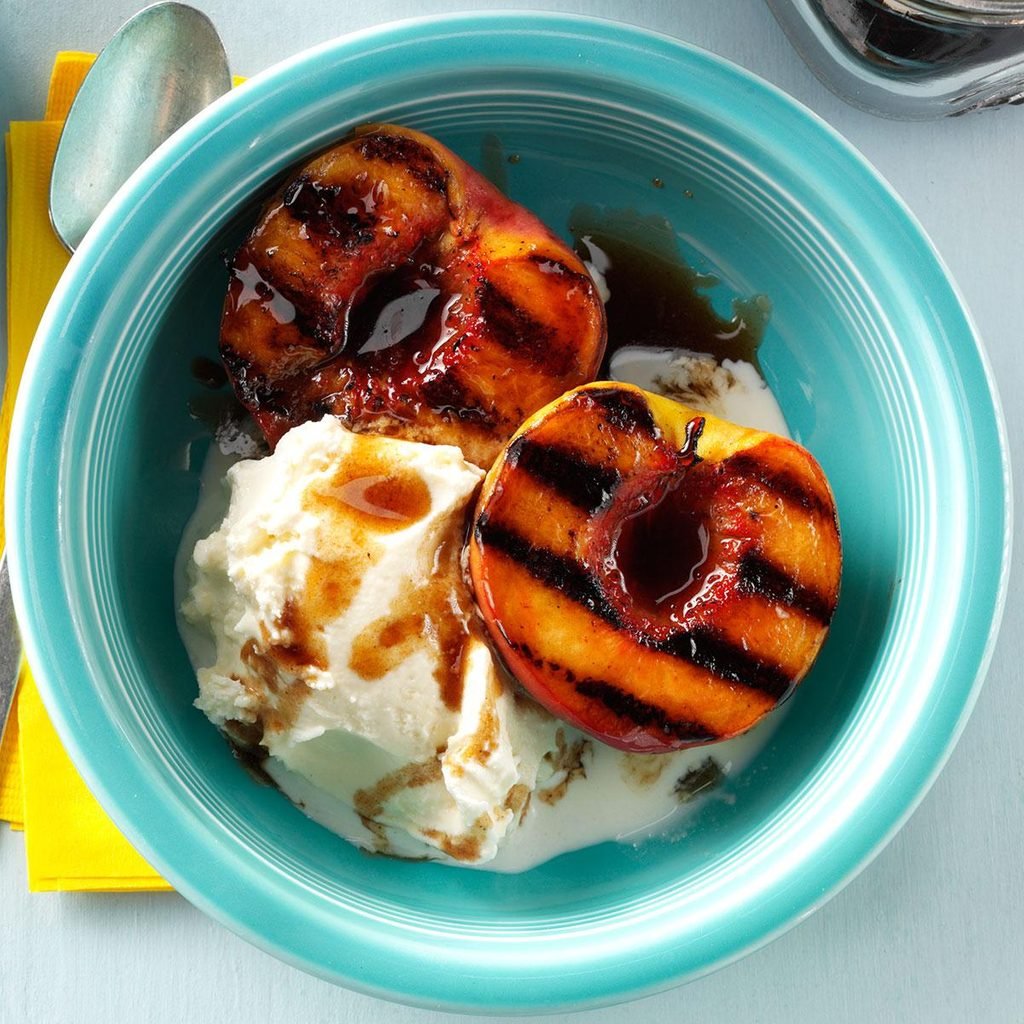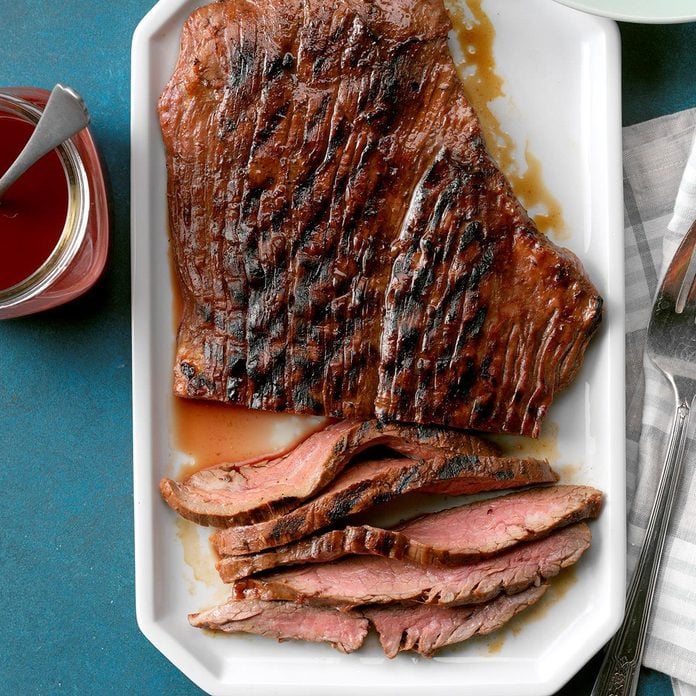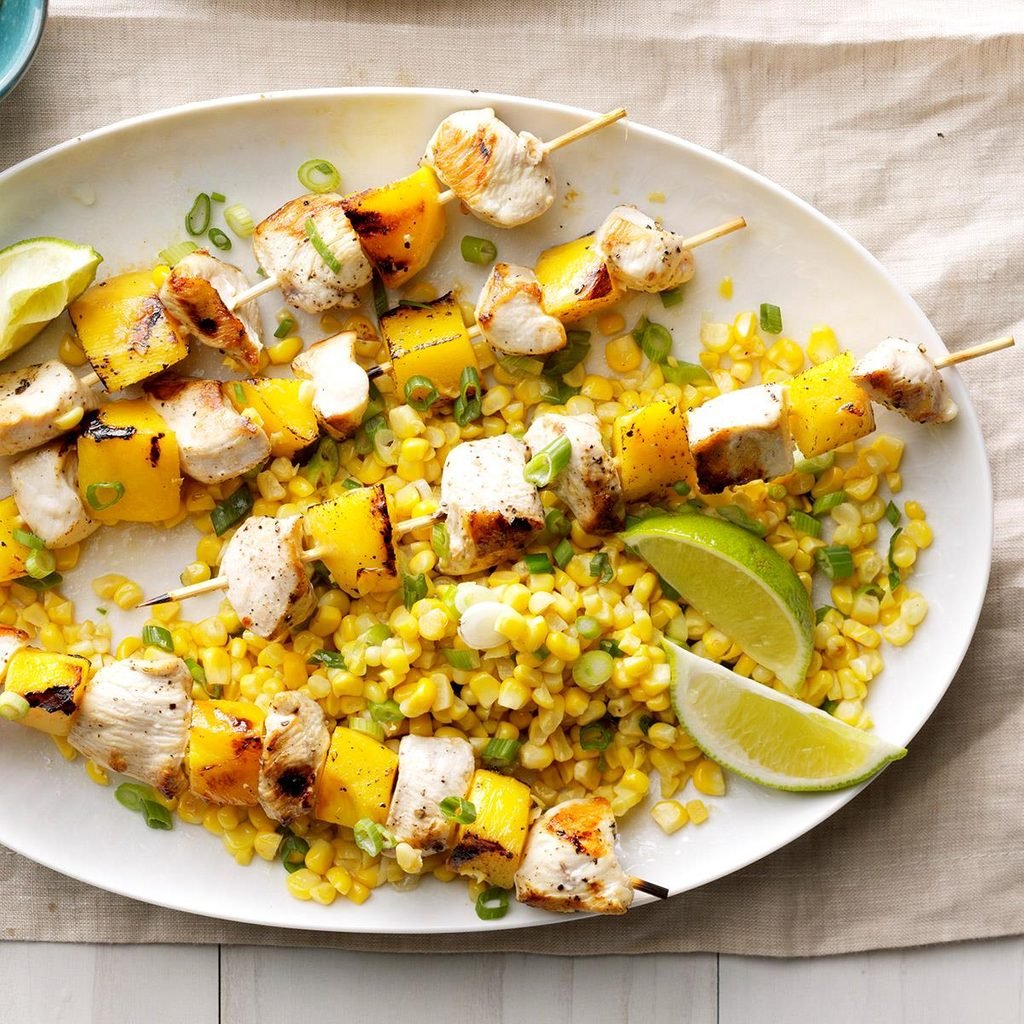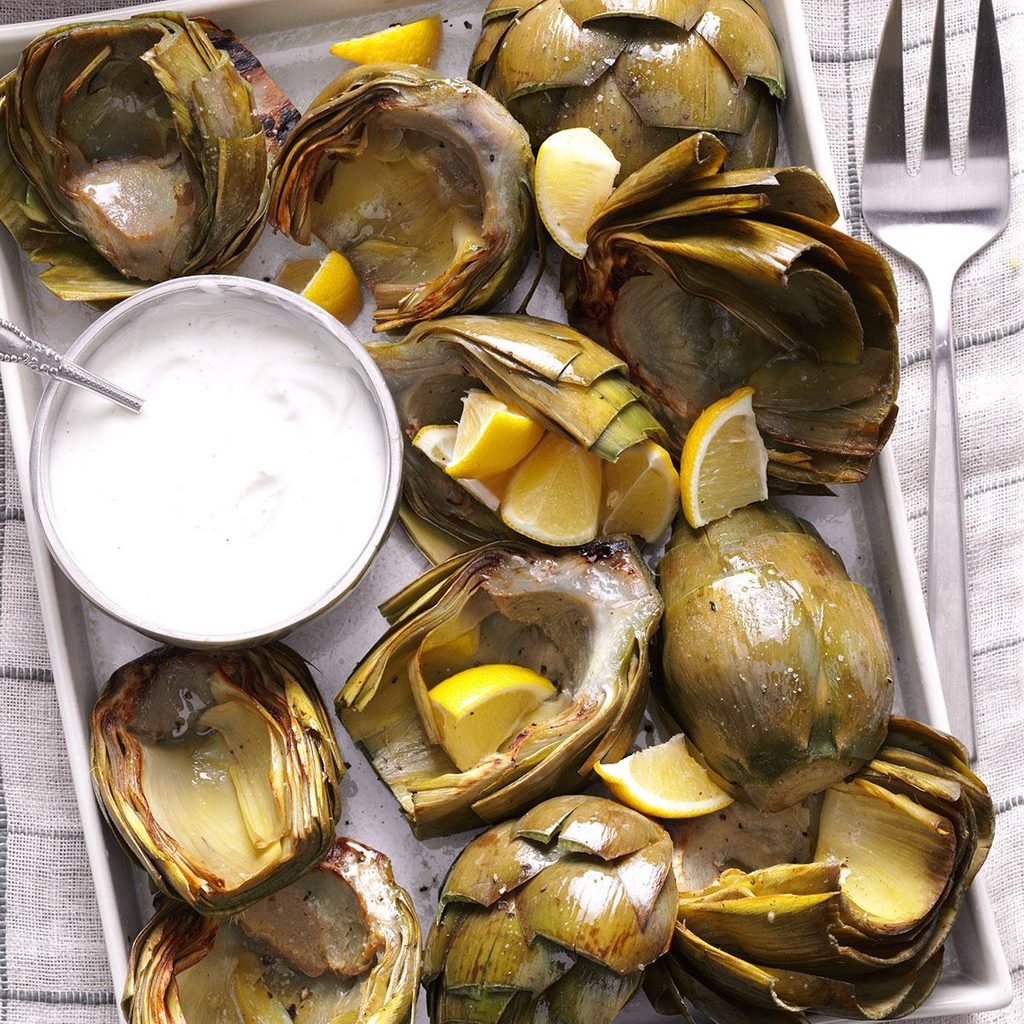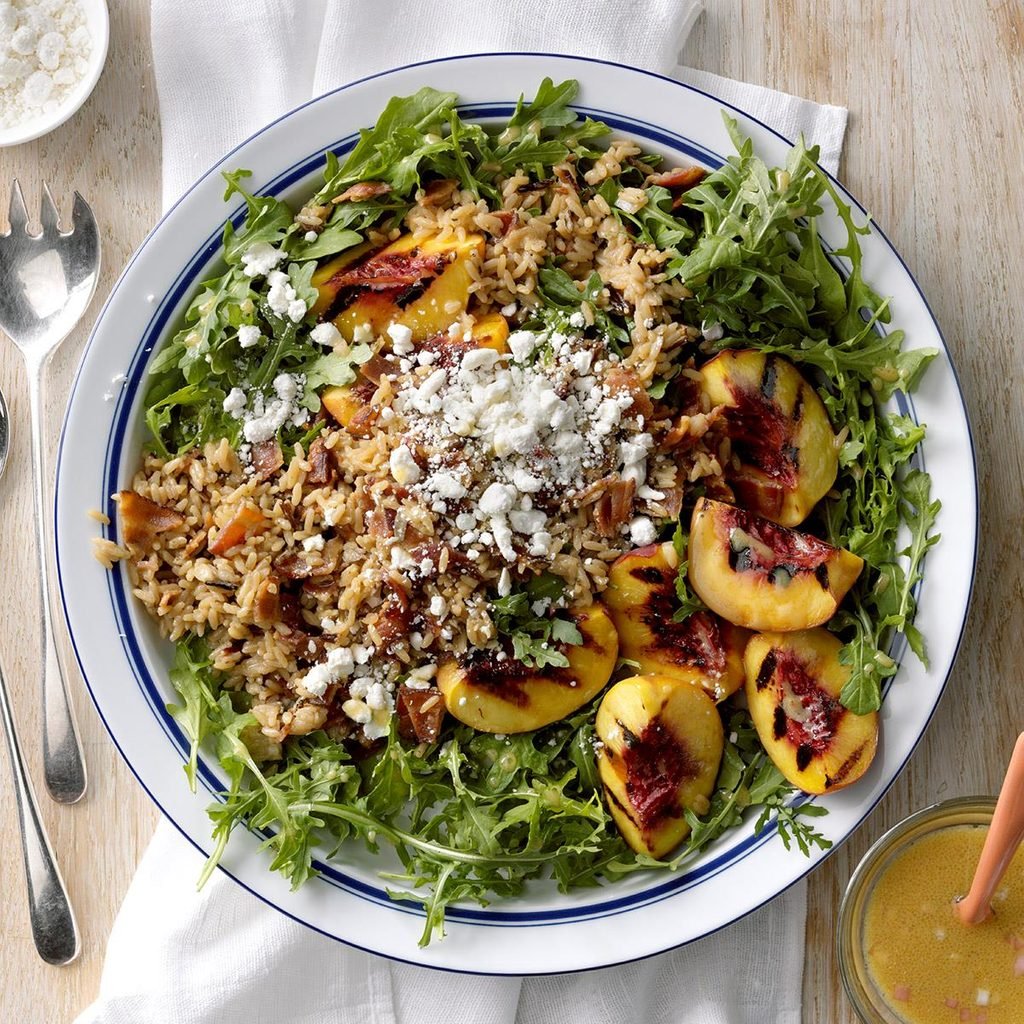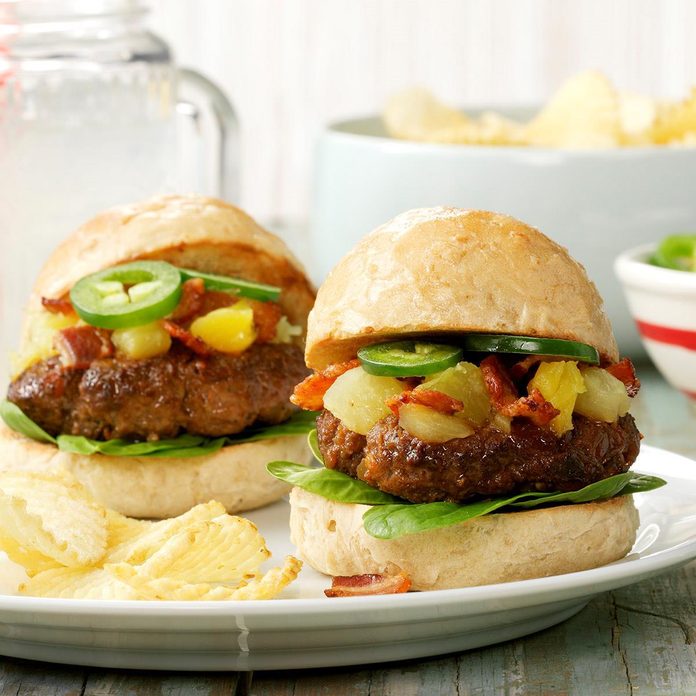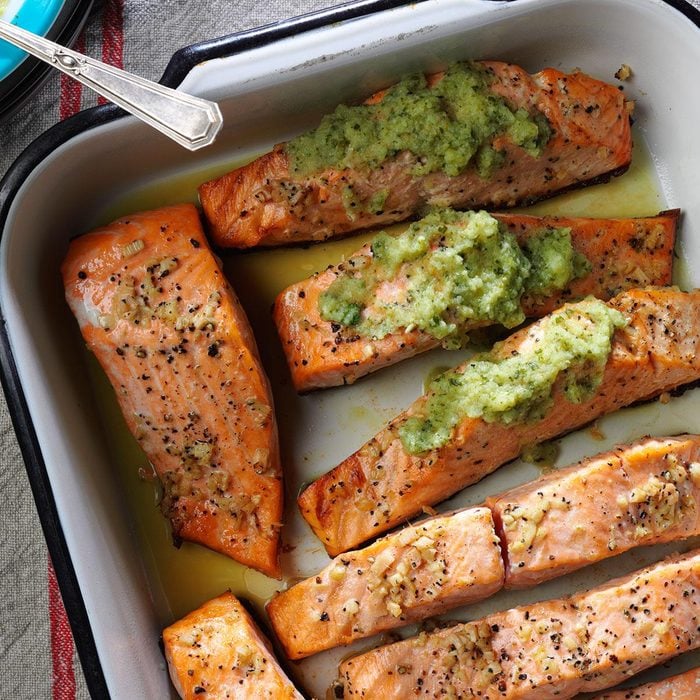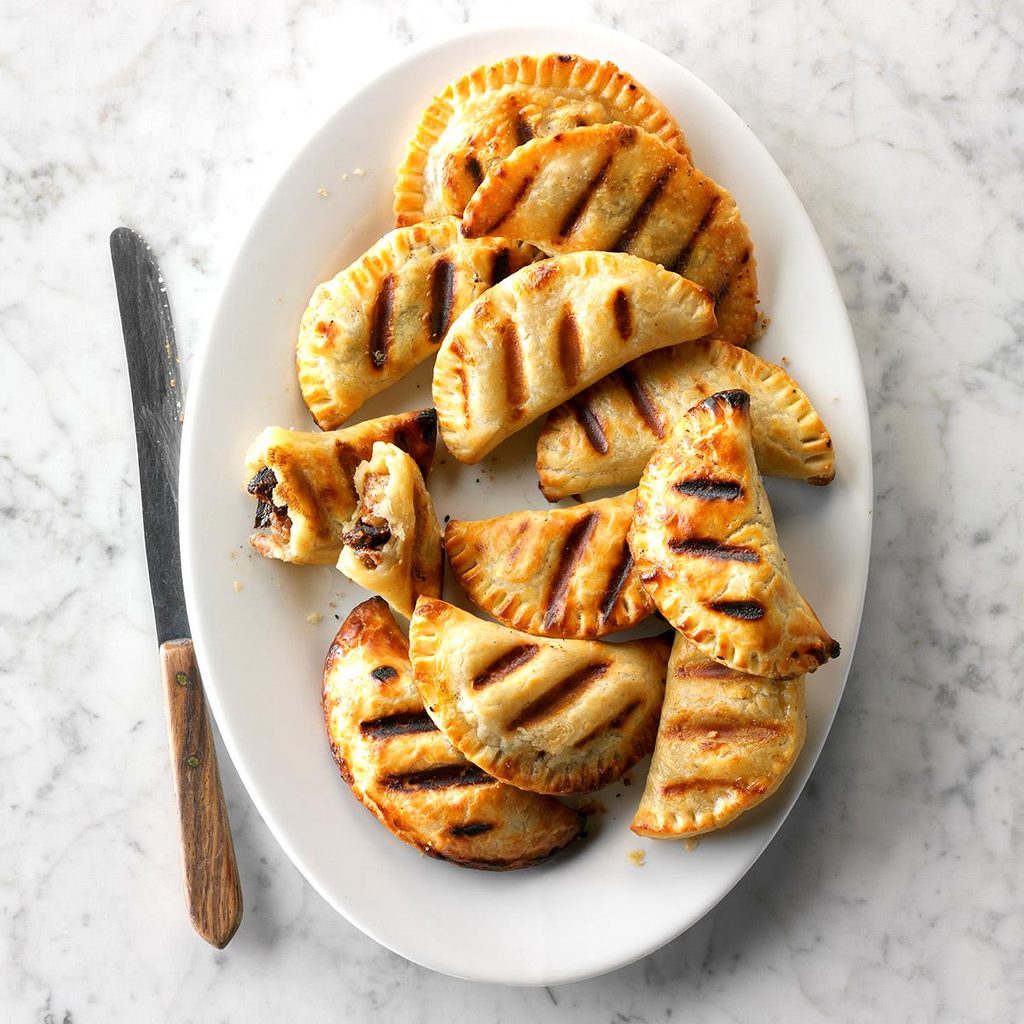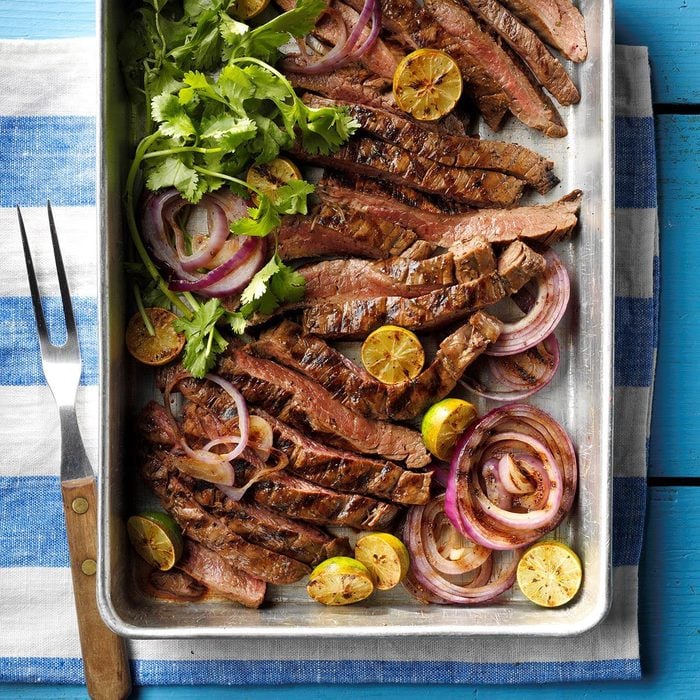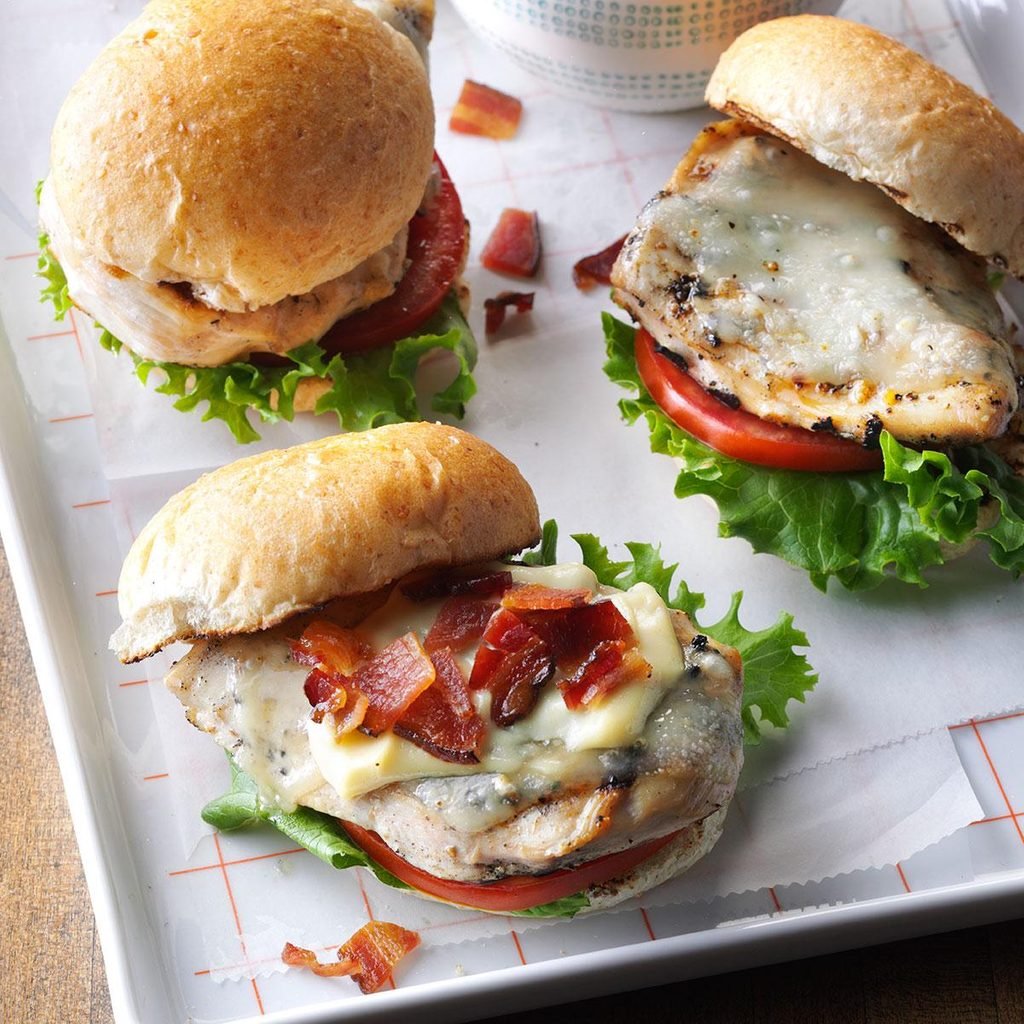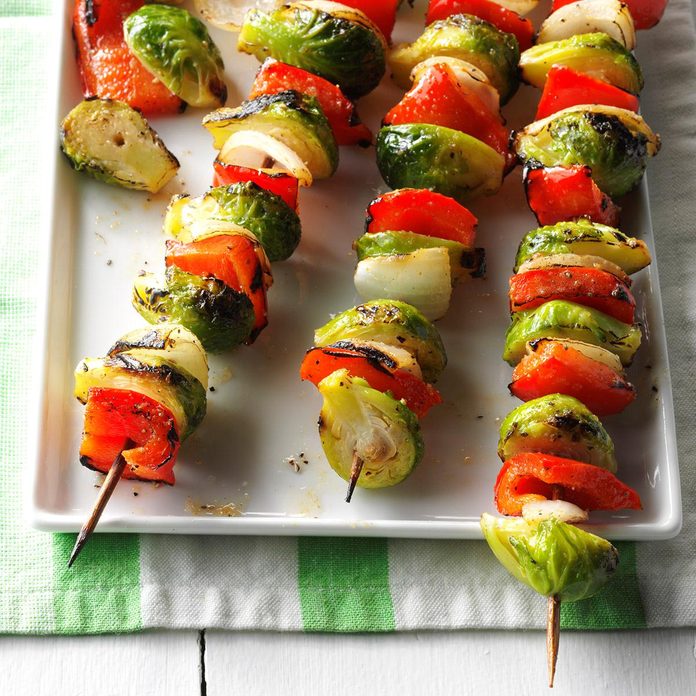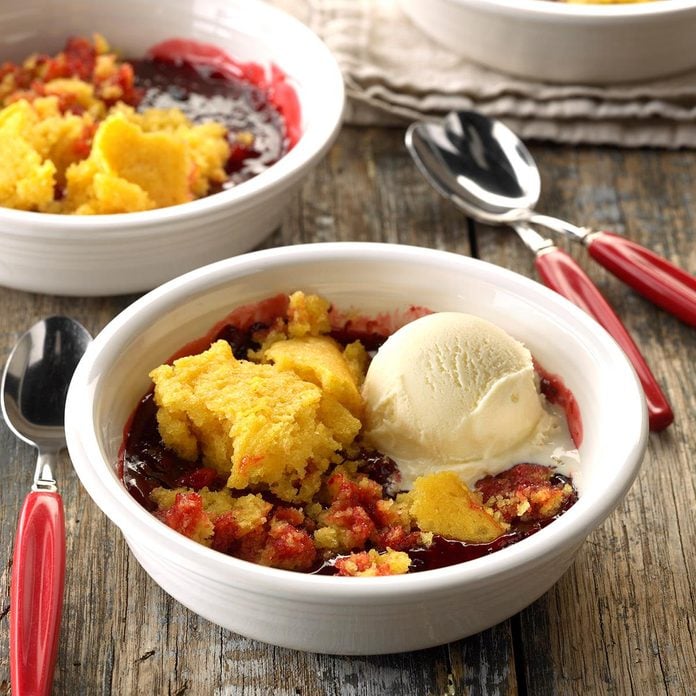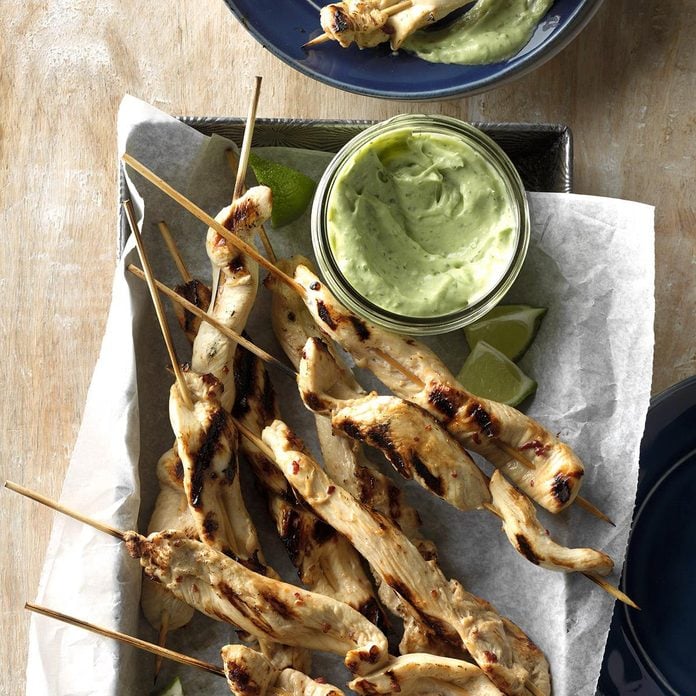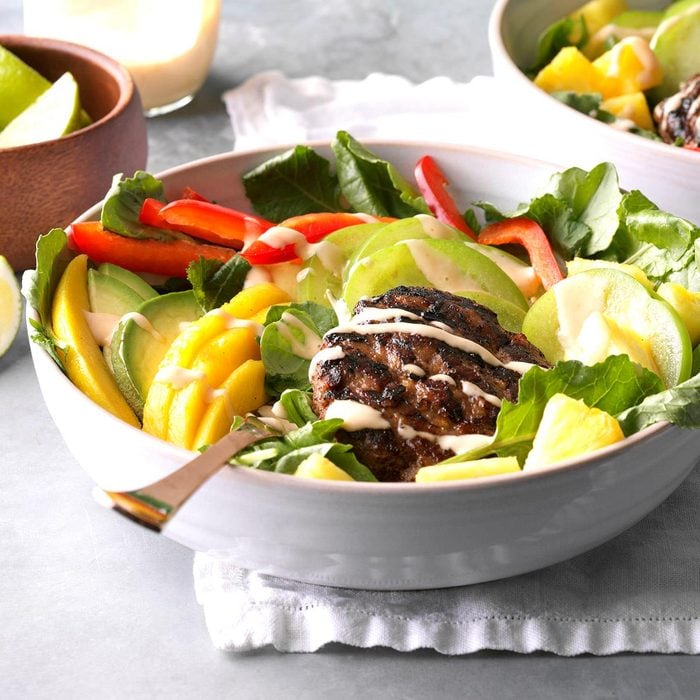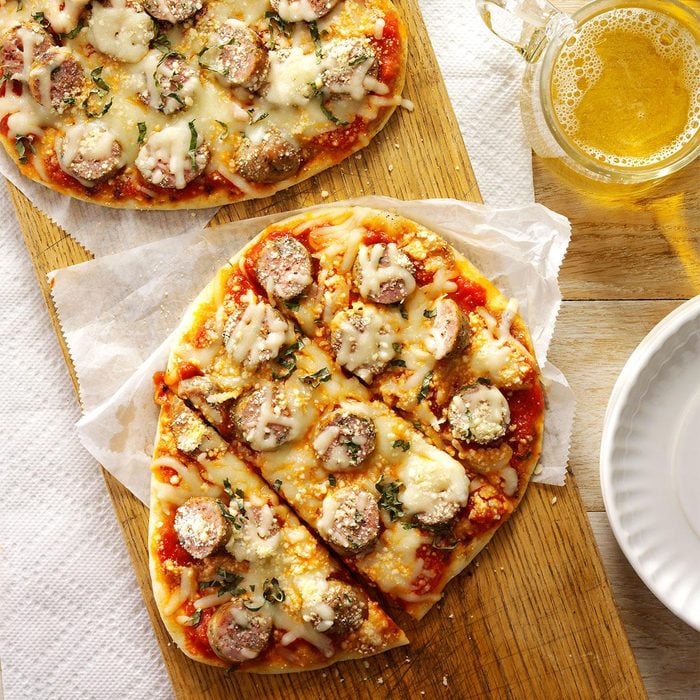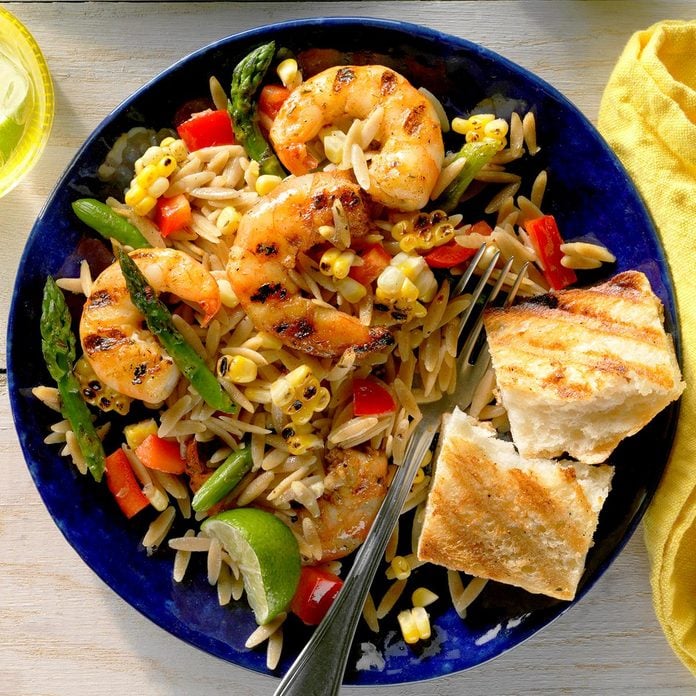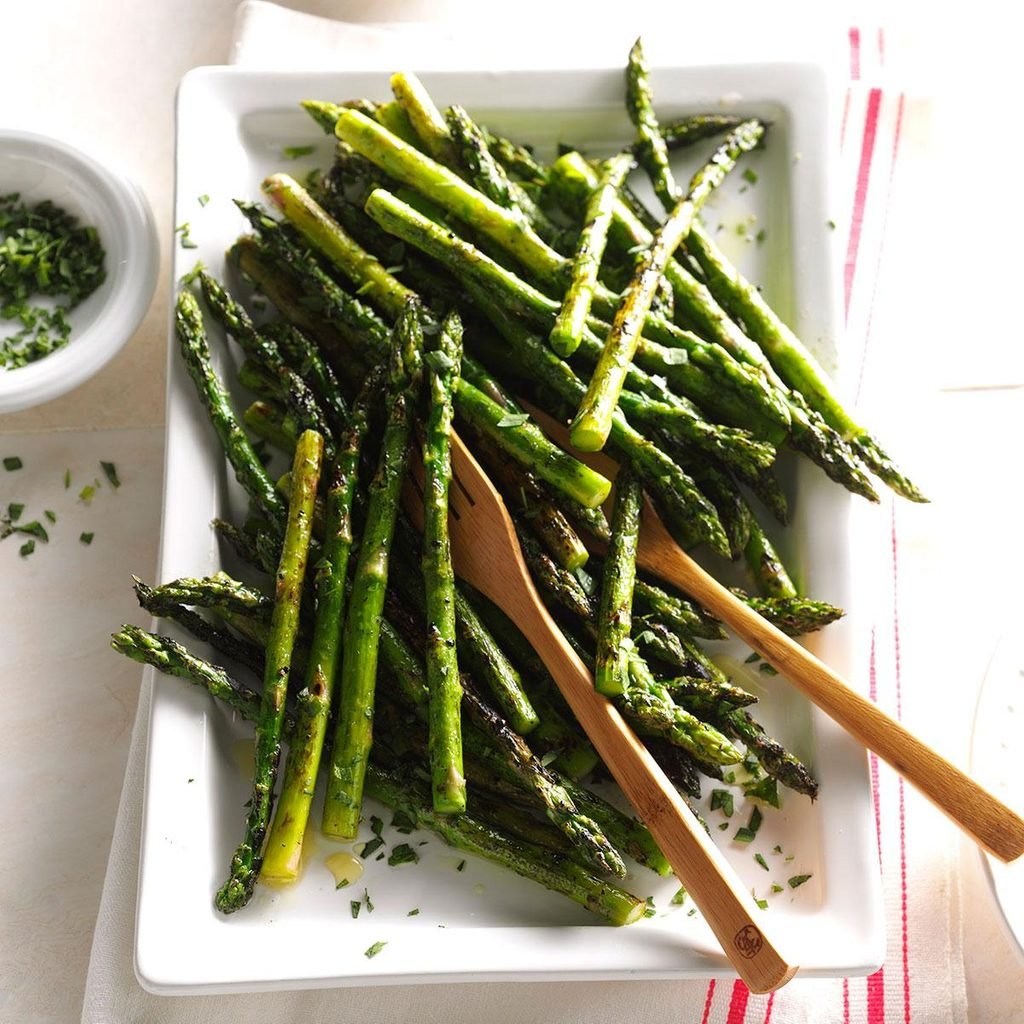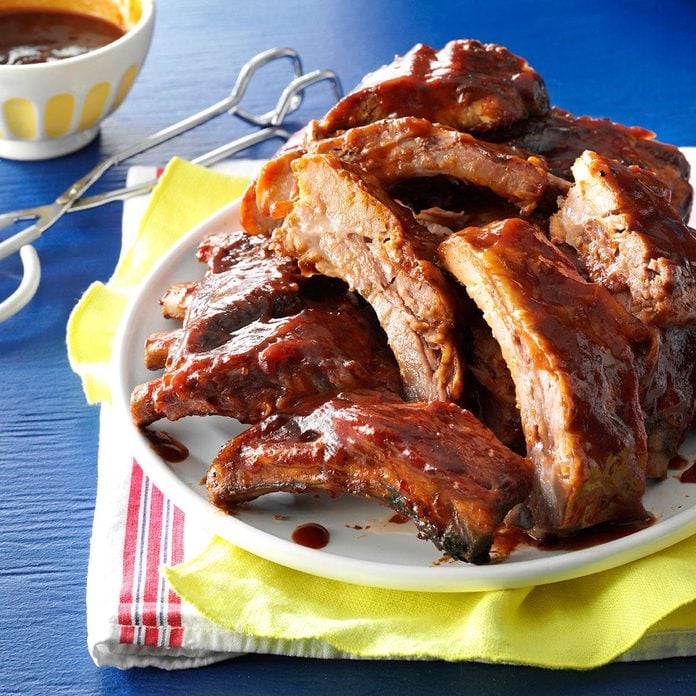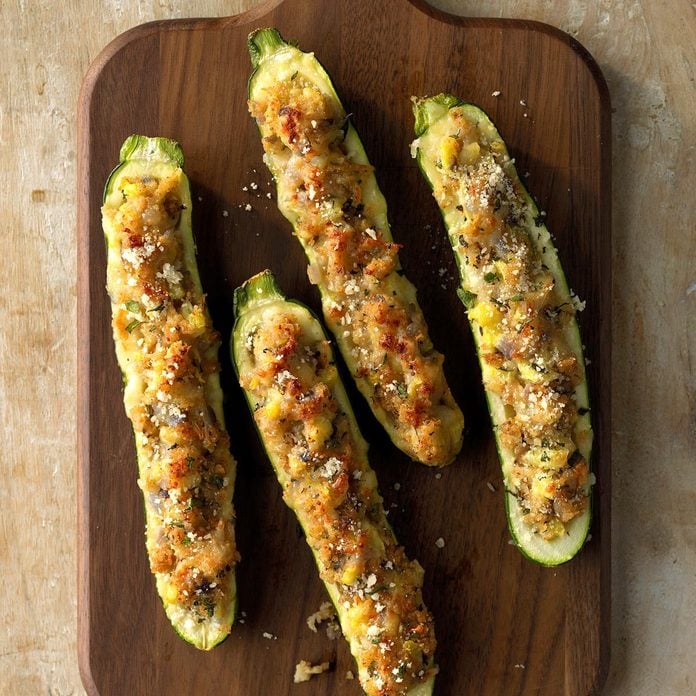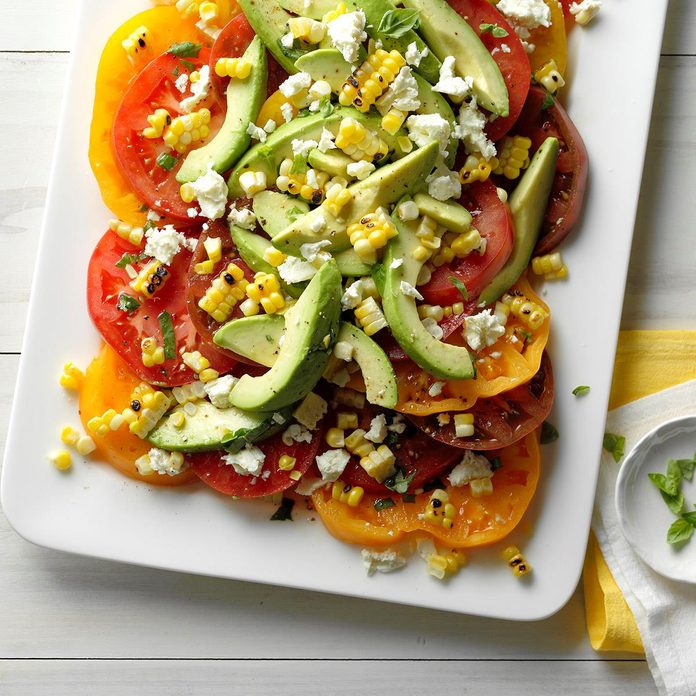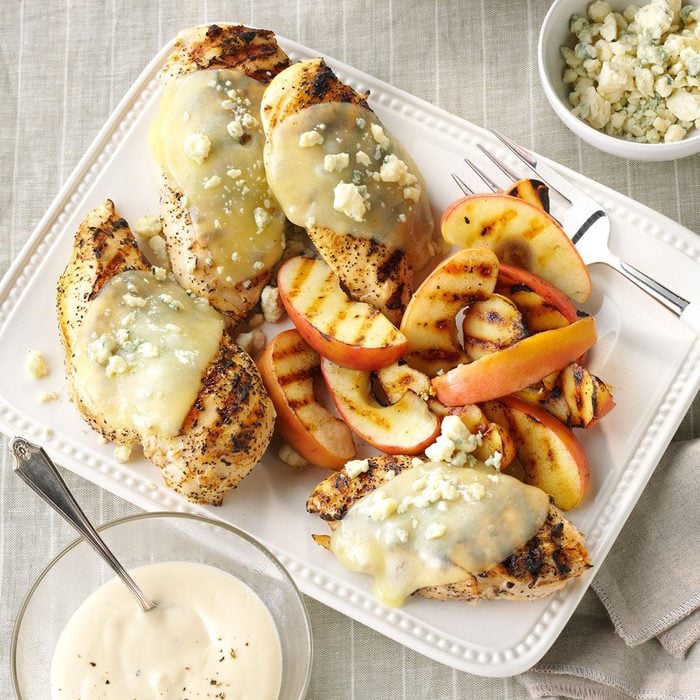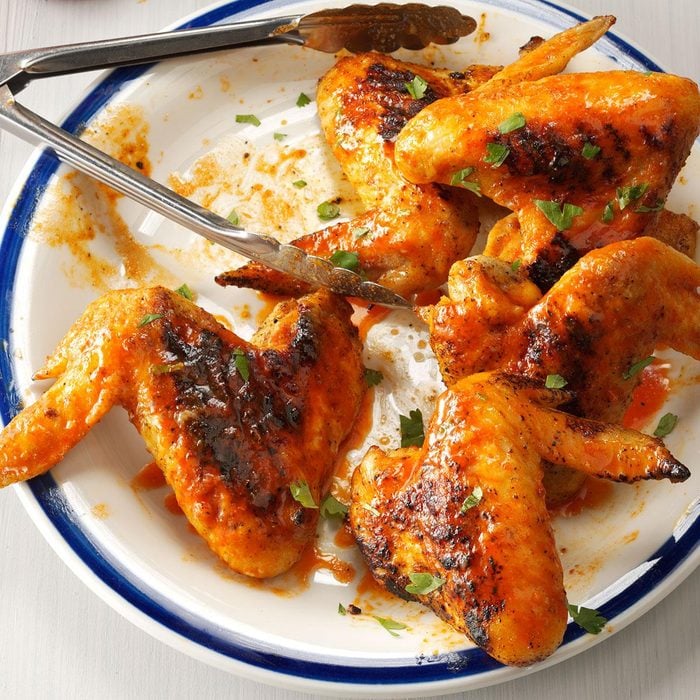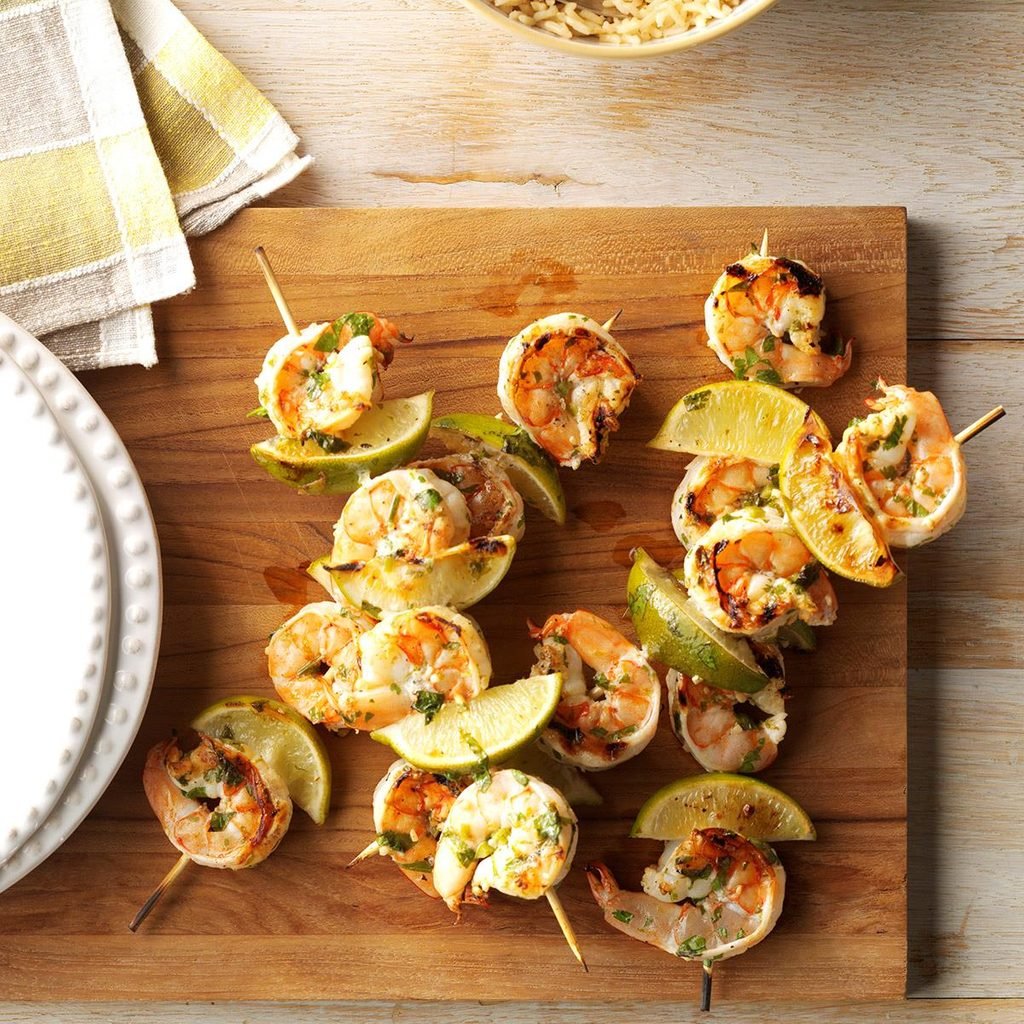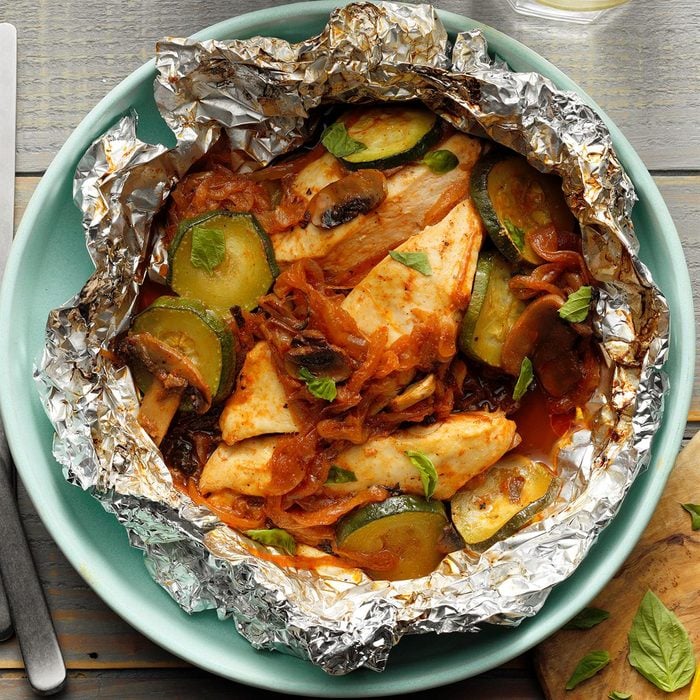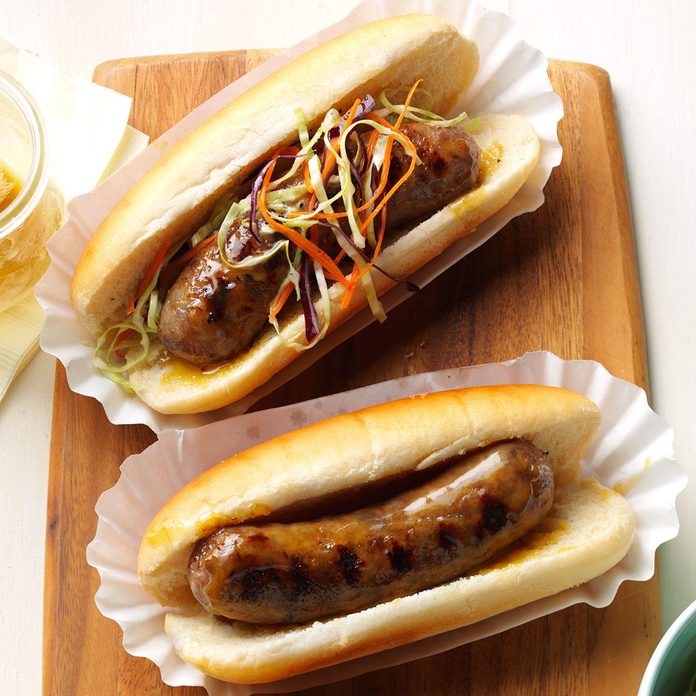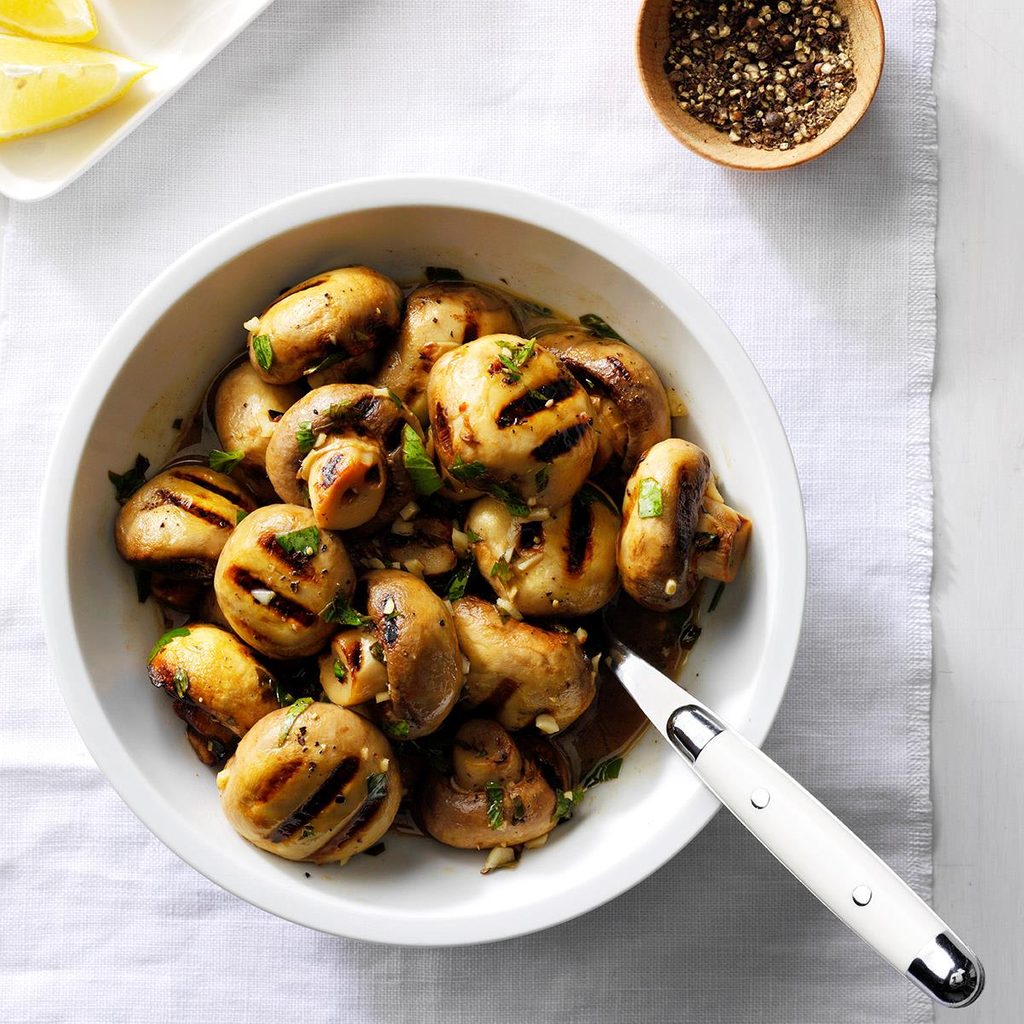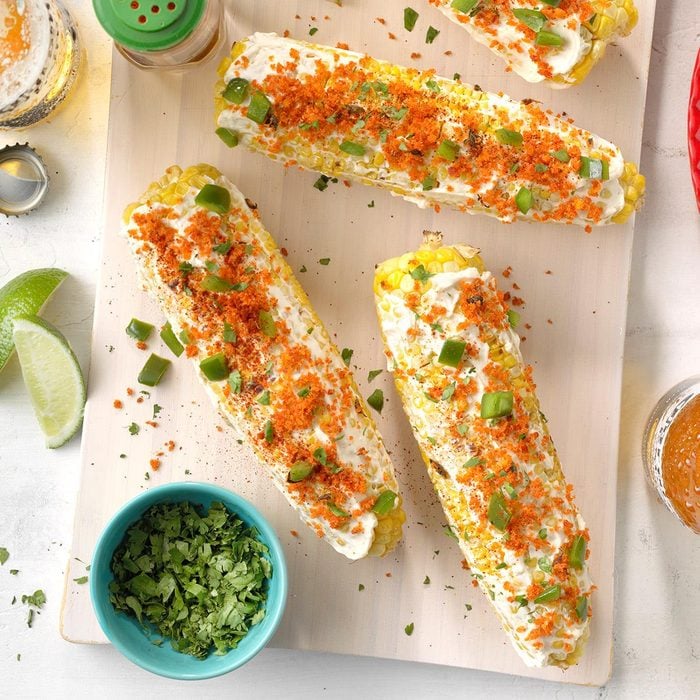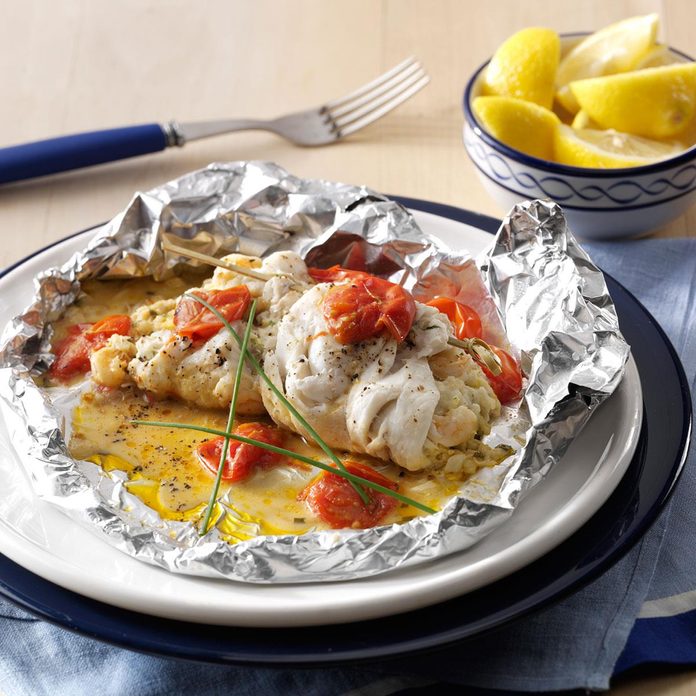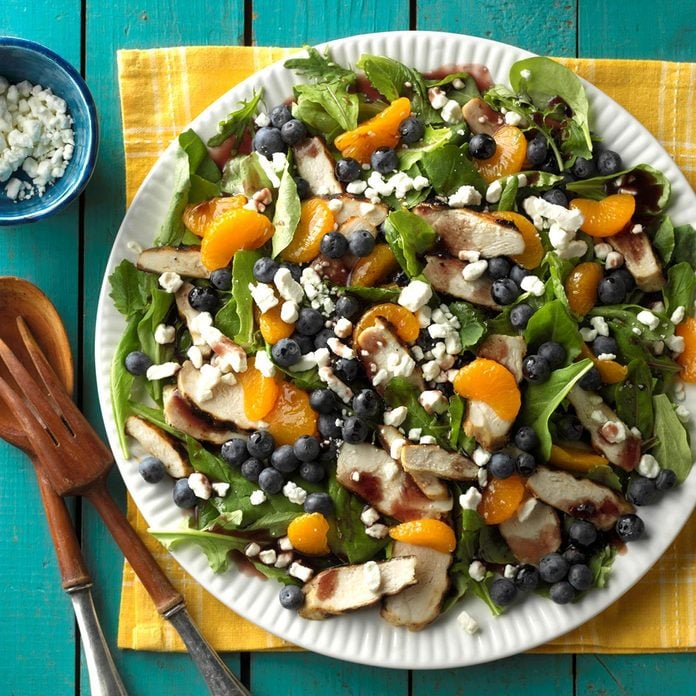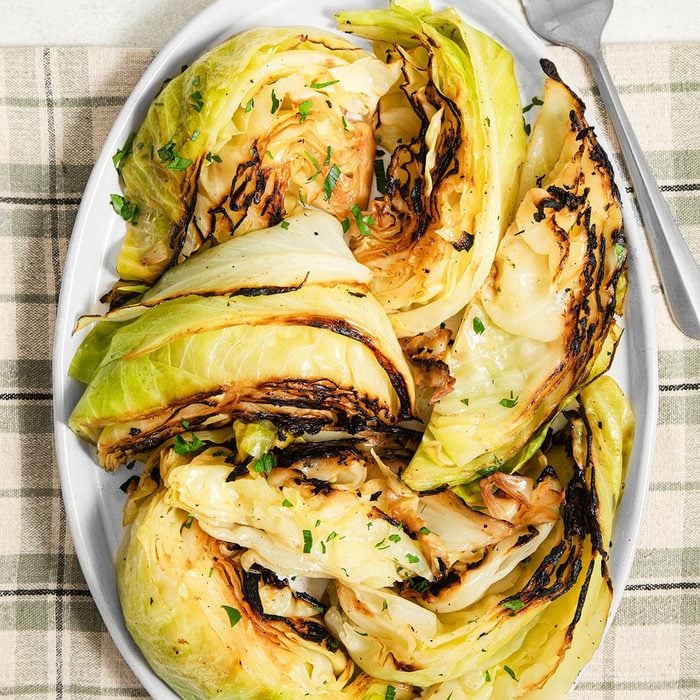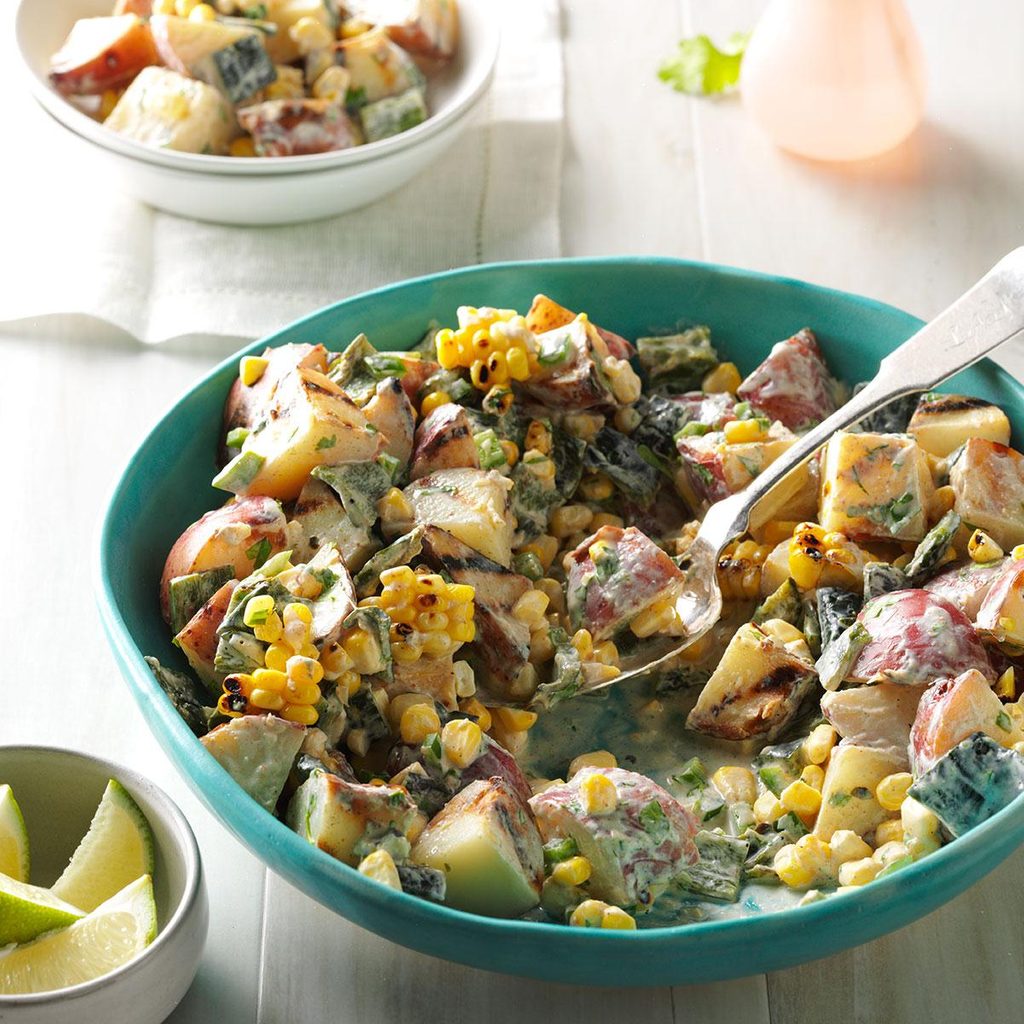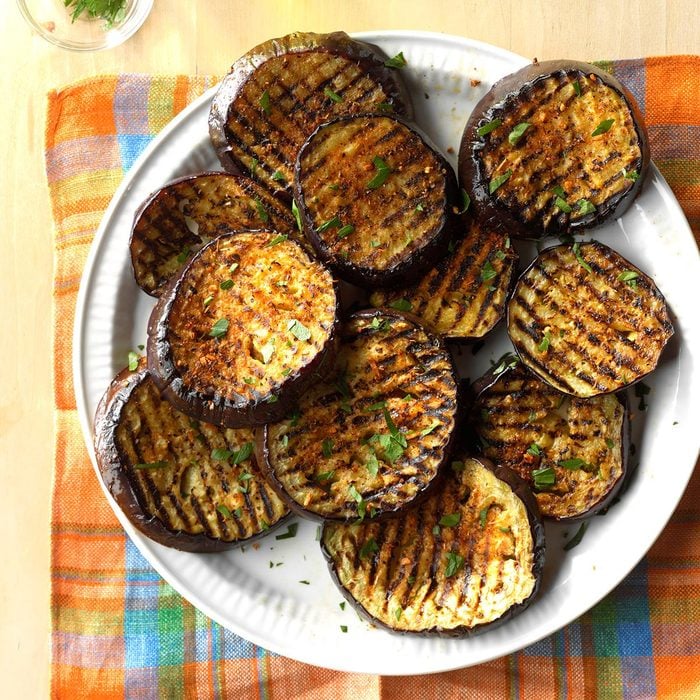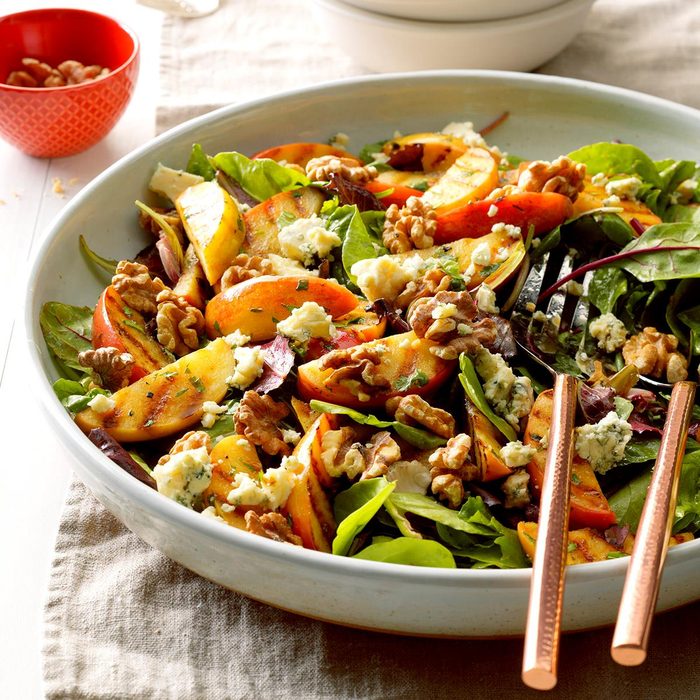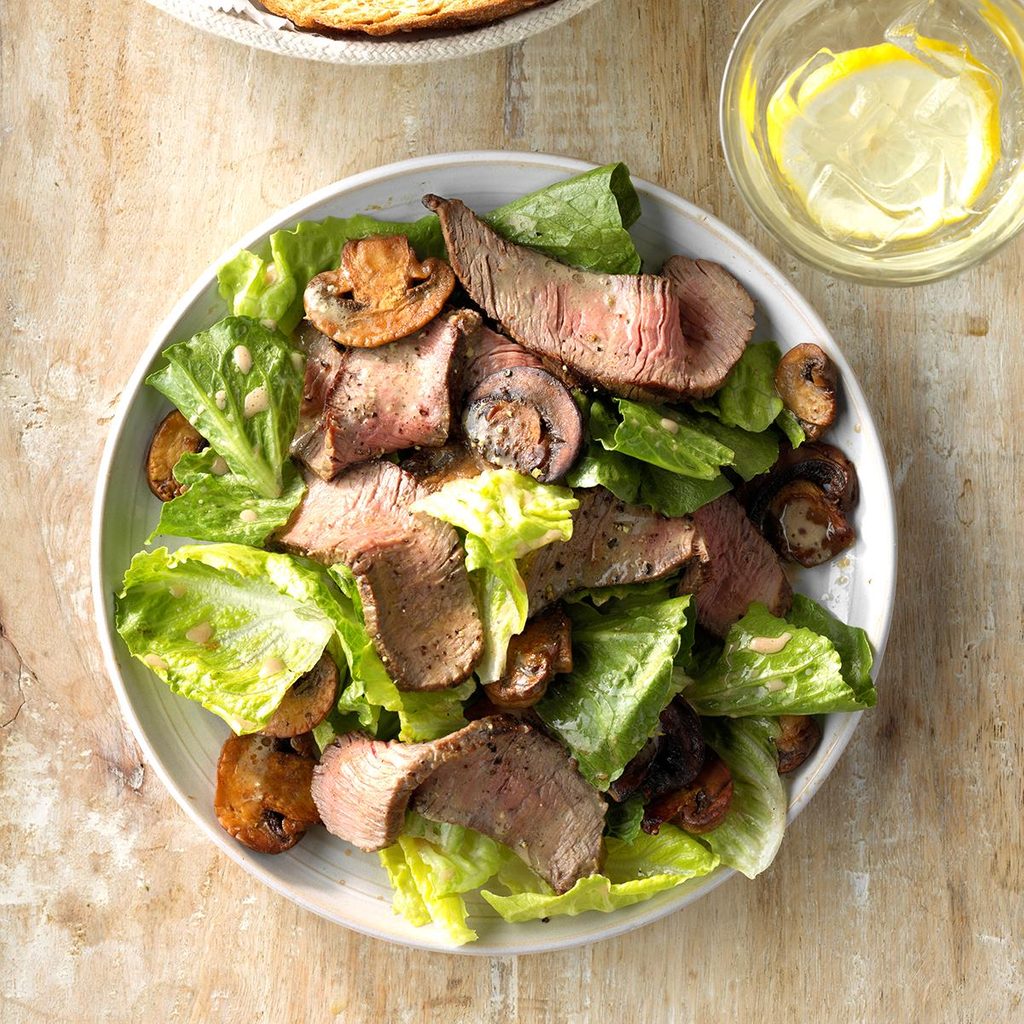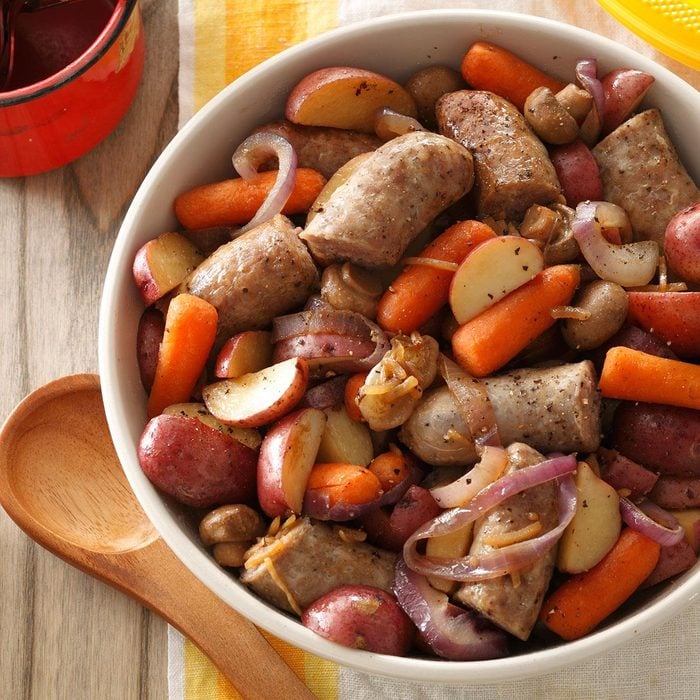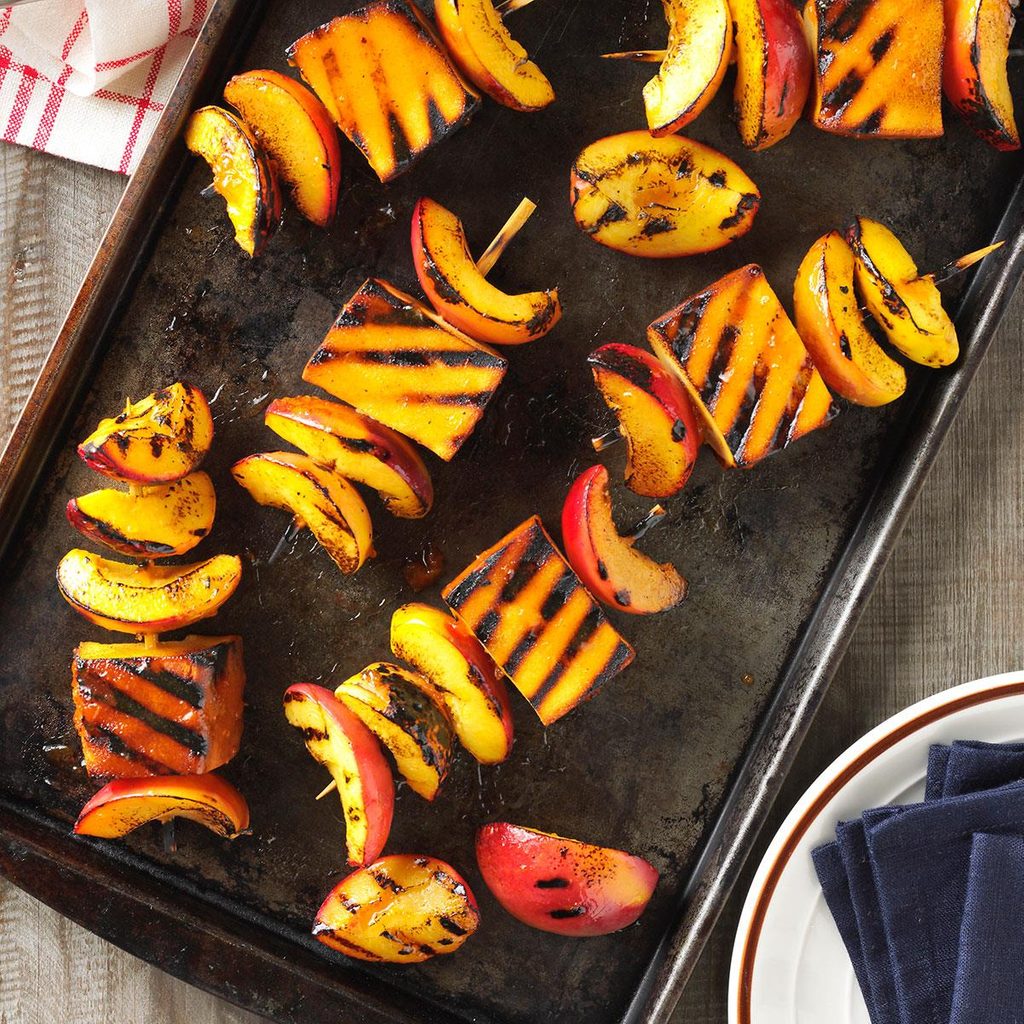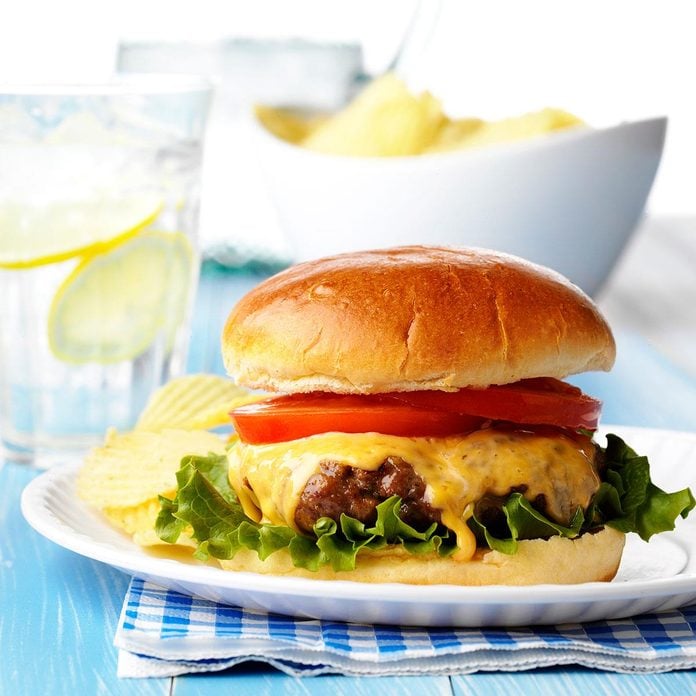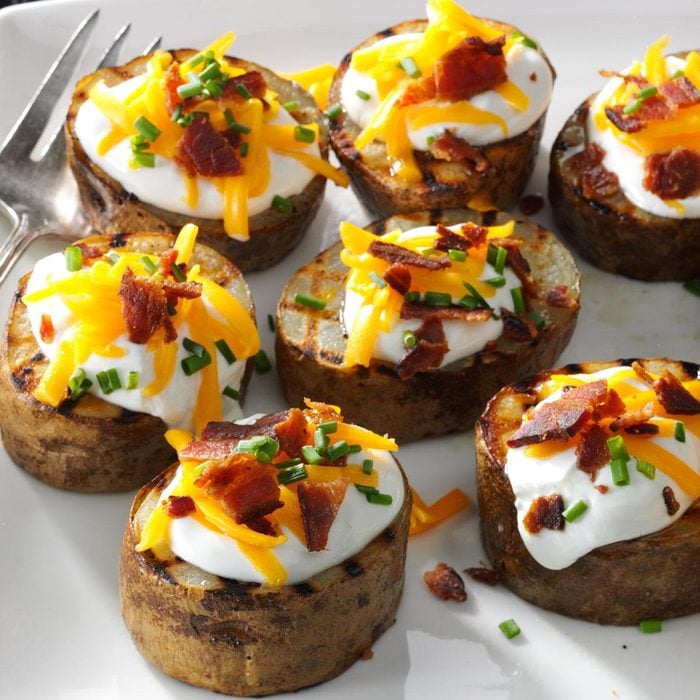Gas grills are unarguably convenient. There’s no need to fuss around with finding the right type of charcoal, disposing of the spent ashes or figuring out the best way to get it lit. Lighting a gas grill is as easy as turning a knob, but cooking on it might not be as intuitive. We designed this guide to teach beginners how to use a gas grill, but even seasoned grillers can benefit from these expert grilling tips.
How to Use a Gas Grill
ⓘ
Can you just turn the knob and toss on your steak? Sure, but your food will taste better if you start with a clean, preheated grill. Here’s the best way to ensure you’re creating restaurant-quality grilled food.
How to Start a Gas Grill
Before you get started, check the propane tank to make sure it has enough fuel. You definitely don’t want to run out of propane halfway through your grilling session! (This isn’t necessary if your grill is hooked up to natural gas.)
From there, open the grill’s lid and turn the propane tank’s valve counter-clockwise until it’s fully open. Turn one of the burners on high and press the ignition switch. If it doesn’t light, you may need to replace the batteries. You can also light the grill manually using a long match or a lighter wand.
When the first burner is lit, turn the other burners to high. Close the lid and allow the grill to preheat for 10 to 15 minutes.
Preparing the Grill for Cooking
It’s really important to start with clean grill grates. Burnt-on bits will not only impart off-flavors, but they can also cause the food to stick. You won’t get perfect grill marks if half your steak sticks to the grill! When the grill is preheated, clean the grill grates using a wire brush. If you don’t have a brush, you can use one of these hacks instead.
Then to season grill grates, rub a small amount of oil on the grates to give them added nonstick protection. Dip a folded towel in neutral cooking oil (like canola oil) and hold it with a pair of long-handled tongs. Rub the towel on the grill grates, moving it from the back of the grill to the front to protect your arms from potential flare-ups.
How to Cook on a Gas Grill
Now that the grill is preheated, cleaned and oiled, you can get cooking your favorite grilling recipes. Adjust the heat by turning the burner knobs, turning off one or more burner if you want to create an indirect heat zone (more on indirect vs. direct heat later).
The best way to determine the heat is with the hand test. Place your hand, palm-side down, about five inches from the grill grate. The heat is medium-low if you can leave your hand there for 8 to 10 seconds, medium if it lasts for 5 to 7 seconds and high if you need to pull your hand away after 2 to 4 seconds.
Turning Off a Gas Grill
When you’re finished grilling, turn off all the burners and give the grill grates a quick clean. Close the valve on the propane tank by turning it clockwise until it stops. When the grill is completely cooled, cover it with a waterproof cover.
The Best Overall Gas Grill
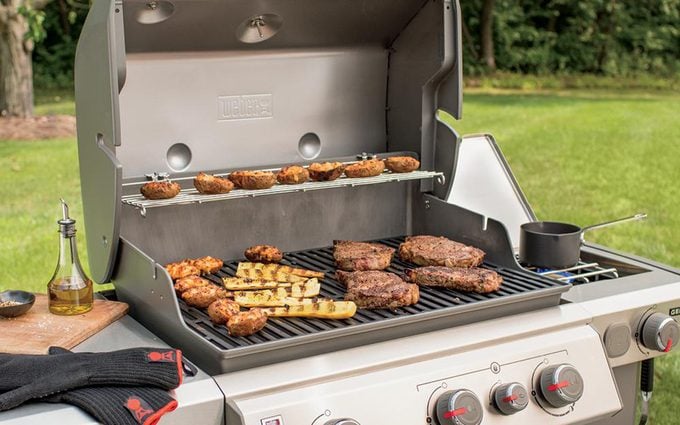 via homedepot.com
via homedepot.com
While you can find an inexpensive charcoal grill that’ll get the job done, you definitely want to pay for quality with a gas grill. Our top pick is the Weber Genesis-II E-335 3-Burner Propane Gas Grill (also available in for natural gas). It’s expensive, yes, but our recipe editor, Alicia Rooker, has owned this grill for almost ten years, and it’s holding on strong. The three burners allow you to cook with either direct or indirect heat, and you can fit up to 20 burgers on the 513 square inch cooking area. It also comes with a side burner for simmering sauces or brats, and the storage cabinet is large enough to hold your grilling accessories. As a bonus, it’s also iGrill3 compatible, allowing you to mount an app-connected thermometer and monitor the temperatures from afar.
Shop Now
Everything You Need for Using a Gas Grill
Since gas grills are more expensive than charcoal grills, it’s important to protect your investment with a grill cover. Most grill manufacturers sell a specific cover for each grill model, but you can also look for a generic brand. Just be sure that the cover is waterproof and will fit the dimensions of your grill.
You’ll also want to pick up a few key grilling accessories. Grab a pair of long-handled tongs and a set of spatulas to handle all your flipping and turning needs. You may also want a basting brush for brushing meat and vegetables with flavorful marinades as the cook.
When you’re ready to branch out from steaks and burgers, pick up some cedar planks for making a stellar grilled fish, or a poultry roaster for beer can chicken. This particular model also allows you to steam vegetables as the chicken cooks.
Tips for Using a Gas Grill
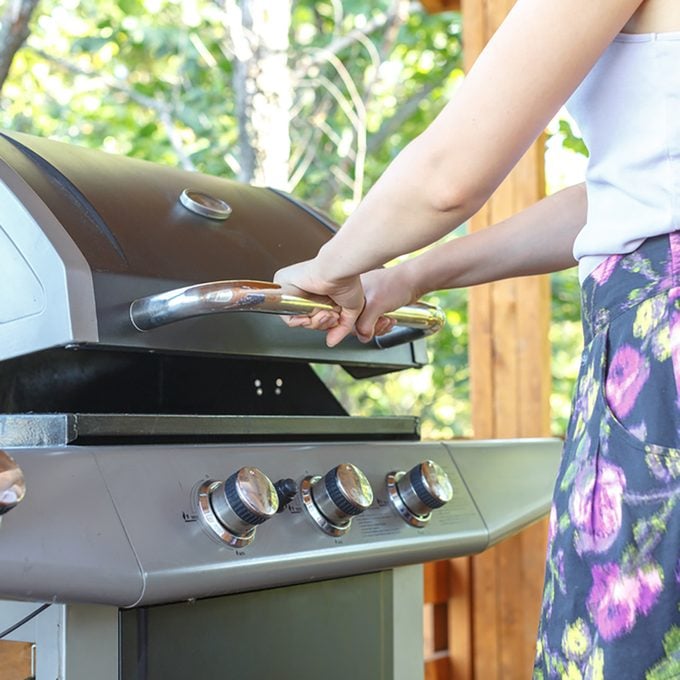 Shutterstock / solepsizm
Shutterstock / solepsizm
Determining the Right Cooking Temperature
We already talked about how to do the hand test to determine the temperature of your grill. But what’s the ideal temperature? It depends on what you’re cooking.
- High heat (above 425°F): This temperature range is best for quick-cooking foods, like kebabs or shrimp. It’s also the perfect temperature for meats like steak or pork chops that benefit from a seared exterior.
- Medium-high heat (375° to 425°): This temperature range is great for burgers, fish and most vegetables. These items still get some caramelization and sear, but the lower temperature helps the interior to cook through before the outside scorches.
- Medium heat (325 to 375°F): This temperature range is ideal for anything that requires indirect or gentle heat. We’re looking at you bone-in chicken, whole fish, roasts or large vegetables like baked potatoes.
- Medium-low heat (275° to 325°F): This temperature range works for foods that benefit from gentle cooking, like sausages or grilled bread. We also use this temperature range to keep grilled food warm.
- Low heat (below 275°F): This temperature range is right for tough cuts of meat like brisket, ribs or pork shoulder.
When to Choose Indirect vs. Direct Heat
You can use a gas grill with either direct heat or indirect heat. Direct heat sears the food by placing it directly over the flame. With indirect heat, the food is placed over the unlit portion of the grill, moving the flame to the sides. In general, it’s best to use indirect heat with anything that takes longer than 20 minutes to cook, like bone-in chicken or large roasts. Direct heat is better for quick-cooking items, like steaks, vegetables or shrimp.
Check out our guide for an in-depth look at direct and indirect heat.
Controlling and Preventing Flare-Ups
Flare-ups are essentially small grease fires. When oil or fat drips off the food and hits the grill’s heating elements, it creates a burst of flames. Small flare-ups are generally not a problem, but they can burn your food if the flames continuously surround the items on the grill.
The best way to prevent flare-ups is to trim excess fat from your meat before grilling. Fat adds flavor, so you don’t want to go crazy here, but trimming can reduce the amount of grease that can drip. When using oil-based marinades, it’s also a good idea to let the excess oil drip off before hitting the grill.
Some flare-ups are inevitable, so be ready to move the offending item off the flame, using an indirect heat side if necessary. If the flare-up doesn’t go away within a minute, remove the food from the grill and let the excess grease burn off with the lid open. You may need to turn off the grill and clean the burners if the flare-up really gets out of control.
No matter what happens, don’t spray flare-ups with water. This is one of the most important grilling safety tips. Water and oil don’t mix. Introducing water to the grill could spread the grease and fuel the flame, causing an even bigger problem.
When to Use the Lid
Closing the grill’s lid turns it into an oven by trapping the heat (and smoke) inside. You’ll want to cook with the lid closed anytime you’re using indirect heat grilling. For direct heat grilling, we usually use an open grill. Cooking one-inch-thick steaks or thin fish fillets with the lid closed could cause the meat to overcook before the outside is crisp and caramelized.
Using a Meat Thermometer
A digital probe thermometer is a must-have grilling accessory. It’s the only way to know—not guess—that your meat has reached the perfect temperature. Place it at least 1/2 inch into the thickest part of the meat, avoiding the bone or any pockets of fat. If you’re not sure about its placement, pull the thermometer back and forth and count the lowest reading. If you’re in the market, Thermoworks ChefAlarm is our Test Kitchen’s preferred brand.
How Often to Turn the Food
Most direct heat grilled food only needs to be turned once. Burgers, vegetables and thin steaks generally need a few minutes per side. Leaving them alone until they’re ready to flip gives them a chance to sear and caramelize. Most bone-in meats or thicker steaks can be flipped multiple times, giving them an overall sear that tastes better than perfect grill marks. Indirect heat grilled foods often don’t need to be turned at all, like beer can chicken or pulled pork. When in doubt, follow the instructions on the recipe.
Tips for Using Propane/Gas
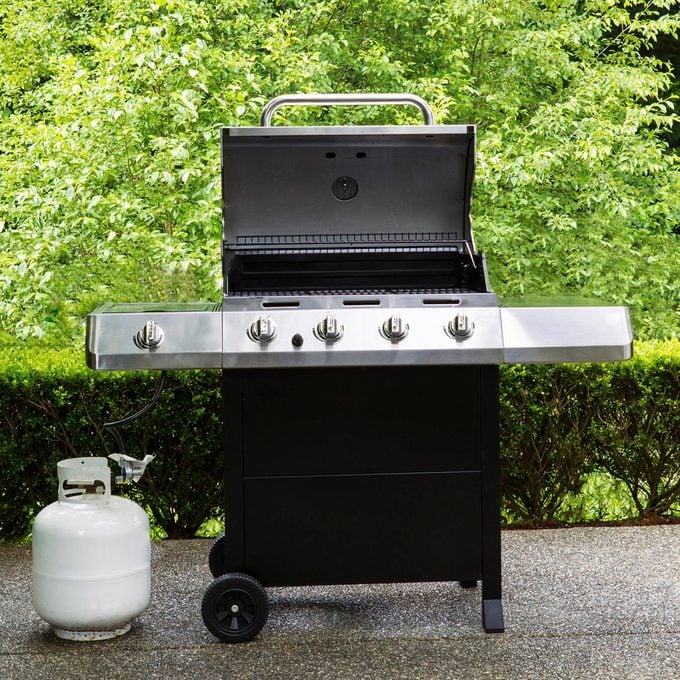 TAB1962/GETTY IMAGES
TAB1962/GETTY IMAGES
How Long Will a Propane Tank Last?
A standard 20-pound propane tank typically provides about 20 hours of grilling time. It’s not a bad idea to have a spare tank on-hand, just in case.
How to Store Propane Tanks Safely
For safety, propane tanks should always be stored outside. It’s okay to store the tank underneath the grill, especially if the grill is covered. It’s not okay to store the tank inside a garage or a shed.
You can keep the propane tank connected to the grill, but be sure to close the valve fully after each grilling session. If you’re not planning to use the grill for a while, you can disconnect the tank.
Connect a Grill to Your Home Gas Line
Gas grills are sold for use with propane tanks (or LP) or natural gas connected to your home. Some grill manufacturers sell a conversion kit while others (like Weber) don’t allow you to convert from one to the other. You’ll want to decide upfront which one will work best for you, as converting the grill may void the warranty.
Natural gas tends to be less expensive, and you don’t have to worry about filling up the tank before grilling. Some say it burns cleaner than propane, but it also doesn’t burn as hot. If you have an outdoor kitchen setup and you grill regularly, natural gas may be the way to go. But propane is generally a good place to start for beginners or infrequent grillers.
Gas Grill Maintenance
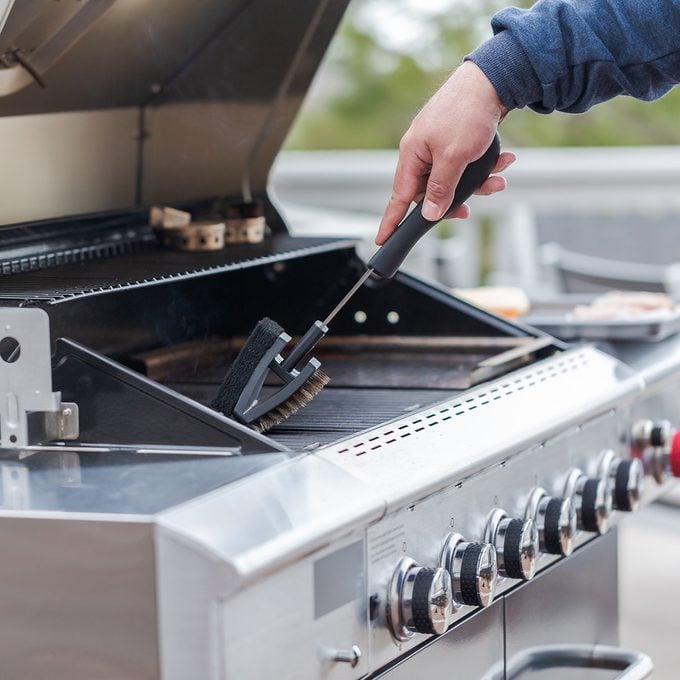 Arina P Habich/Shutterstock
Arina P Habich/Shutterstock
The best way to ensure your gas grill will last is to keep up with the maintenance. That means doing more than just cleaning the grill grates before and after every use. For starters, you’ll want to keep the grill covered when it’s not in use. Exposing the grill to the outdoor elements can lead to excess wear and tear, and it can also cause the metal components to rust.
From there, it’s all about regularly inspecting the grill’s components and keeping them clean. Perform an annual inspection before you fire up the grill for the season. Check the gas line with soapy water to make sure there aren’t any cracks or holes, and check the grill inside and out to ensure no pests have moved in.
Depending on how much you grill, you’ll want to clean the entire grill—inside and out—with warm, soapy water one to three times a year. That includes dissembling the inside components as well as wiping down the exterior. On a regular basis, you’ll also want to clean the grill grates and wipe down the outside of the grill. If your grill has a grease trap or a drip pan, let the grill cool down before emptying and cleaning these pans. Overflowing grease is a sure-fire way to start a fire.
Learn more about how to clean your grill with our complete guide.
What to Cook on a Gas Grill
 Taste of Home
Taste of Home
Oh man, the possibilities for gas grill cookery are basically endless! We’ve grilled everything from chicken and seafood to whole and sliced vegetables. If it can be cooked on the stovetop or in the oven, it can probably be grilled.
Prepare your grill for direct heat to cook burgers, steaks, pork chops, kebabs and vegetables. Or, if slow-cooked roasts and whole chickens are more your style, use the grill with indirect heat instead. Grilling is a great way to keep the heat out of the house, so go ahead and grill your pizza and make chicken wings on the grill instead of in the deep fryer. You can even bake a cake on the grill!
Give your newfound gas grilling knowledge a try with our 100 best grilling recipes.
Our 100 Best Grilling Recipes
Margarita Chicken
You're going to be drinking margaritas this summer anyway, so why not take it a step further? By marinating your chicken in margarita mix, you get a really nice lime flavor that's enhanced with garlic.
Go to Recipe
Kentucky Grilled ChickenKentucky Fried Chicken? What about Kentucky grilled chicken! The basting sauce is a simple combination of Worcestershire sauce and hot sauce that's the perfect complement to any outdoor meal.
Gourmet Burgers with Sun-Dried TomatoGuests will never see this coming! The goat cheese filling in these burgers is a pleasant and refreshing surprise. In comparison to American cheeseburgers, these really do feel gourmet!
Grilled Corn in HusksYou know it's summer when you can finally enjoy a nice corn on the cob. No need for anything crazy; some butter and parmesan are enough to make this side dish a masterpiece.
Feta Salmon SaladThis simple
grilled salmon salad is a whole meal. The light but effective spice blend brings out a garlic and ginger flavor. It all comes together beautifully on a bed of spring mix salad!
Steak Sandwiches with Crispy OnionsSteak with a chimichurri-inspired mayo sauce and a side of onion crisps sounds like a delightful meal. But all of that combined in a sandwich with a side of fries sounds even better! This mouth watering sandwich is a grill master's dream lunch.
Grilled Caesar Chicken BreastsMarinated overnight in creamy Caesar dressing, this chicken is tender and full of flavor. This easy grilled recipe is as good as it gets!
The Best Grilled Sirloin Tip RoastThis lean but flavorful meat is going to be the star of your next cookout! You won't regret trying it with the optional horseradish-thyme butter.
Salmon Grilled in FoilTin foil grilling isn't exactly a new technique, but this curry salmon will make you feel like you've been doing it wrong this whole time! The flaky fish is best served with potatoes or a nice salad.
Grilled Elote FlatbreadHere's a topping you haven't thought of! This fun twist on a classic Mexican dish will be your go-to snack of the summer.
Grilled Romaine SaladYou can grill a steak so why shouldn't you be able to grill a salad? The simple dressing really sends it over the top.
Grilled Onion & Skirt Steak TacosThinking about a steak taco is enough to make your mouth water. But thinking about these beer marinated tacos is enough to get you up and on your way to the store! Use leftover meat for quesadillas the next day.
Grilled Chicken SaladNever underestimate the power of a good salad. This perfect picnic meal will be your summer showstopper!
Halibut Soft TacosThese halibut tacos are almost too pretty to eat! The sweet and spicy mango salsa will have you looking up what else you can put it on. Spoiler alert: it doubles as a nice salad dressing.
Grilled Flank SteakThis sweet and tangy marinade is used for both the veggies and meat. You'll find yourself coming back to this recipe, especially when you have company coming over.
Brined Grilled Turkey BreastThis sweet and spicy turkey is super moist. The flavors are subtle, but present enough where you'll think of this recipe even around Thanksgiving.
Grilled Mahi MahiWant a change of pace at your next cookout? Grill up this mahi mahi with tropical fruit salsa and watch as everyone asks for the recipe. It's sweet, tangy and delicious!
Beef ‘n’ Pork BurgersAdding pork to your burgers is a grill master's best kept secret. The bacon really drives home the smokiness.
The Best Baby Back RibsThey're the best for a reason! The zesty ribs are always what you need them to be: tender, flavorful and great for a party.
Chicken Strawberry Spinach SaladThis sweet poppy seed dressing is everything you want in a salad and more. The grilled chicken, strawberries and almonds are the perfect combination of savory, sweet and crunchy!
Grilled AsparagusGrilled asparagus makes a perfect side dish for grilled meats. It's ready in just 20 minutes and has a nice barbecue sauce taste.
Grilled Chorizo and Shrimp PaellaThis easy shrimp and chorizo paella is a must have this summer. The mango and lime give it a tangy flavor that goes along perfectly with the grilled chicken sausage. You won't want to miss out on this colorful meal.
Artichoke Steak WrapsReady in just 30 minutes, these artichoke steak wraps are a must have! Artichokes are rarely the main event in a meal, but these wraps will have you second guessing that notion.
Lemon-Dijon Grilled Salmon Foil PacketThis tin foil salmon is a winner! With almost no clean up, you can just focus on stocking up your pantry for the next time you make this lemony dish.
Easy Grilled Corn with Chipotle-Lime ButterYou had us at easy! This Memorial Day corn has a wonderful flavor with only five ingredients! If you're not a fan of cilantro, parsley is the perfect replacement.
Grilled Steak TacosSummer goes hand in hand with steak tacos. But this recipe ranks amongst the best. With a spicy aioli and ribeye meat, you can't ask for better!
Grilled Fruit Phyllo TartFruit salad on a flaky crust? Don't mind if we do! The sweet cream cheese and lemon flavor on such a colorful spread makes it the perfect addition to any summer table.
California Burger WrapsBurgers can sometimes seem heavy, but these wraps are completely void of that feeling. With fresh ingredients and a lettuce wrapping, you won't miss the bread at all!
Bratwurst and Chicken KabobsYou can get the best of both worlds with these double meat kabobs! The chutney packs a bit of heat with the pepper jelly.
Aloha BurgersBurgers and fruit might just be your new go-to debate topic. As for us, we can't get enough of it! These Hawaiian-inspired burgers are smoky from the bacon but fresh from the pineapple. See for yourself!
Grilled BruschettaThis appetizer is perfect at any party. It's the right amount of sophistication while still remaining simple. It'll really dress up a table!
Martha’s Fish TacosAll hail Martha! These tacos are light but filling. The best part is you can serve them hot or cold.
Big John’s Chili-Rubbed RibsYou can't go a whole summer without ribs. It's impossible! So why not just have the best of the best? Now we don't know Big John personally, but we'd love to thank him for this Asian-inspired recipe.
Cajun Grilled ShrimpThis Cajun marinade is made spicy with cayenne pepper. That heat is cut through with the lemons for an explosion of flavor. You'll find yourself coming back to this recipe for sure.
Grilled Pork and Poblano PeppersThis spice-rubbed pork is not for the faint of heart. It's a party in your mouth and a party at your table! Guests will request you make it every cookout.
Grilled Lobster TailsLobster tails aren't reserved for restaurants. And they're easier to make than you think! If you find yourself ordering lobster out a lot, give this recipe a spin.
Grilled Stone Fruits with Balsamic SyrupA balsamic glaze can turn any dish from good to great. Well, maybe not any but a case can be written for salads and toast and fruit and huh, maybe that is everything. The grilled fruit practically melts in your mouth. So what are you waiting for!
Grilled PattypansIf you've never tried pattypan squash, now is the time! This side dish will change the way you think about fruits and veggies and how they can come together.
Grilled Pork Tenderloin with Cherry Salsa MoleChocolate, cherries and pork? Say no more! The hint of spice in this dish is drool inducing.
Grilled Veggie PizzaIf you have any leftover veggies on hand, toss them together on a veggie pizza. It's a fun lunch—or even dinner—for the whole family!
Lime and Dill Chimichurri ShrimpThis lime and dill chimichurri shrimp has a brighter flavor than other chimichurri dishes. This makes it all the more enticing for summer cookouts.
Grilled Italian Sausage SandwichesIf you're in the mood for Italian, you've come to the right sandwich. This meal might seem more laid back but that's exactly what makes it perfect for a hot summer day.
Spiced Grilled Chicken with Cilantro ButterOnce you've had cilantro lime butter, you'll immediately start wondering what other amazing butter flavors you might've missed out on. The spiced chicken is nothing short of a crowd pleaser.
Easy Grilled SquashThis recipe is as simple as it gets. With produce, it's best to just bask in the natural flavors and that's exactly what this side dish highlights.
Shrimp ‘n’ Scallops Tropical SaladThis zippy fruit salad is cut through with smoky shrimp and scallops. If you love seafood, you'll love this salad!
Steak Sandwich KabobsThere's nothing more fun than putting food on a stick. With bread, steak, peppers, onion and cheese, you can enjoy a whole meal on the go!
Cedar Plank Salmon with Blackberry SauceThis salmon is a nice balance of sweet, smoky and spicy. Maybe you've never thought about salmon and fruits before this moment, but now you'll only wish you'd thought of it sooner.
Grilled Basil Chicken and TomatoesThis quick basil chicken comes together with tomatoes to make a dish reminiscent of a deconstructed salad. The recipe is simple, easy and perfect for a busy weeknight.
Grilled Angel Food Cake with StrawberriesThis patriotic dessert introduces our favorite summer ingredient, balsamic vinegar, to the world of desserts. After trying this cake you'll really believe an angel made it.
Lemony Shrimp & TomatoesLemon and shrimp go together like peanut butter and jelly. This quick marinade makes for a great lunch on the go!
Grilled Huli Huli ChickenThis overnight marinated Hawaiian chicken is well worth the wait. With brown sugar, ginger and soy sauce, you can use this marinade for anything!
Tacos on a StickThese taco kabobs are as fun to assemble as they are to eat! A sour cream dipping sauce is must.
Mango & Grilled Chicken SaladWhen it's hot out, you want nothing more than to bite into a juicy piece of fruit. This mango chicken salad gives all of that and more with added crunch from the snap peas.
Beef SuyaSuya is a spiced skewer dish from West Africa, namely Nigeria. This more mild, but still spicy, version pays homage to the peanut and ginger present in a more traditional beef suya.
Grilled Vegetable PlatterYou really can't go wrong with grilled veggies. This simple honey and balsamic vinegar marinade proves once again that balsamic vinegar is the secret to a great cookout.
Cola BurgersPeople soak their meat in sodas all the time so why not just put it in a sauce? French salad dressing and cola meet to make a smash hit!
Grilled Honey-Balsamic Glazed FruitSweet and salty lovers unite! We might have just found your new favorite dessert. Peaches with honey and balsamic vinegar is the best way to end a barbecue.
Easy Marinated Grilled Flank SteakThis three-ingredient marinade will be your new go-to for steak. You probably already have the ingredients in your pantry!
Grilled Chicken and Mango SkewersThese skewers bring all the best flavors of summer together. This colorful plate is as Instagram-worthy as it is tasty.
Fresh Artichokes with Lemon-Yogurt DipArtichokes are made to be enjoyed simply and with this tangy lemon-yogurt dip you can do just that. The perfect appetizer for an epic cookout, you won't want to underestimate the veggie again.
Grilled Peach, Rice & Arugula SaladOne reviewer wrote that she'd give the recipe 10 stars if she could, and we couldn't agree more! This summer salad is not a want but a need. The grilled peaches are an impeccable touch.
Hawaiian Beef SlidersYou wear a jacket when it's cold just like you eat pineapple when it's hot. And what better way to enjoy it than in one of these dynamite burgers? They're sweet and savory with a nice kick from the jalapeños.
Ginger Salmon with Cucumber Lime SauceWe're always looking for more ways to dress up salmon. And you can't disappoint with lime and ginger! This winning combination is well seasoned and colorful.
Grilled Figgy PiesA figgy pie is exactly as it sounds: a combination of figs, maple, walnuts and creamy mascarpone. These hand held pies will go fast!
Key West Flank SteakAnyone from Florida knows you can't have a steak without onions and lime. Even better if it's served with a side of rice and fried plantains.
Bacon & Swiss Chicken SandwichesThis chicken sandwich is restaurant quality! And just when you thought it couldn't get any better, you can make extra honey mustard on the side for dipping.
Grilled Brussels SproutsI don't know about you, but I'm feeling like I could eat all four servings of these kabobs myself! The Brussels sprouts and peppers are light with a bit of a kick.
Cake & Berry Campfire CobblerYou know what cookouts need more of? Desserts! This cobbler is the best way to close out the night.
Chicken Skewers with Cool Avocado SauceThe slightly hot chipotle-lime chicken skewers cool down immediately with the avocado sauce. The sauce is creamy and addictive!
California Burger BowlsLike Chipotle, you can choose whether to have your burgers as is or in a bowl. The difference is that in a bowl you can really load them up! Veggies and even fruit can adorn your hamburger bowl.
Grilled Sausage-Basil PizzasThese little pizzas will change the way you plan a cookout. Made on flatbreads or naan, they're fun for the whole family. So go as crazy as you want with toppings!
Grilled Jerk Shrimp Orzo SaladStarting with the orzo and ending with the shrimp, this salad has everything we love! It's easy, delicious and made with any veggies and meats that you have on hand.
Tarragon AsparagusAsparagus is an underrated veggie that rarely sees new ways to eat it. Until now! This tarragon-honey marinade is exactly the change of pace we were looking for.
Honey Chipotle RibsThese honey chipotle ribs are lip-smacking good! The sauce can be made up to a week in advance for the perfect grilling experience.
Stuffed Grilled ZucchiniThese zucchini boats are stuffed with cheese, garlic, onion and breadcrumbs. They're the perfect accompaniment to your favorite grilled meat!
Tomato, Avocado and Grilled Corn SaladSomething about this salad feels like laying on the beach. It's refreshing, it's warm and it feels like summer!
Chicken Alfredo with Grilled ApplesYou wouldn't normally think that Alfredo and apples go together but once you try it you won't go back.
Sweet Sriracha WingsThese sweet and hot wings are going to make a splash at your next outdoor party. They're made sweet with orange juice and honey. It sounds unlikely but somehow makes perfect sense!
Cilantro Lime ShrimpThis garlic and lime marinade will wow at your next cookout. The flavor is spot on and the preparation is easy enough to add it into your meal rotation.
Chicken and Zucchini Foil PacksYou can make this foil wrapped dinner with any vegetables you have on hand. But over the summer, we can't resist a zucchini dinner! It's nice and simple with the tomato paste giving it a spaghetti sauce flavor.
Honey-Mustard BratsThis honey mustard is given an extra bite with mayo and steak sauce. The quickly assembled brats make for a simple but unforgettable meal.
Grilled BruschettaThis is my go-to appetizer in the summer when tomatoes and basil are fresh from the garden. The balsamic glaze takes this bruschetta recipe over the top. I like to use a Tuscan herb- or basil-infused olive oil for this. But, it's great with just plain olive oil, too. —Brittany Allyn, Mesa, Arizona
Lemon Garlic MushroomsThese lemony grilled mushrooms might take some of the spotlight off the main course. They're just that good! Skewers ensure that they're grilled to perfection.
Jalapeno Popper Mexican Street CornCombine your two favorite summer snacks in one with this jalapeño popper corn! It's the BOGO you've been waiting for with all the crunch and spice you could ask for.
Crab & Shrimp Stuffed SoleTurn your cookout into a five-star restaurant with this seafood stuffed sole. Just add a salad and baguette, and you're all set.
Grilled Chicken Salad with Blueberry VinaigretteYou've seen peaches on burgers and mangoes in salsas, get ready for the best of the best. This contest-winning blueberry vinaigrette will change the way you view fruit in salads.
Grilled CabbageYou'll be surprised by how good this is. Gone are the days of begging your kids to eat their veggies. With this on the side, their plates will be cleared!
Grilled Southwestern Potato SaladThis potato salad is the best side dish for some classic steak tacos. With sour cream, corn and lime, it has a nice pop to go with your Tex-Mex dinner.
Spicy Grilled EggplantThis Cajun grilled eggplant is the most versatile dish of the season. It pairs well with any meat and takes up way more space than your average veggies.
Grilled Apple Tossed SaladApples and bleu cheese? Yes please! This salad is a beautiful storm of crunchy, sweet and savory toppings. The balsamic dressing is the glue that ties it all together.
Grilled Steak and Mushroom SaladSteak and mushrooms are an unbeatable combination. This light dinner is packed with protein while still tasting like a vinegar-Dijon dream. If you enjoyed this, then you must try our favorite
vegetarian grilling recipes.
Bratwurst SupperLooking for a cozy campfire dinner? Well look no further! This all-in-one meal is made special with a secret ingredient: love! Just kidding, it's an onion soup packet. But close enough, right?
Fruit ‘n’ Cake KabobsWe love grilling and we love cake. So grilled cake has to be a stroke of genius, right? These fruit and pound cake kabobs are everything you didn't know you were missing.
Burger AmericanaEver had peanut butter and bacon on a burger? What about coleslaw? Try out any toppings that strike your fancy with these versatile, everyday burgers.
Grilled Loaded Potato RoundsMeet your new go-to recipe for outdoor potlucks! These easy sides can be topped with anything you like on your baked potatoes.
